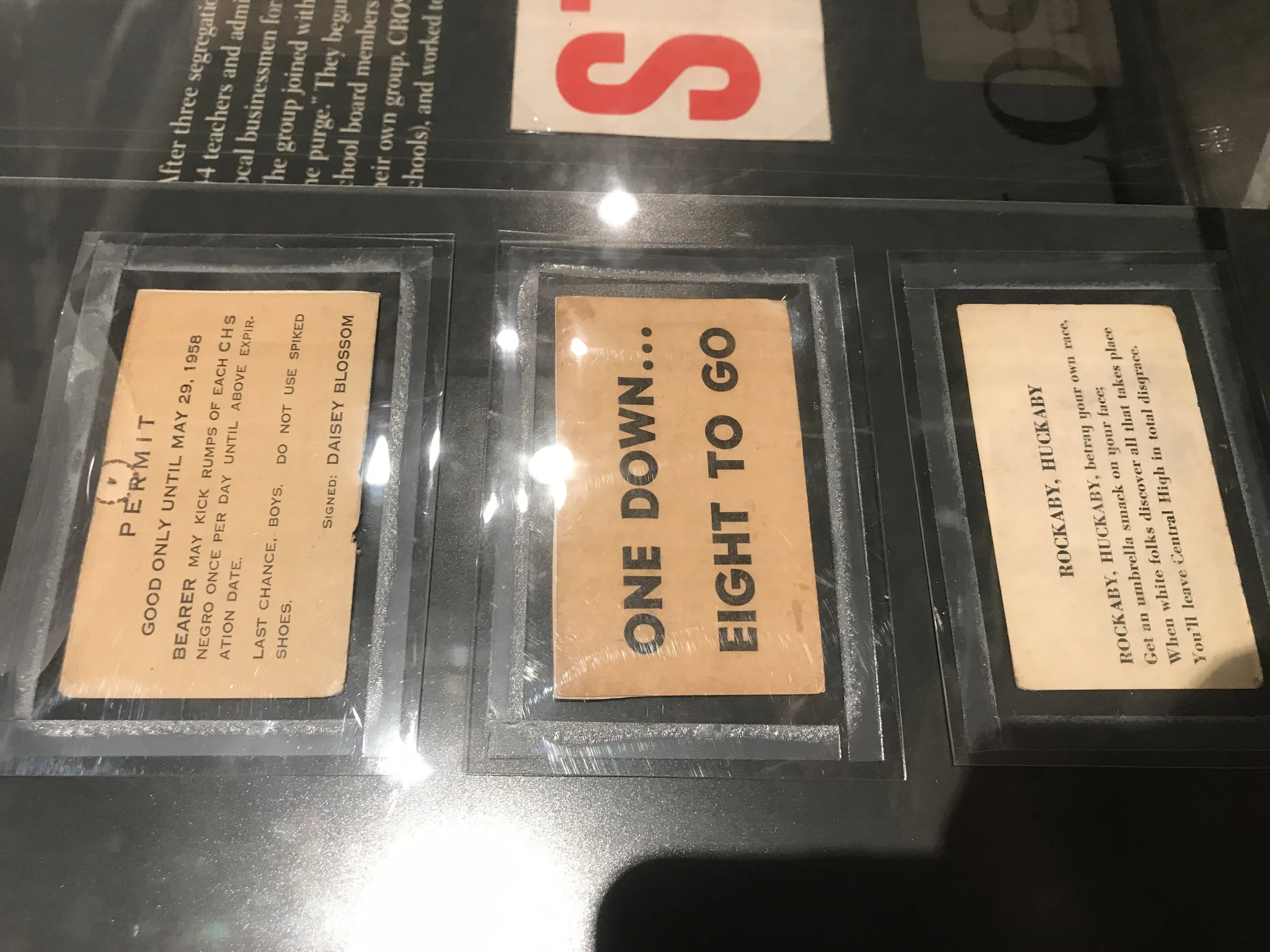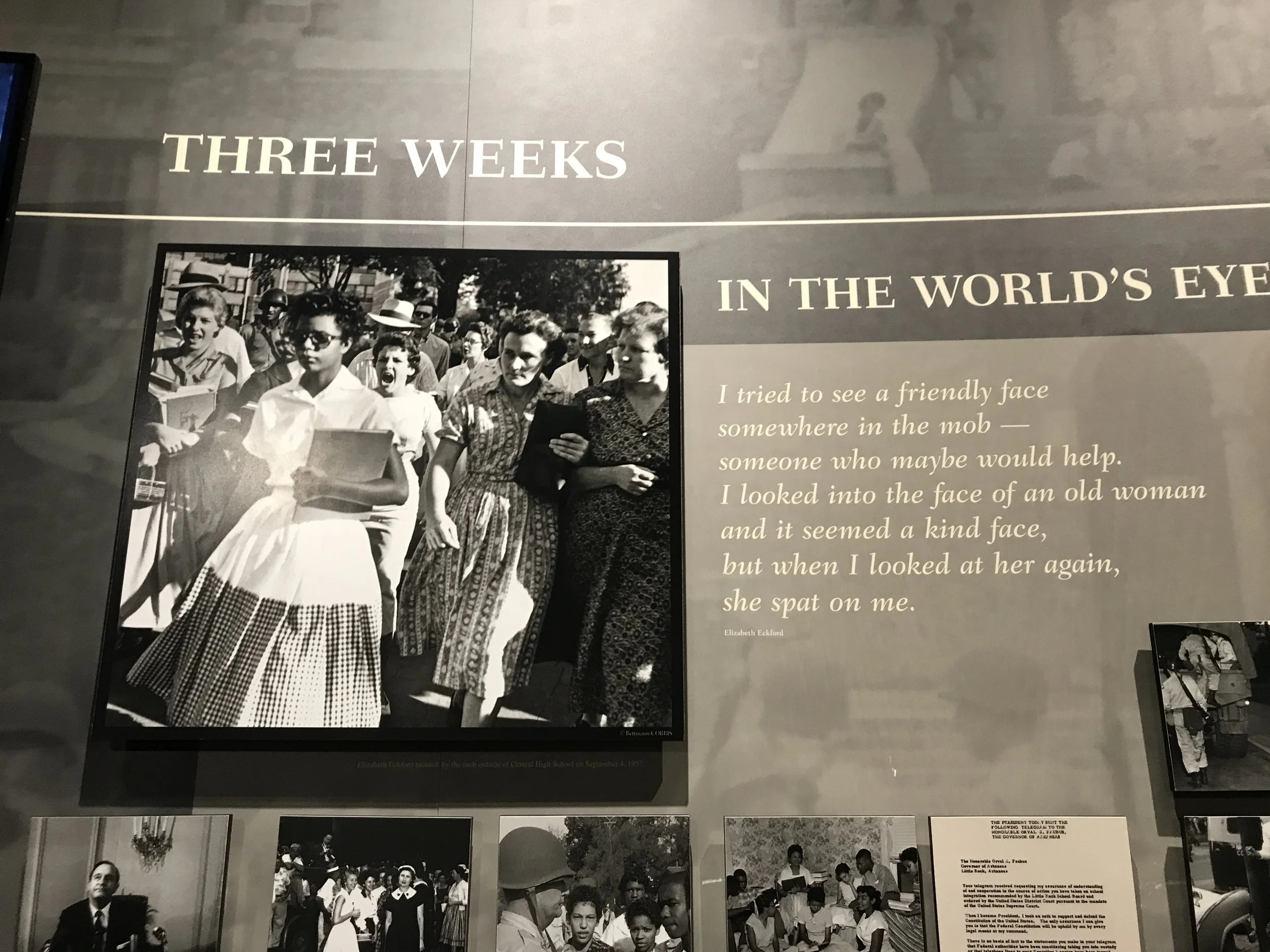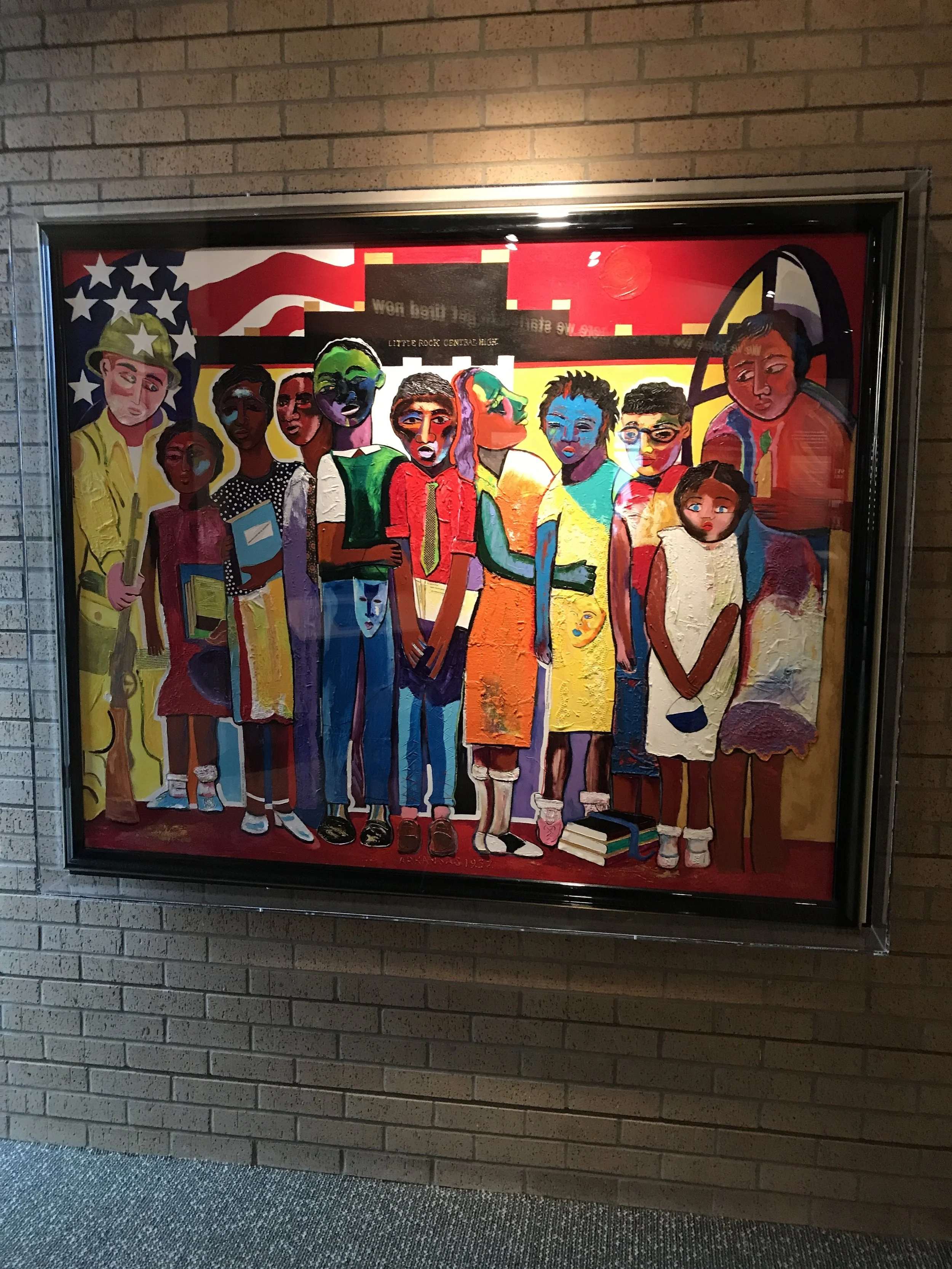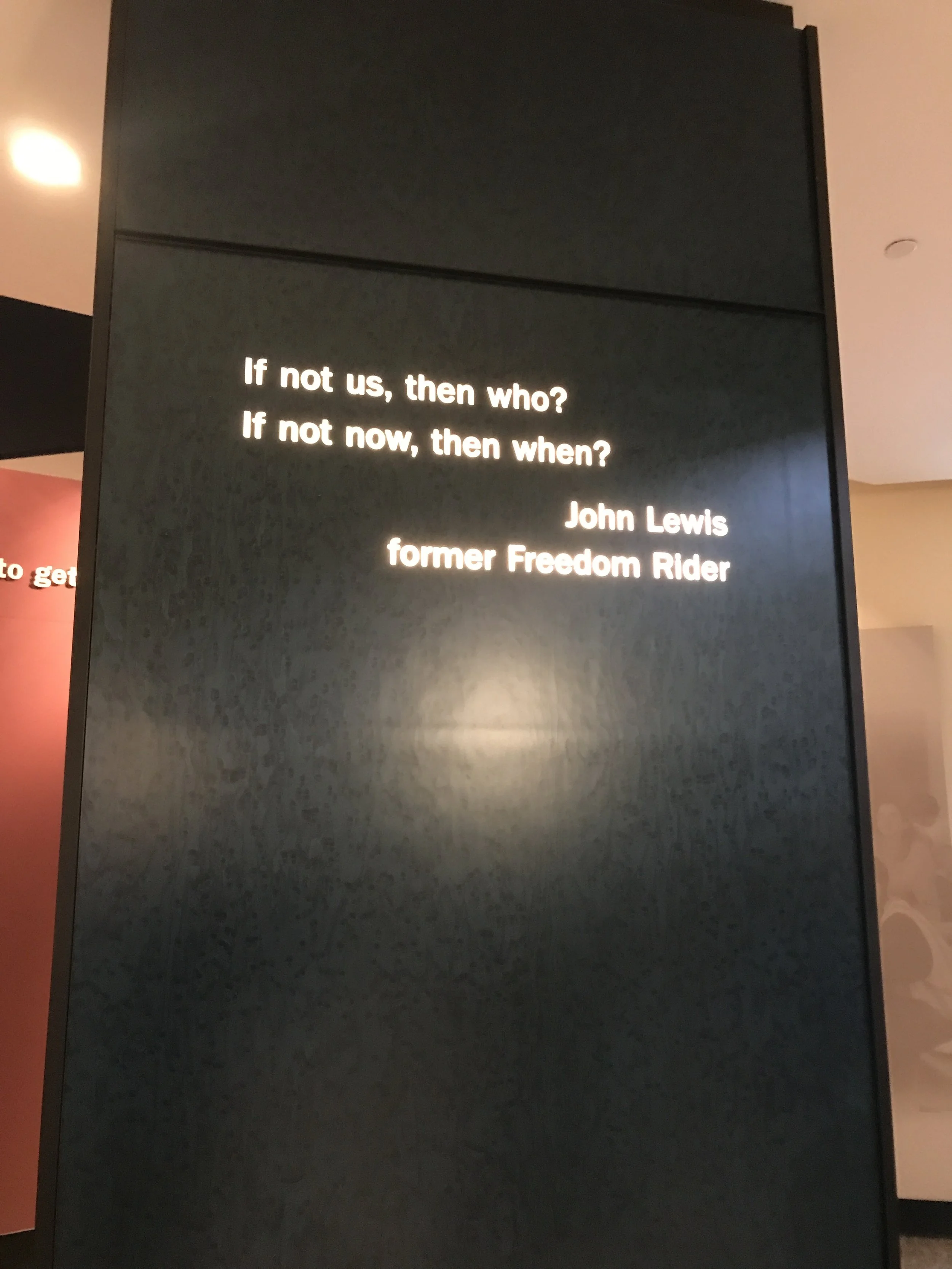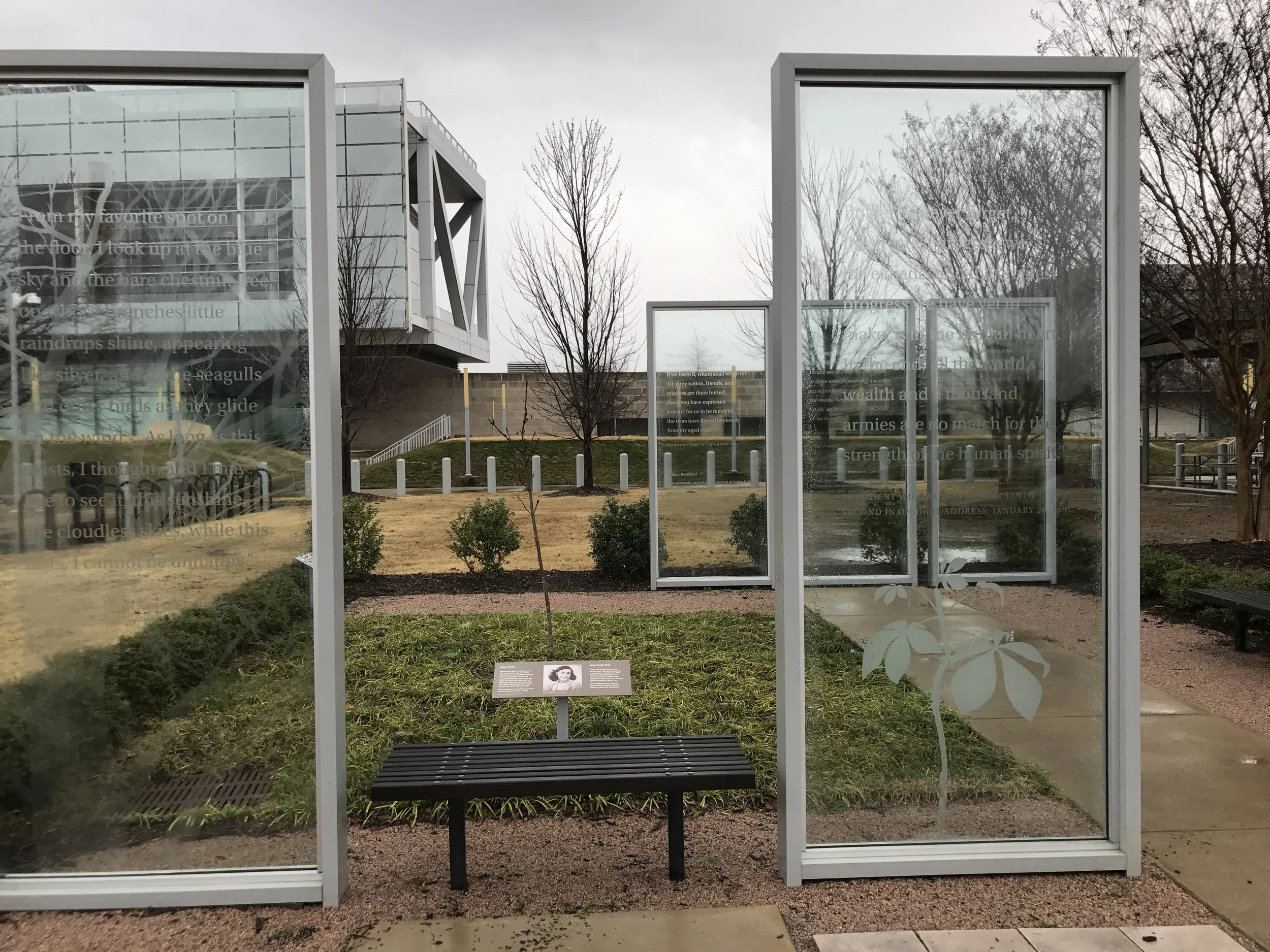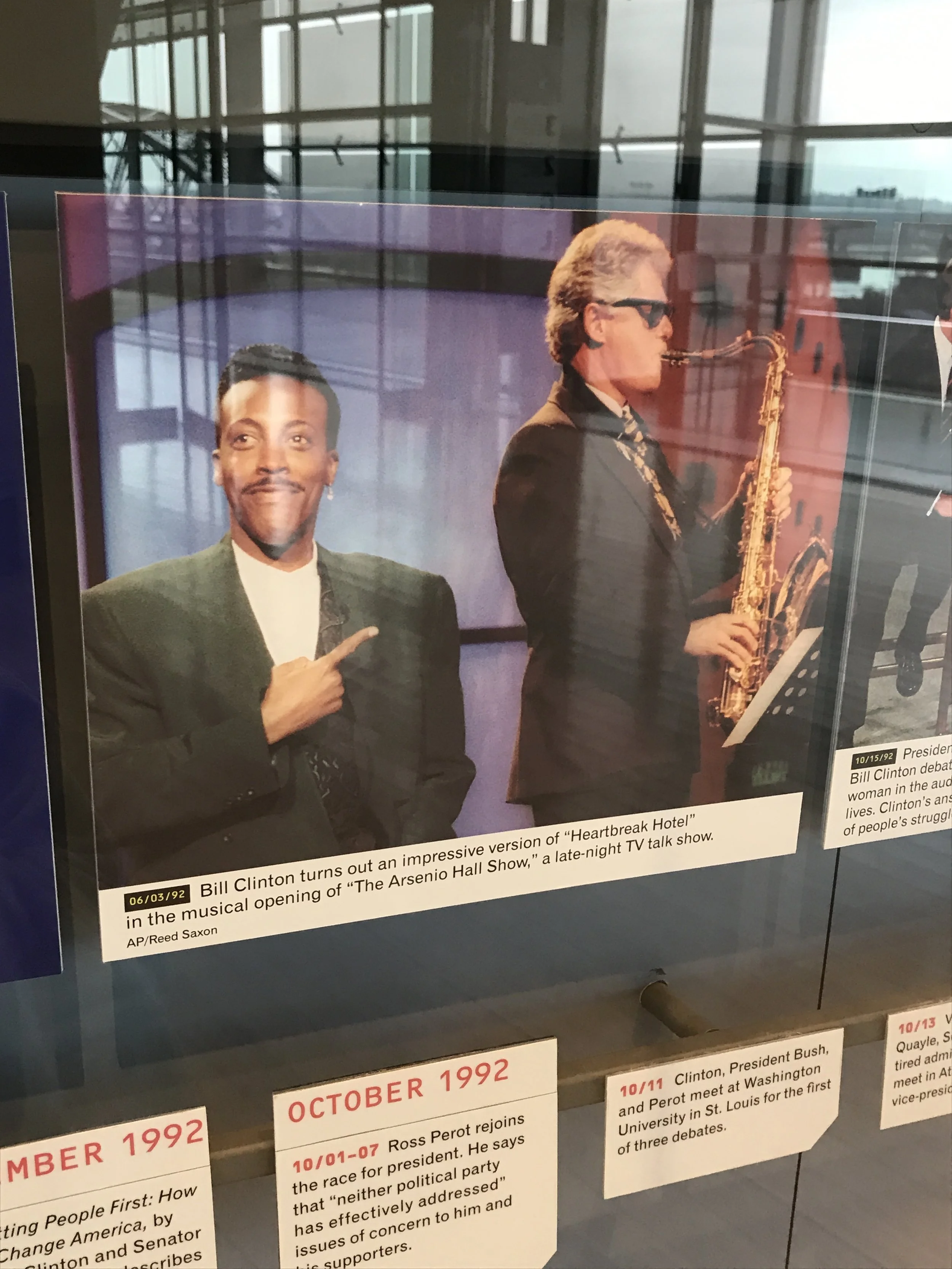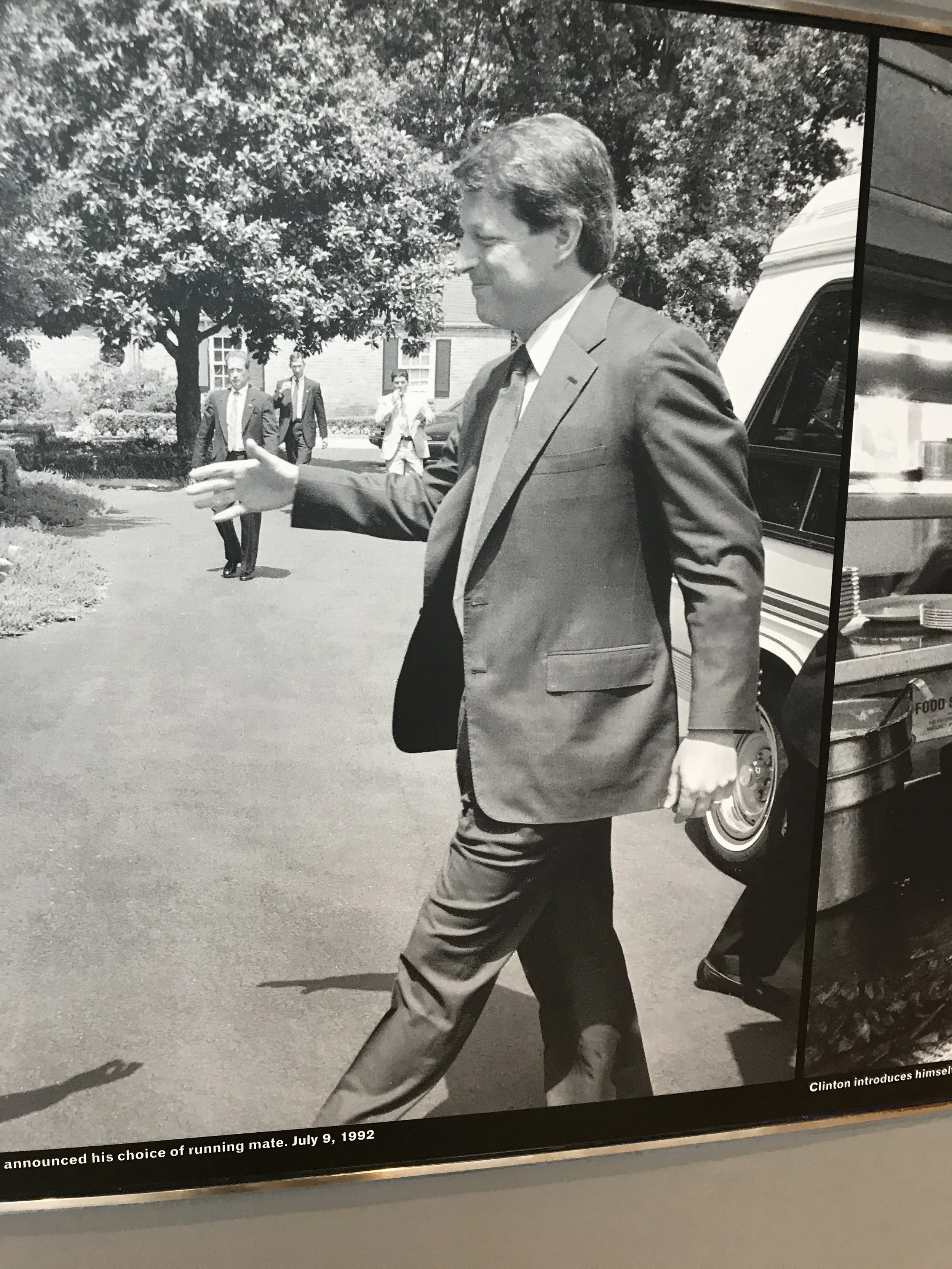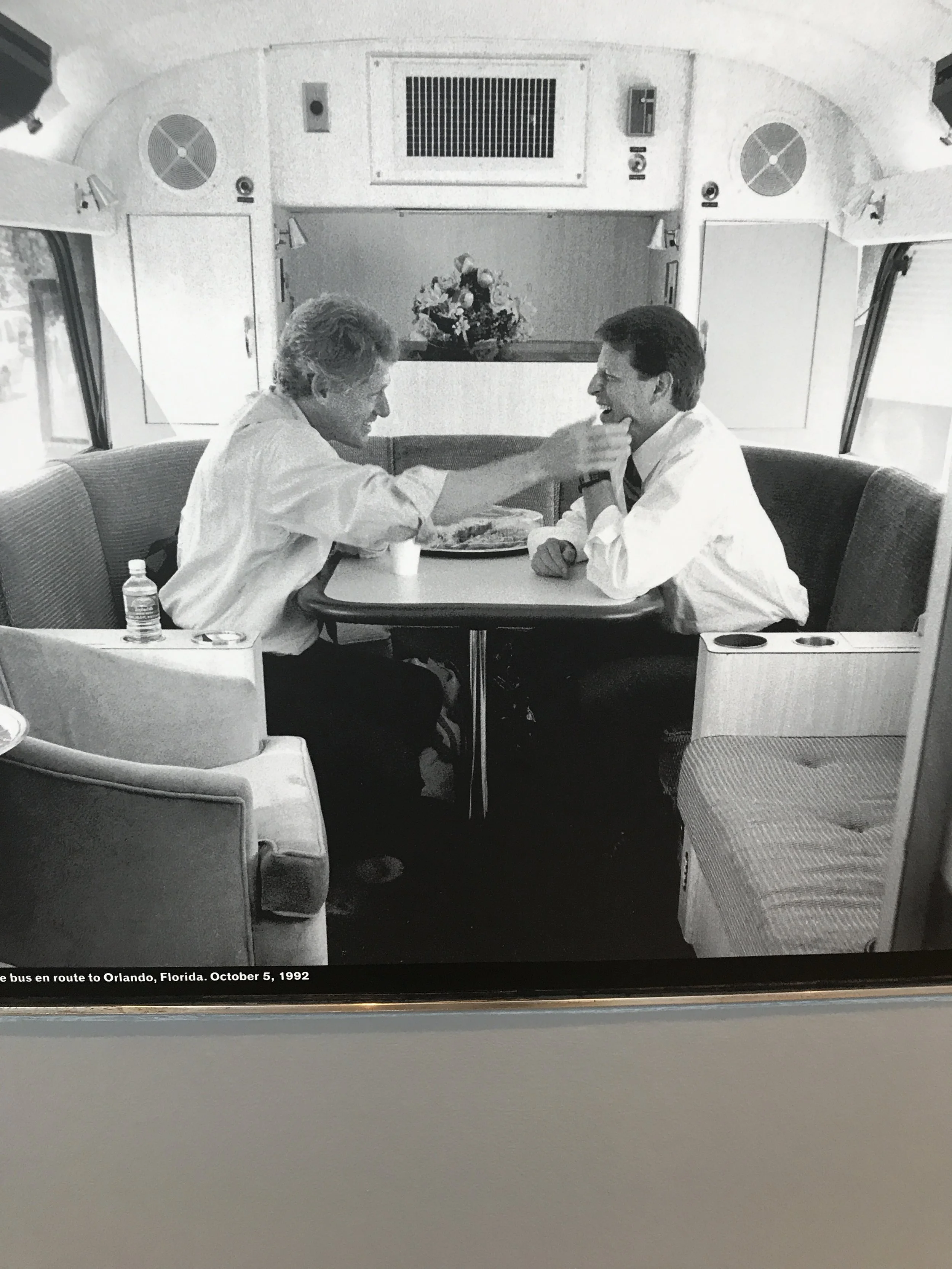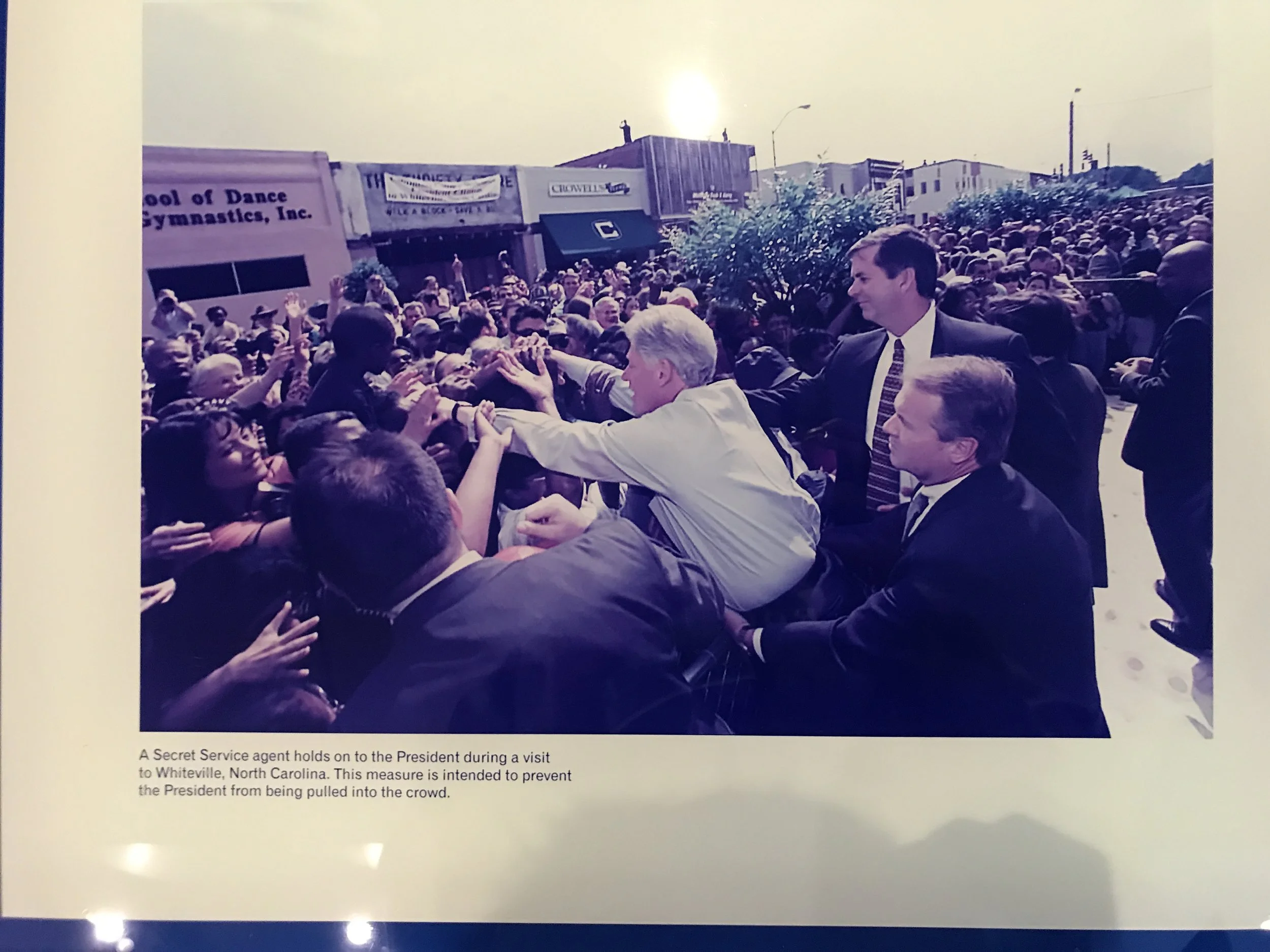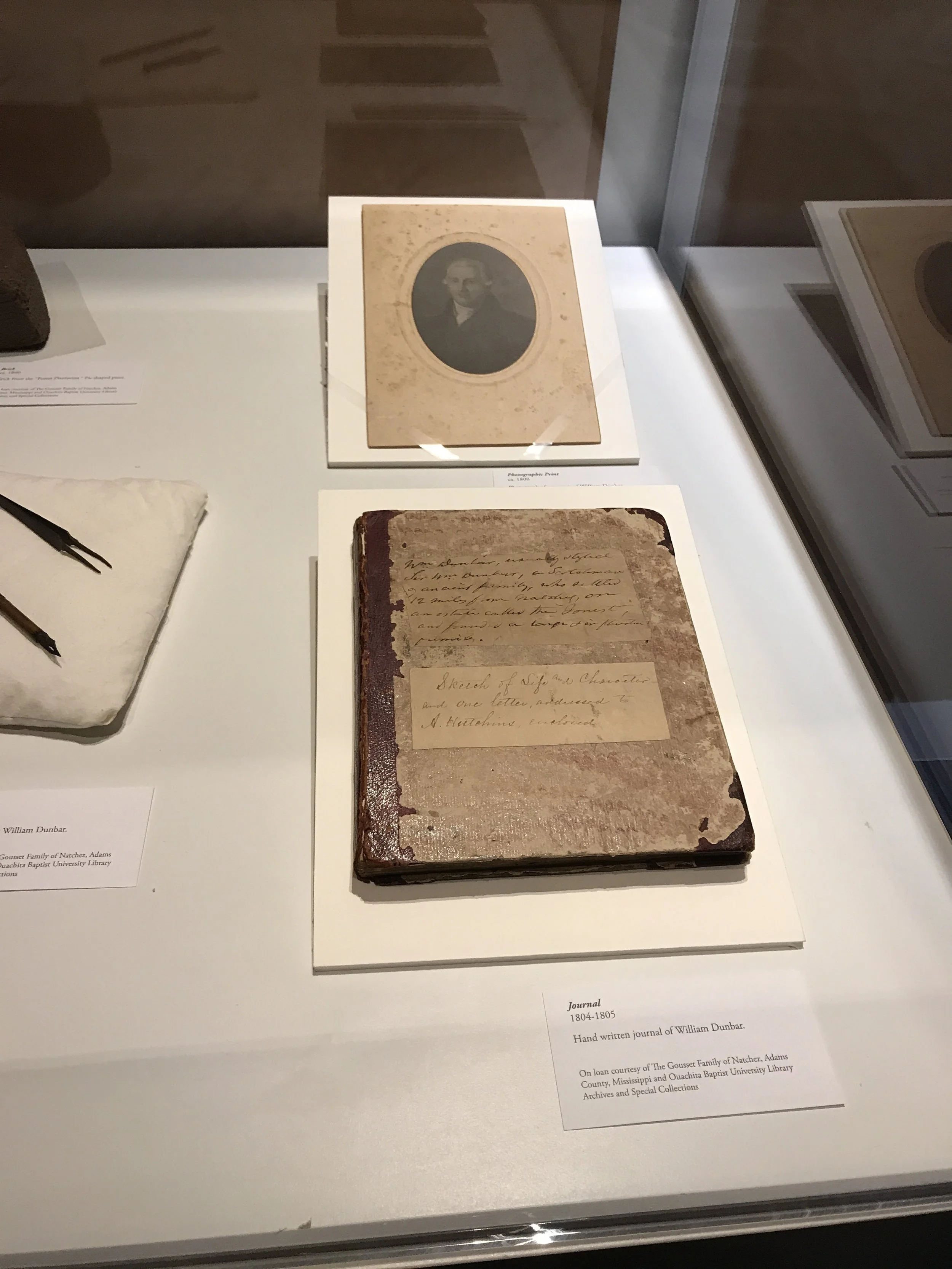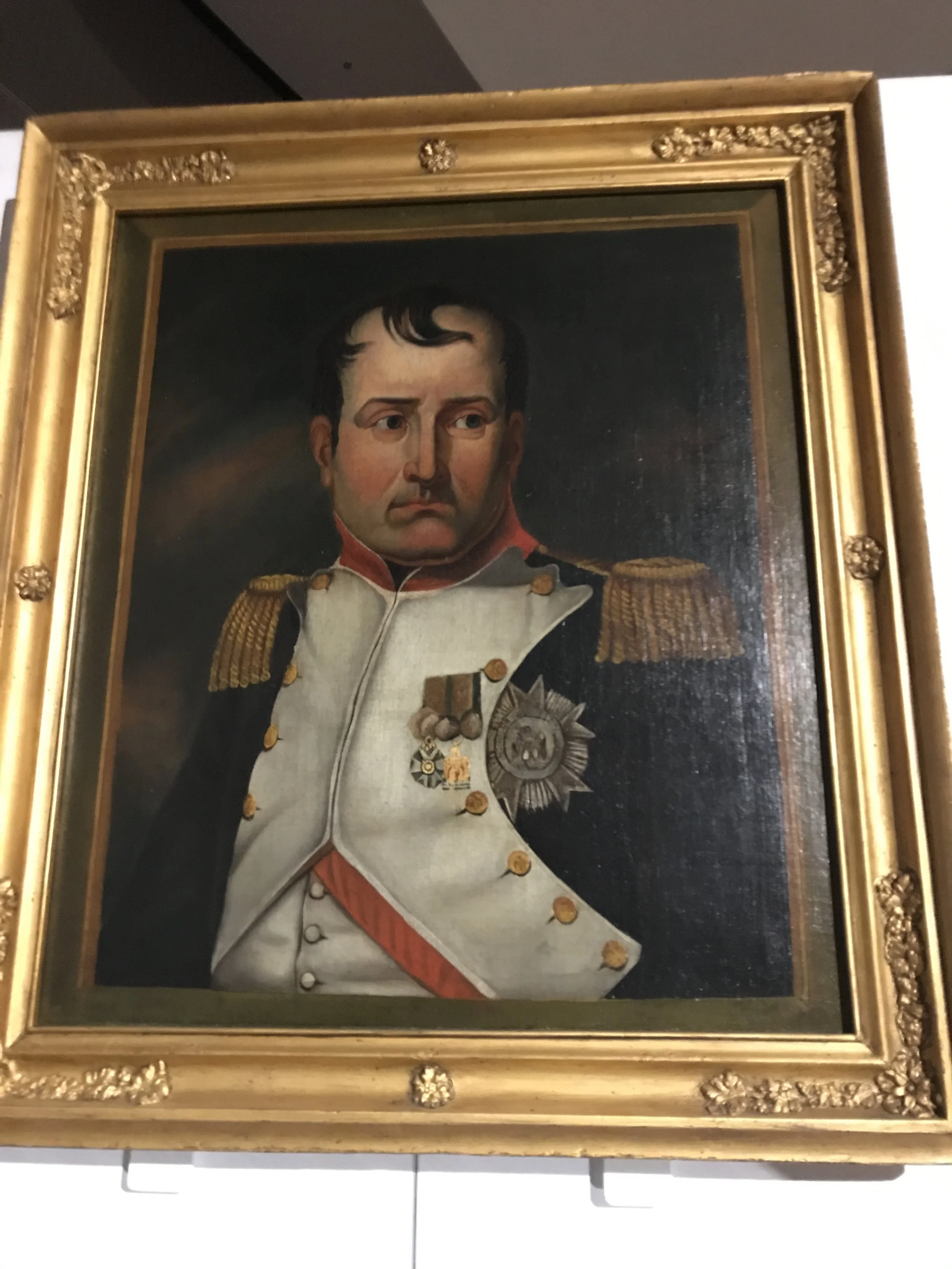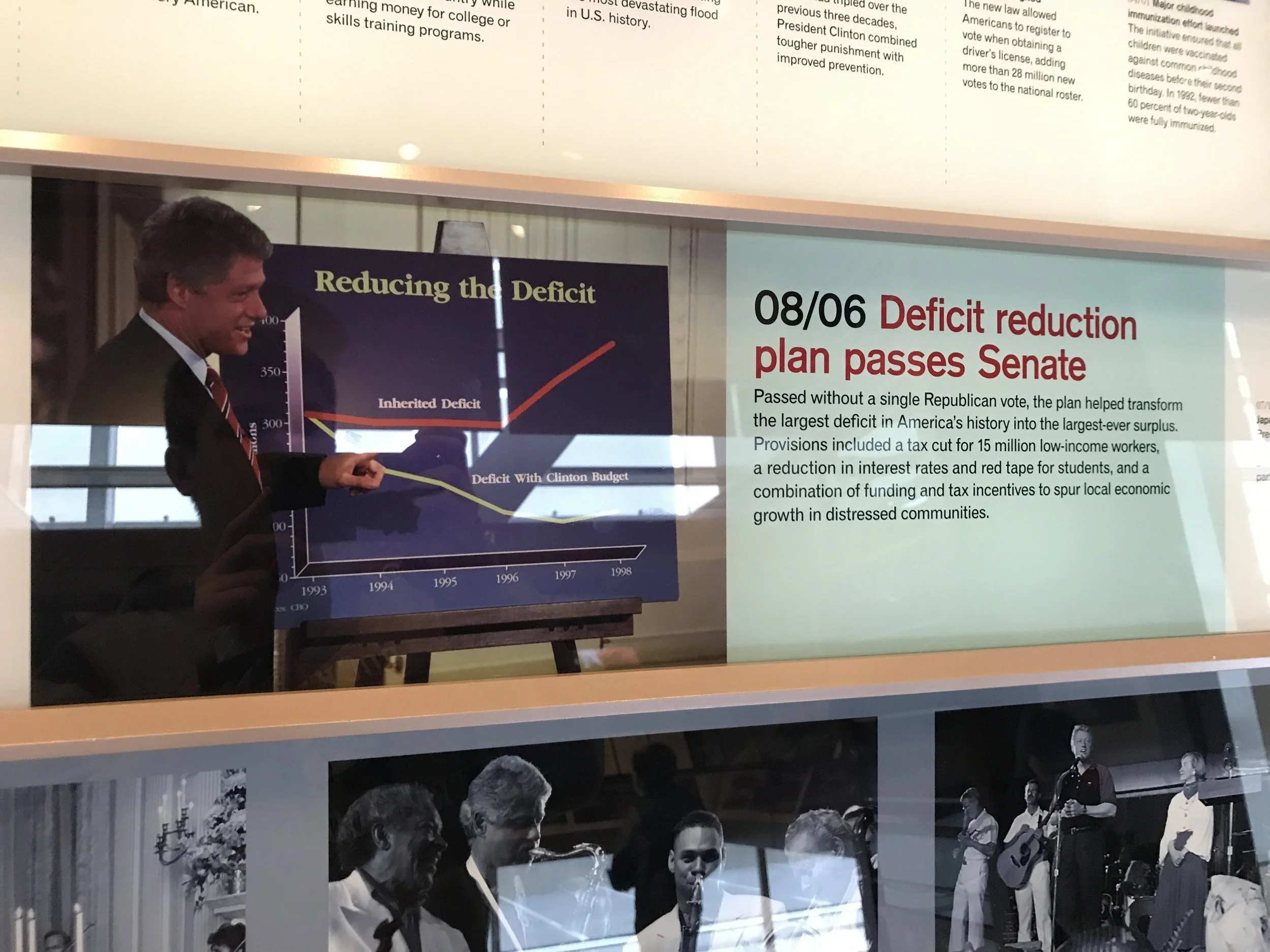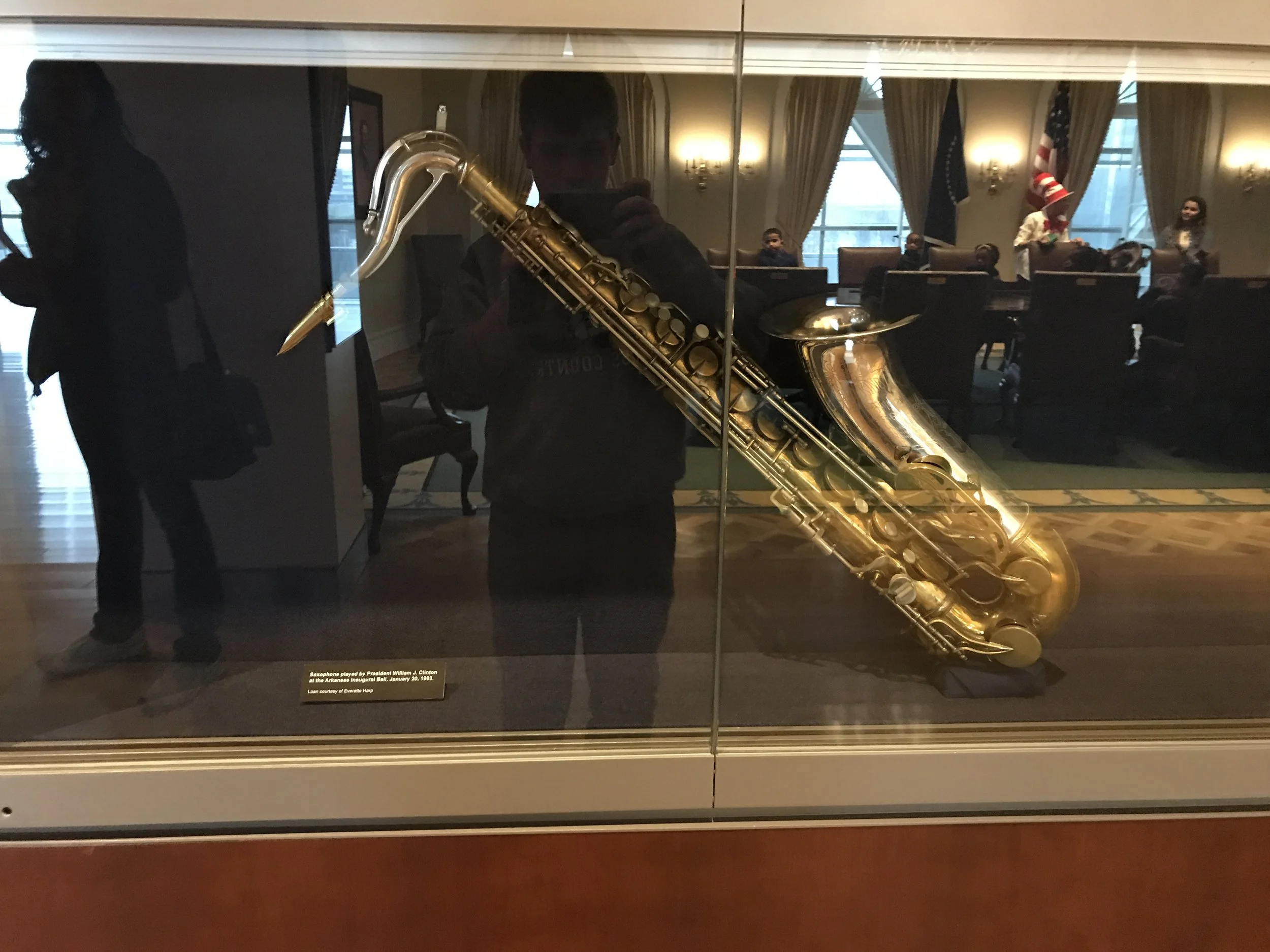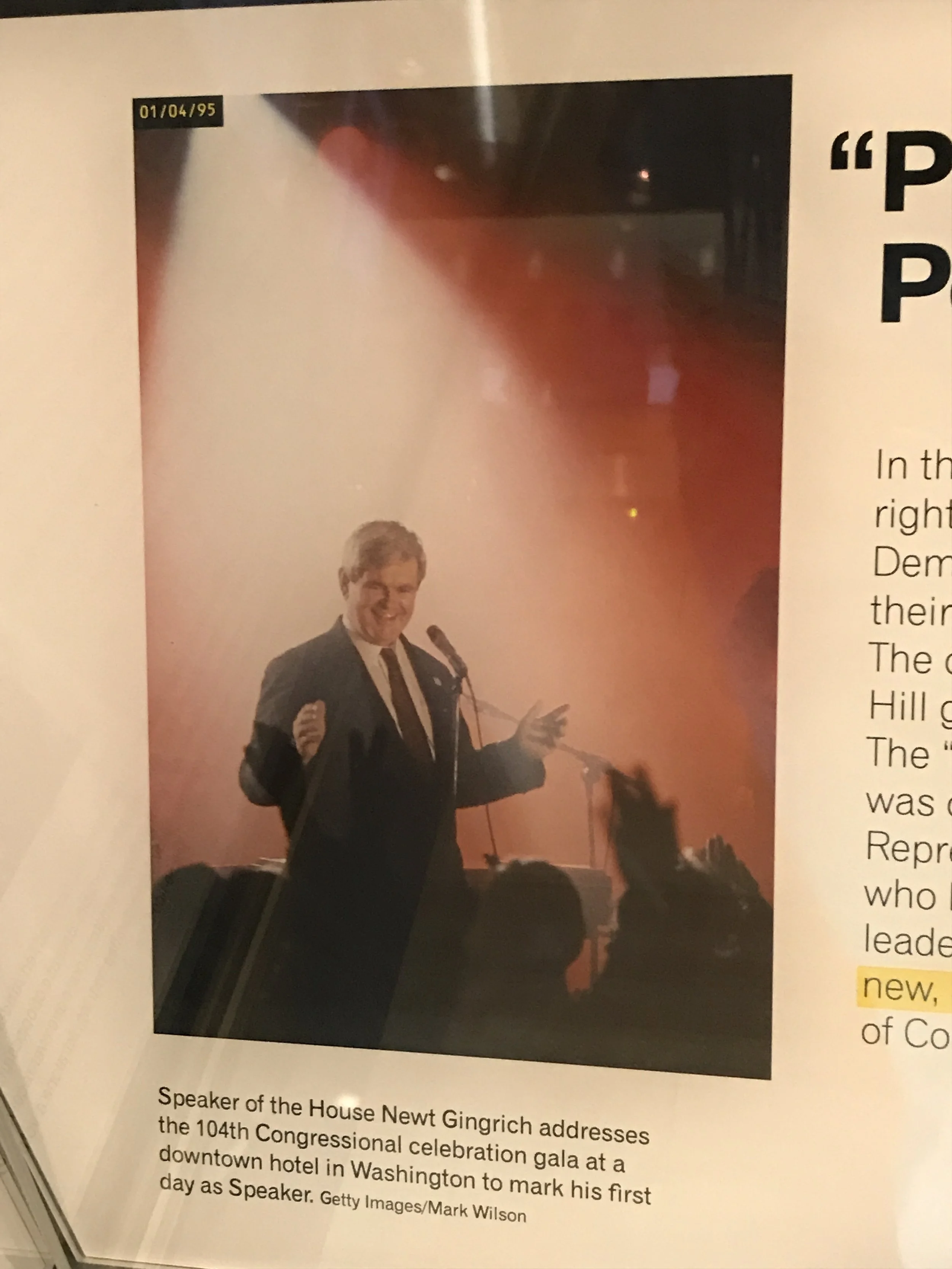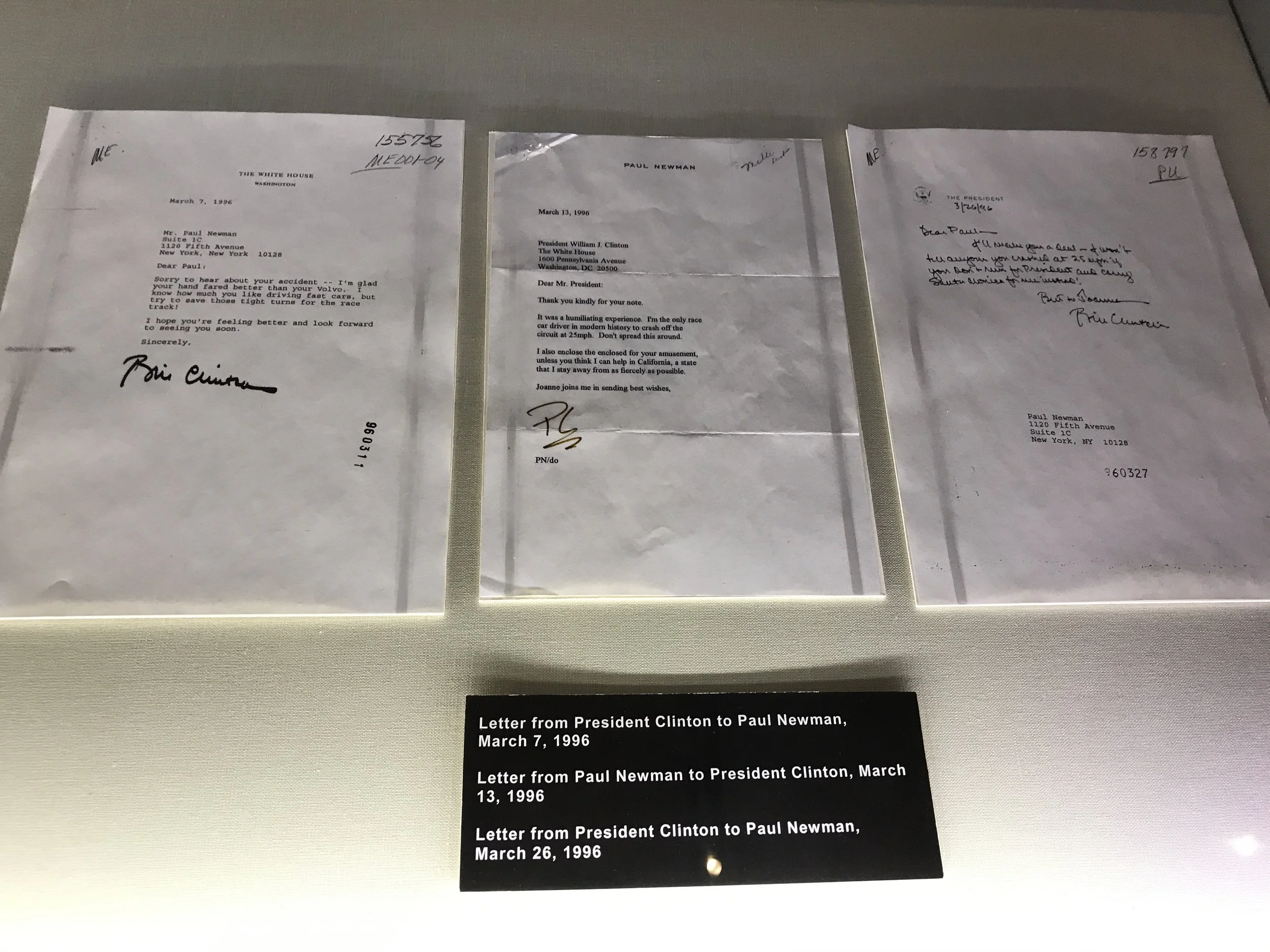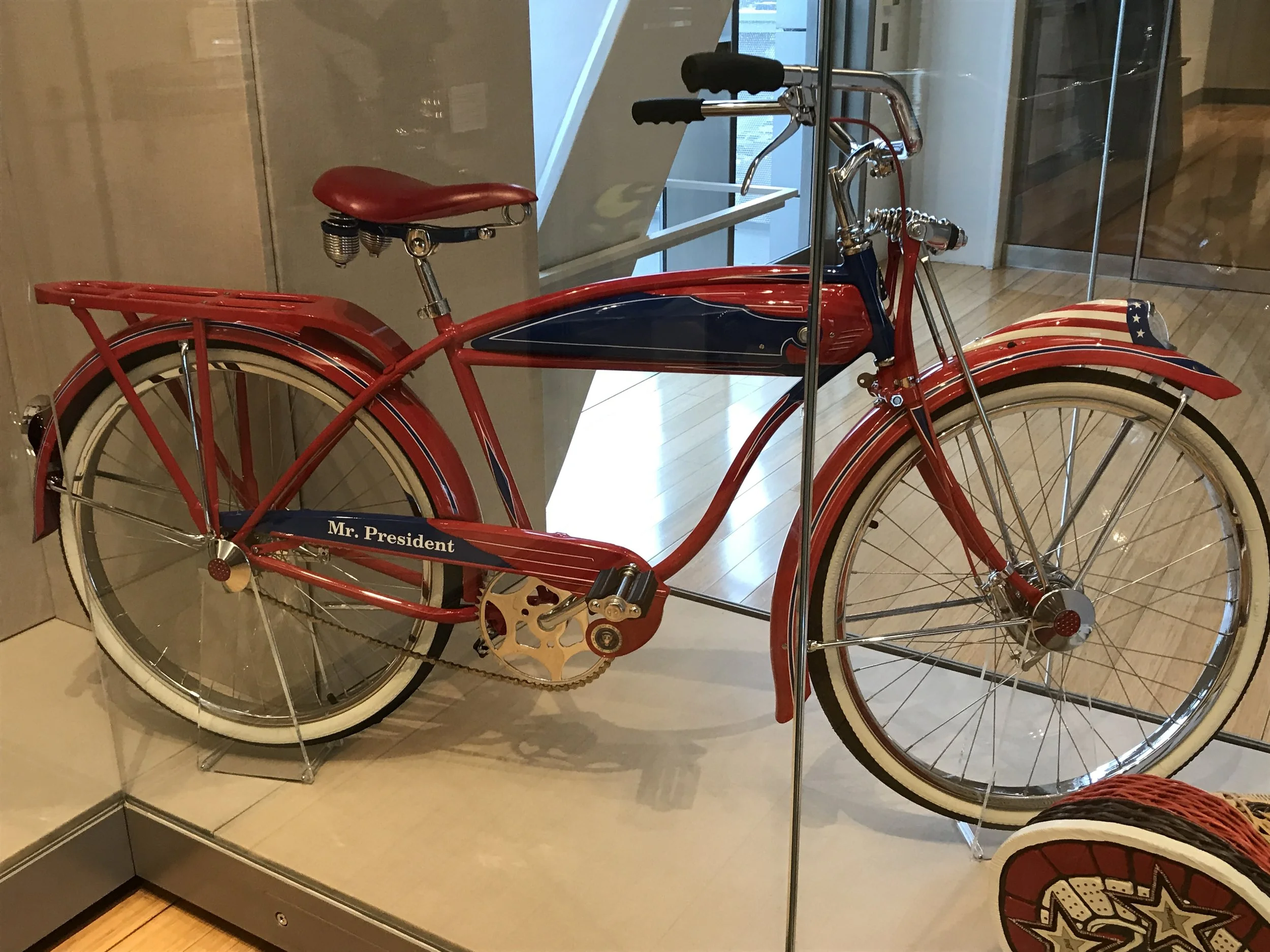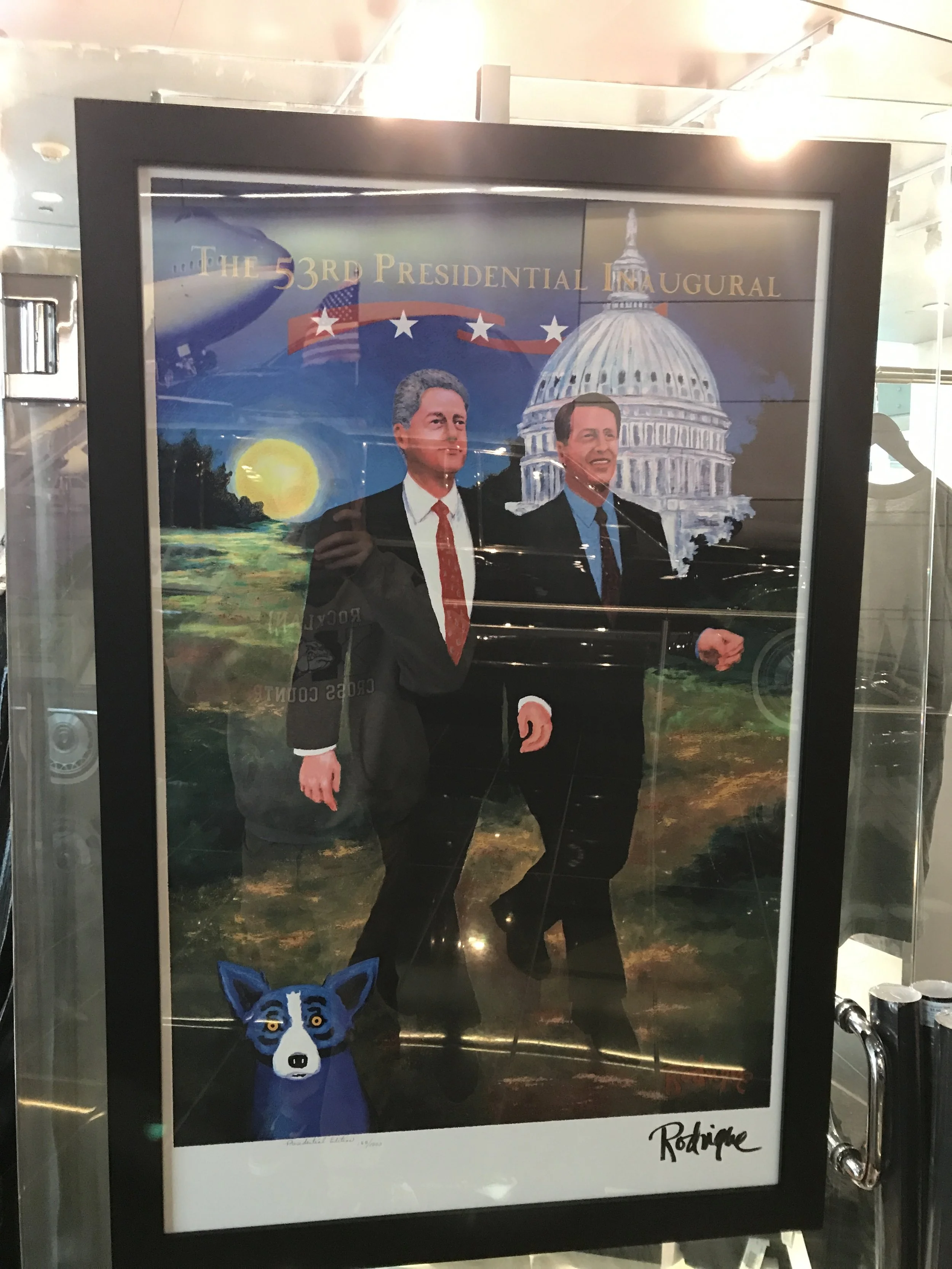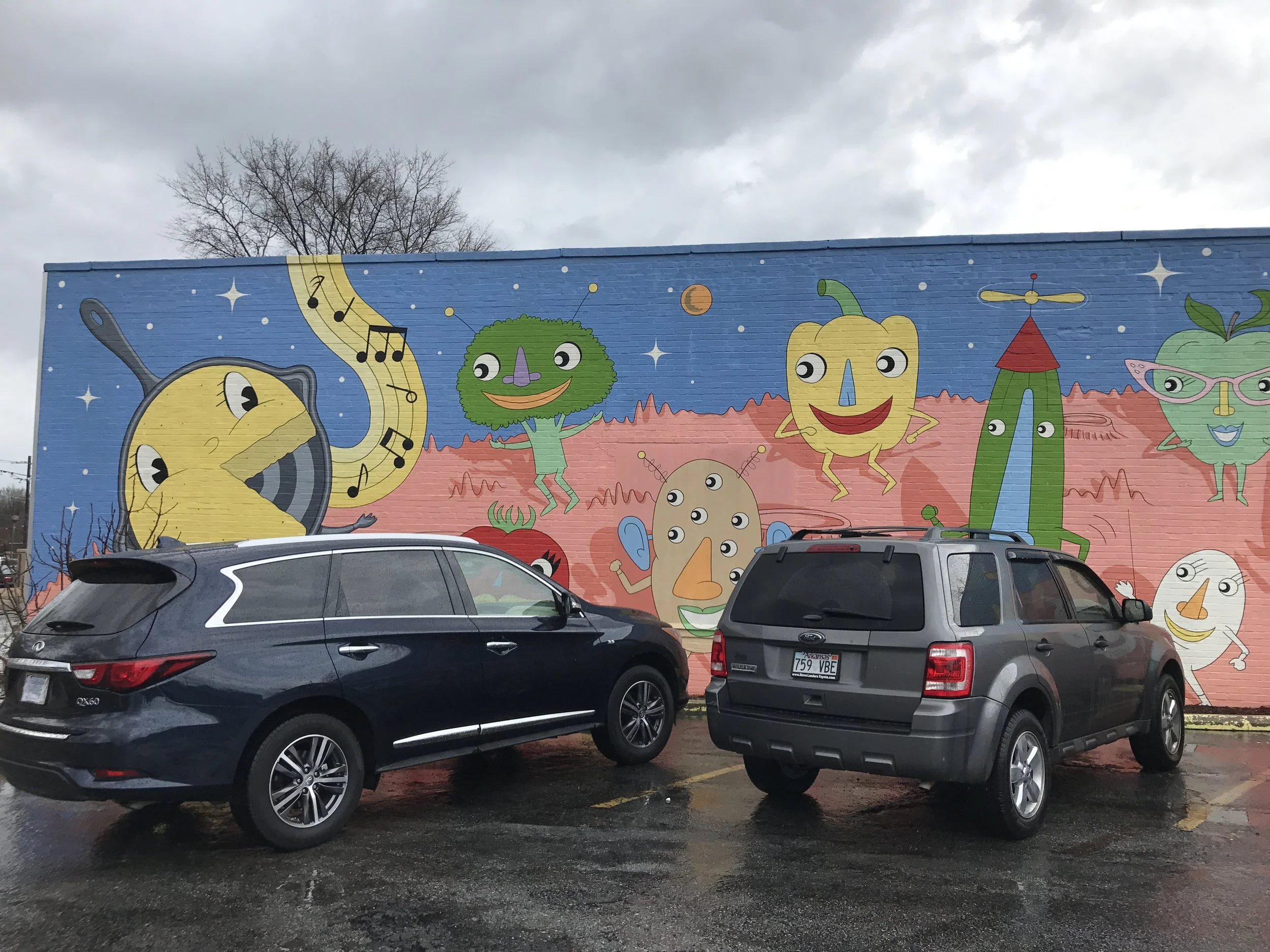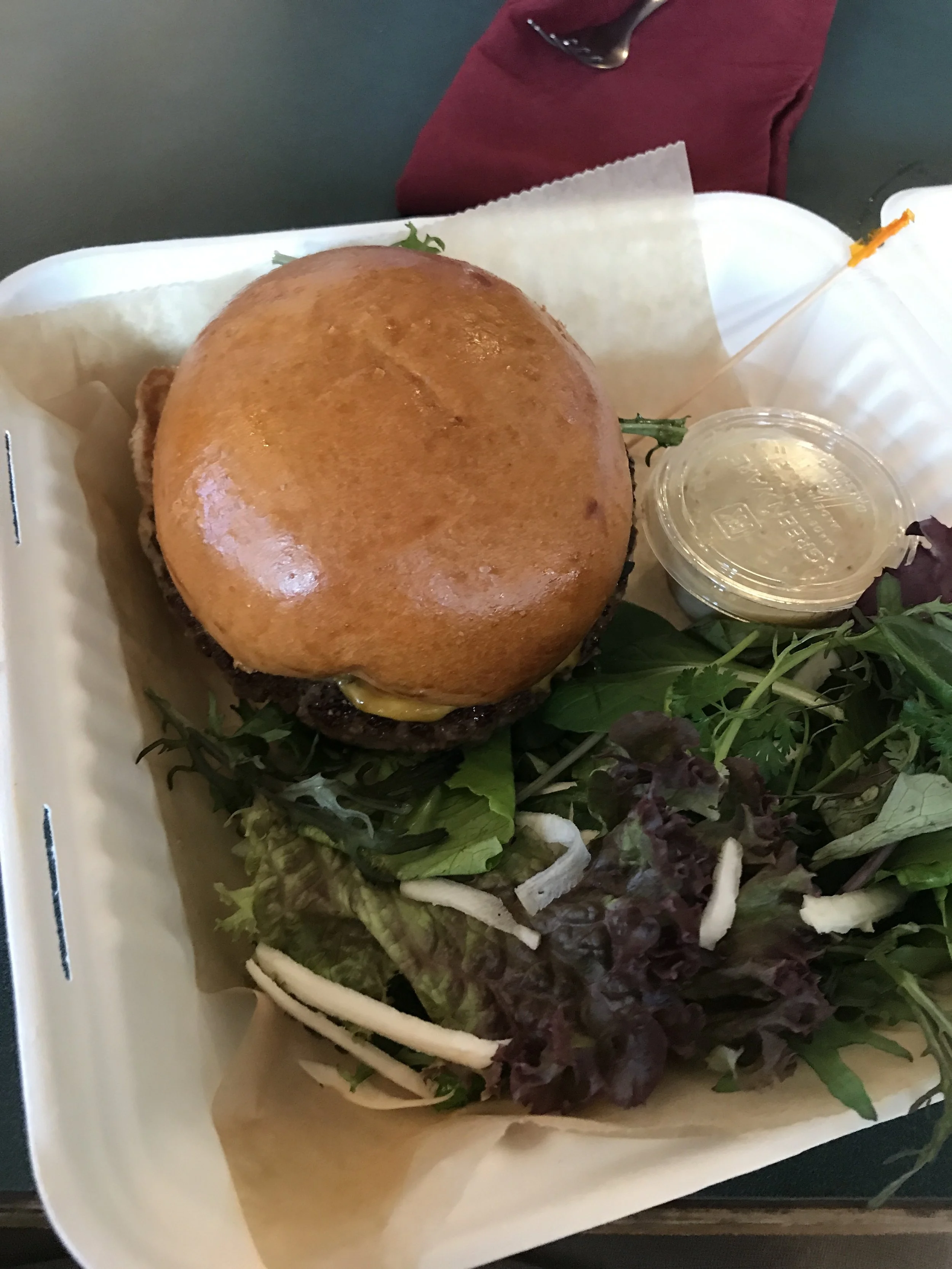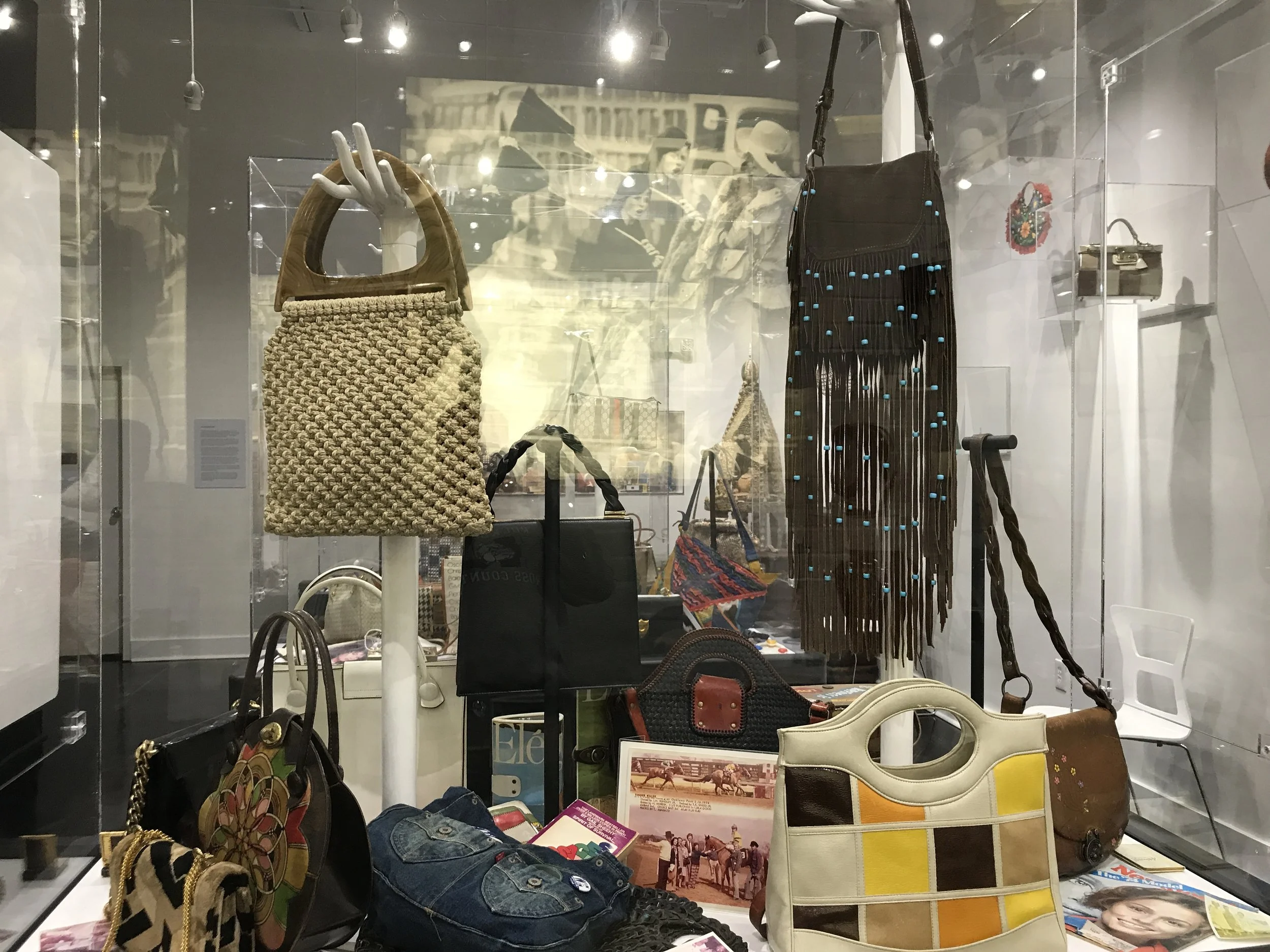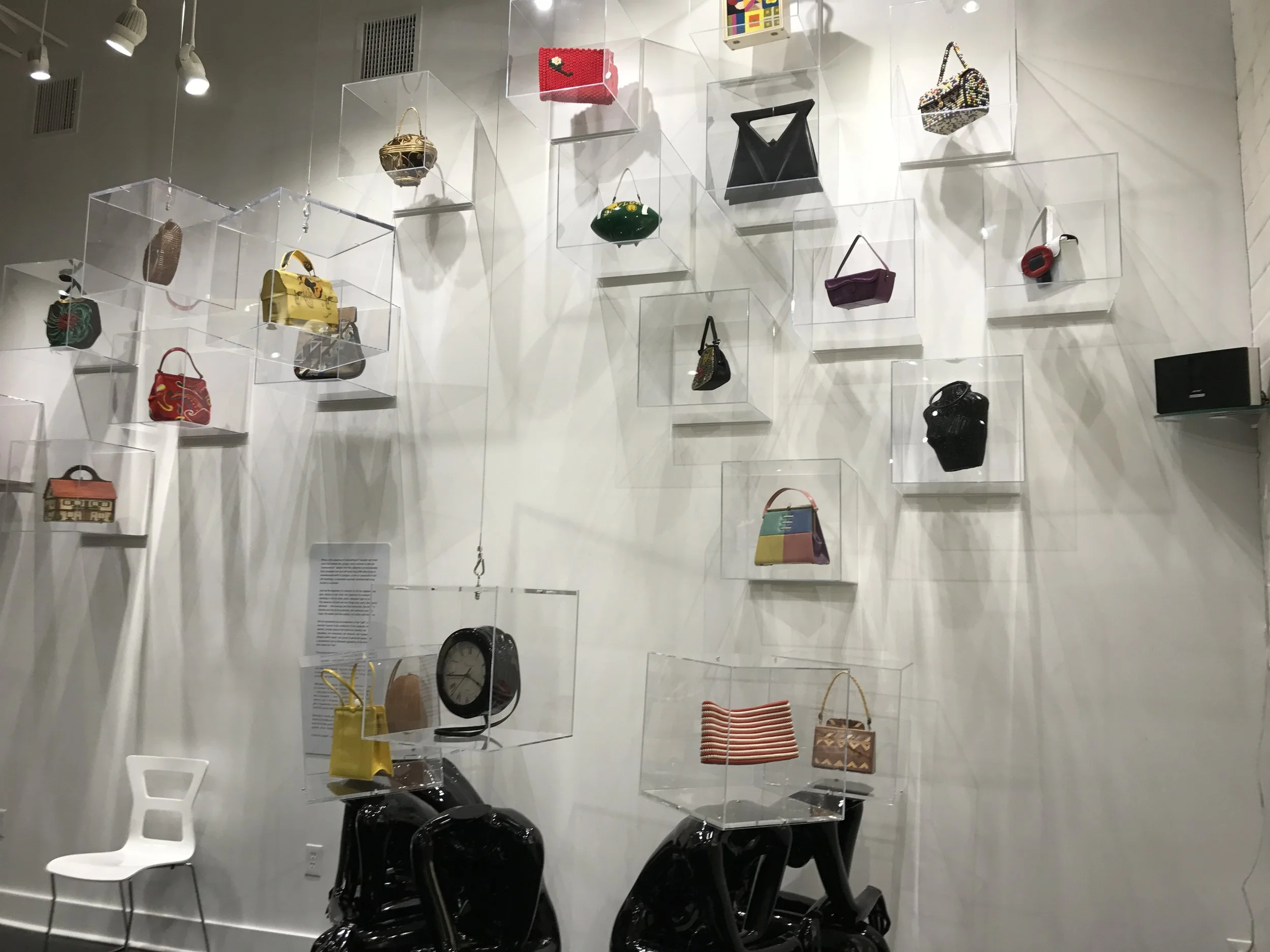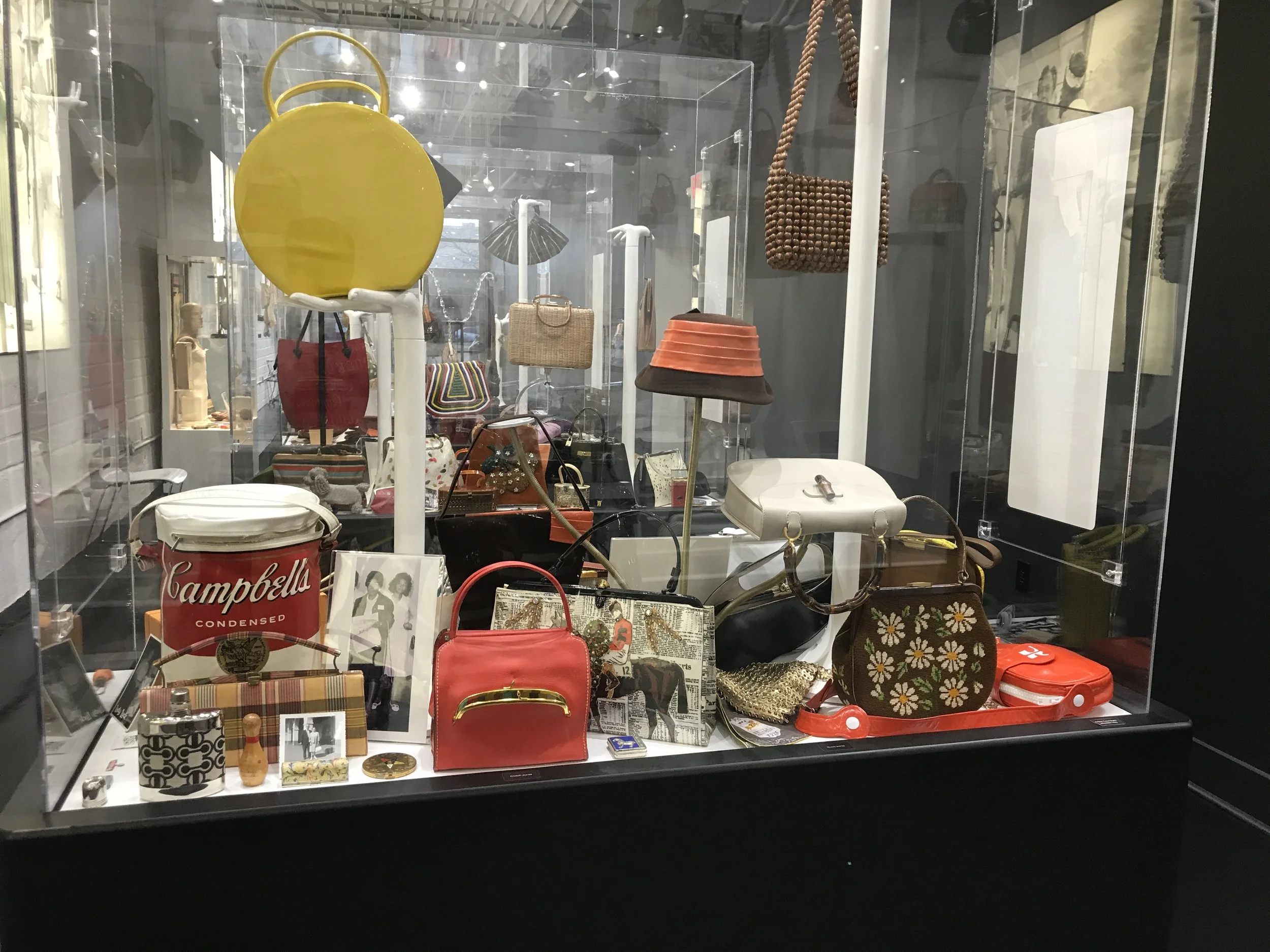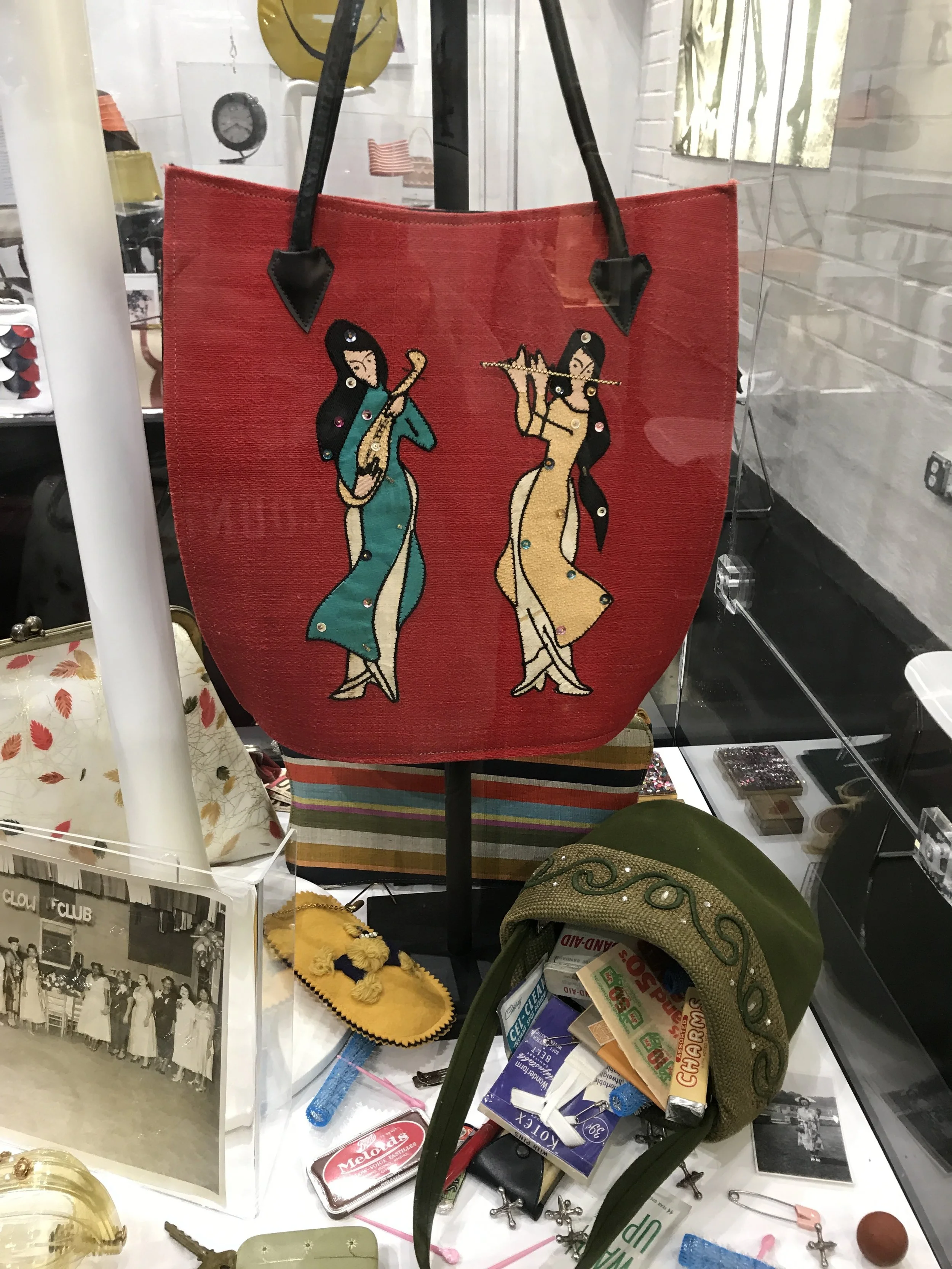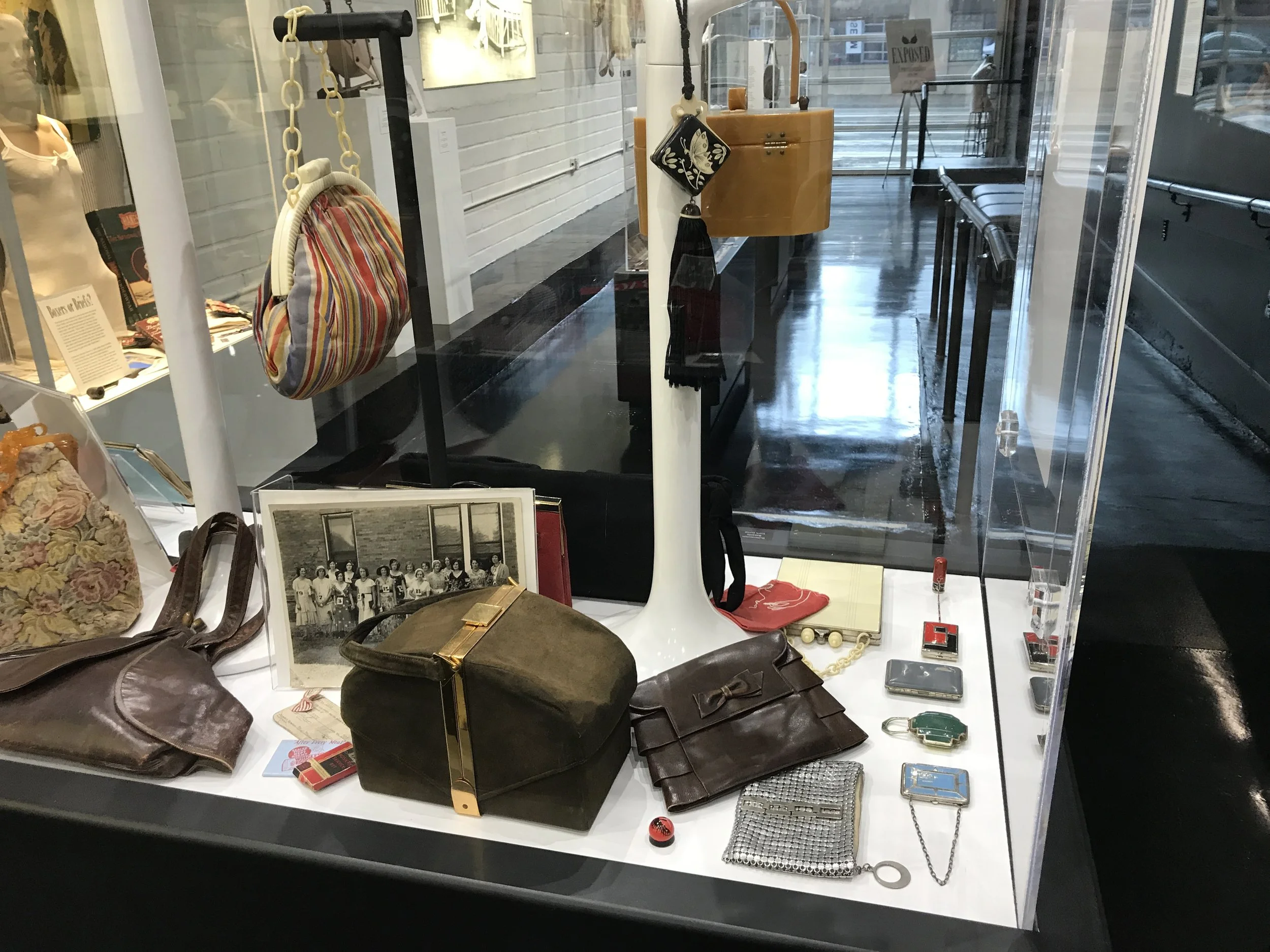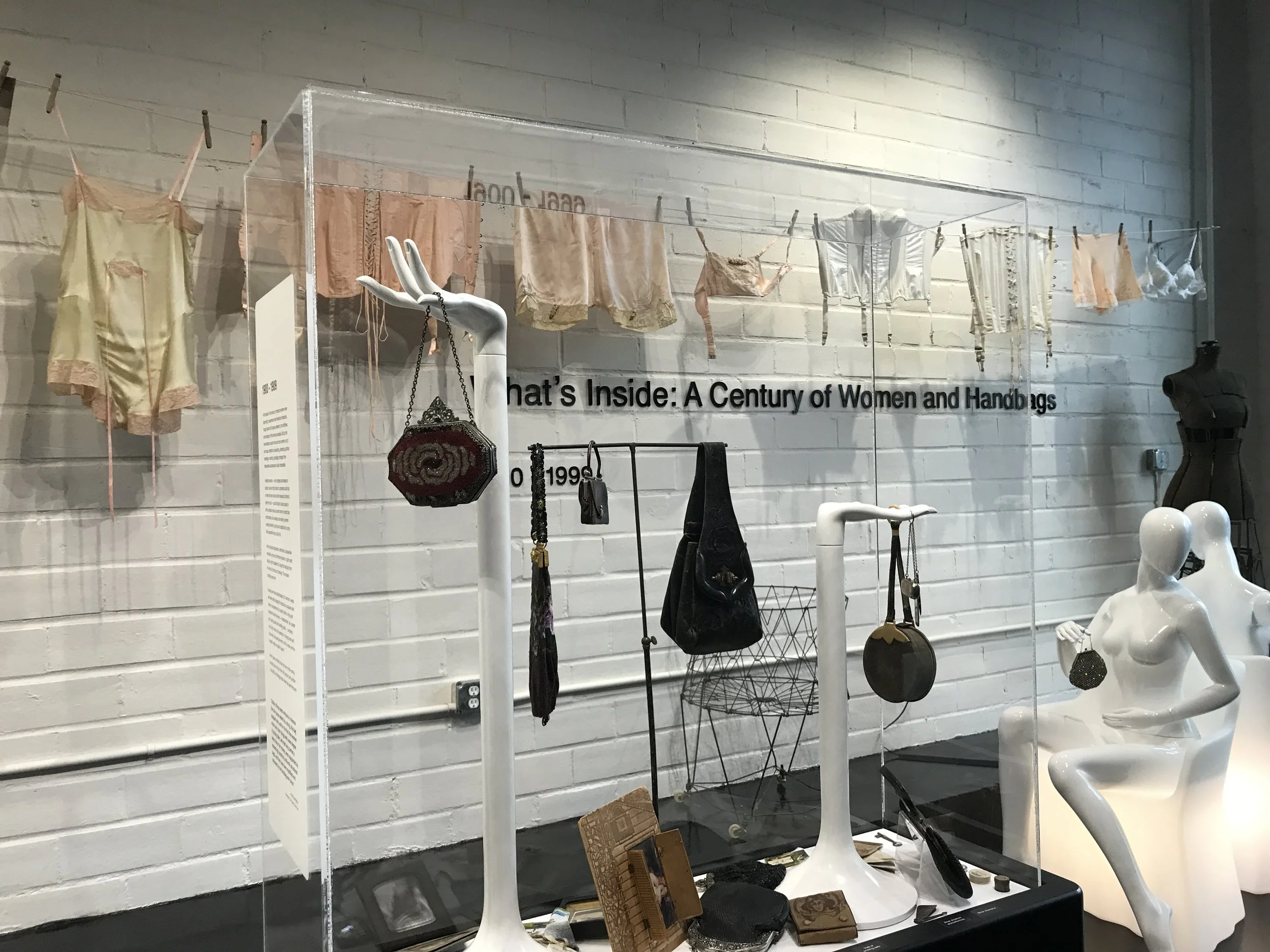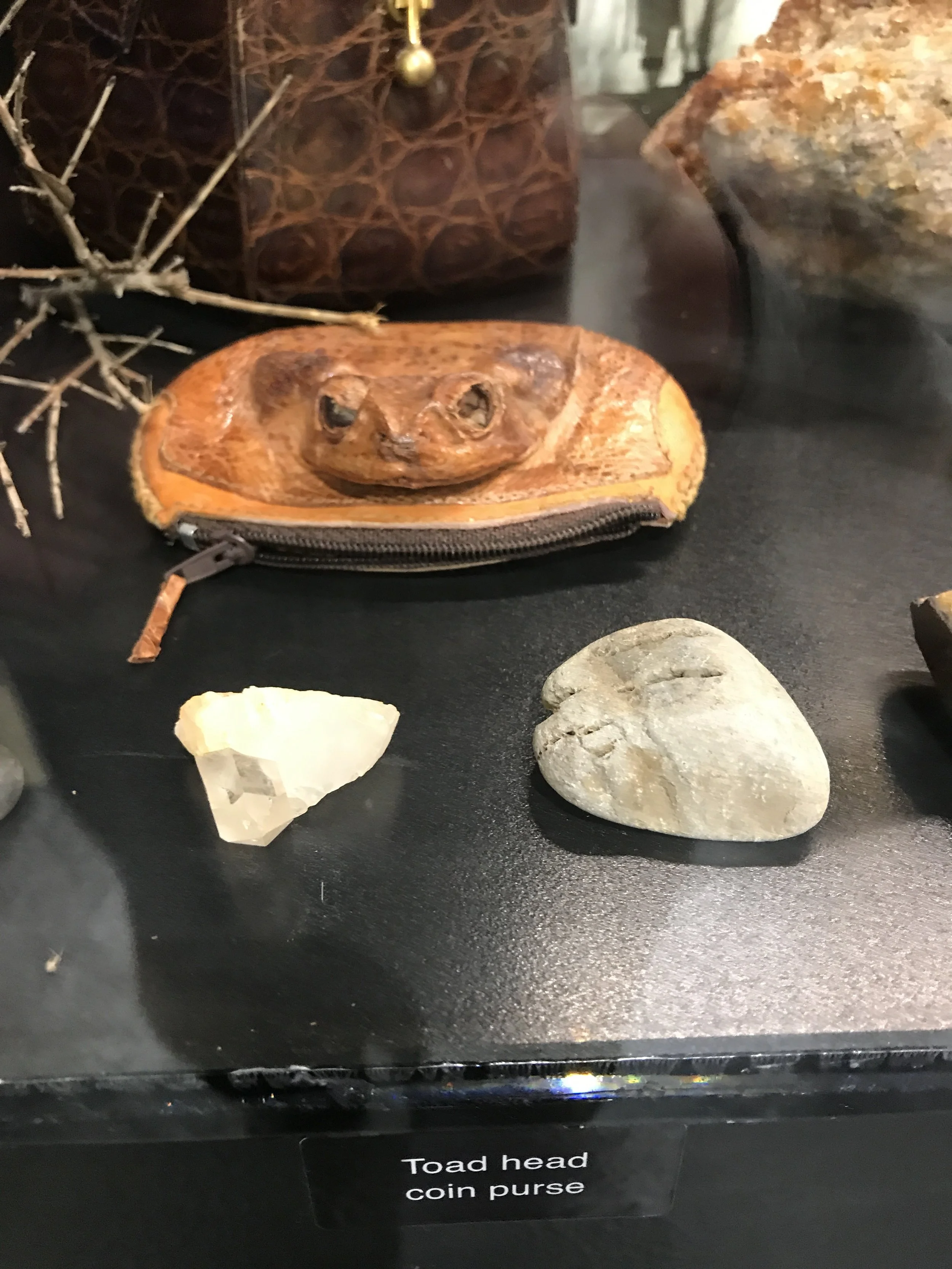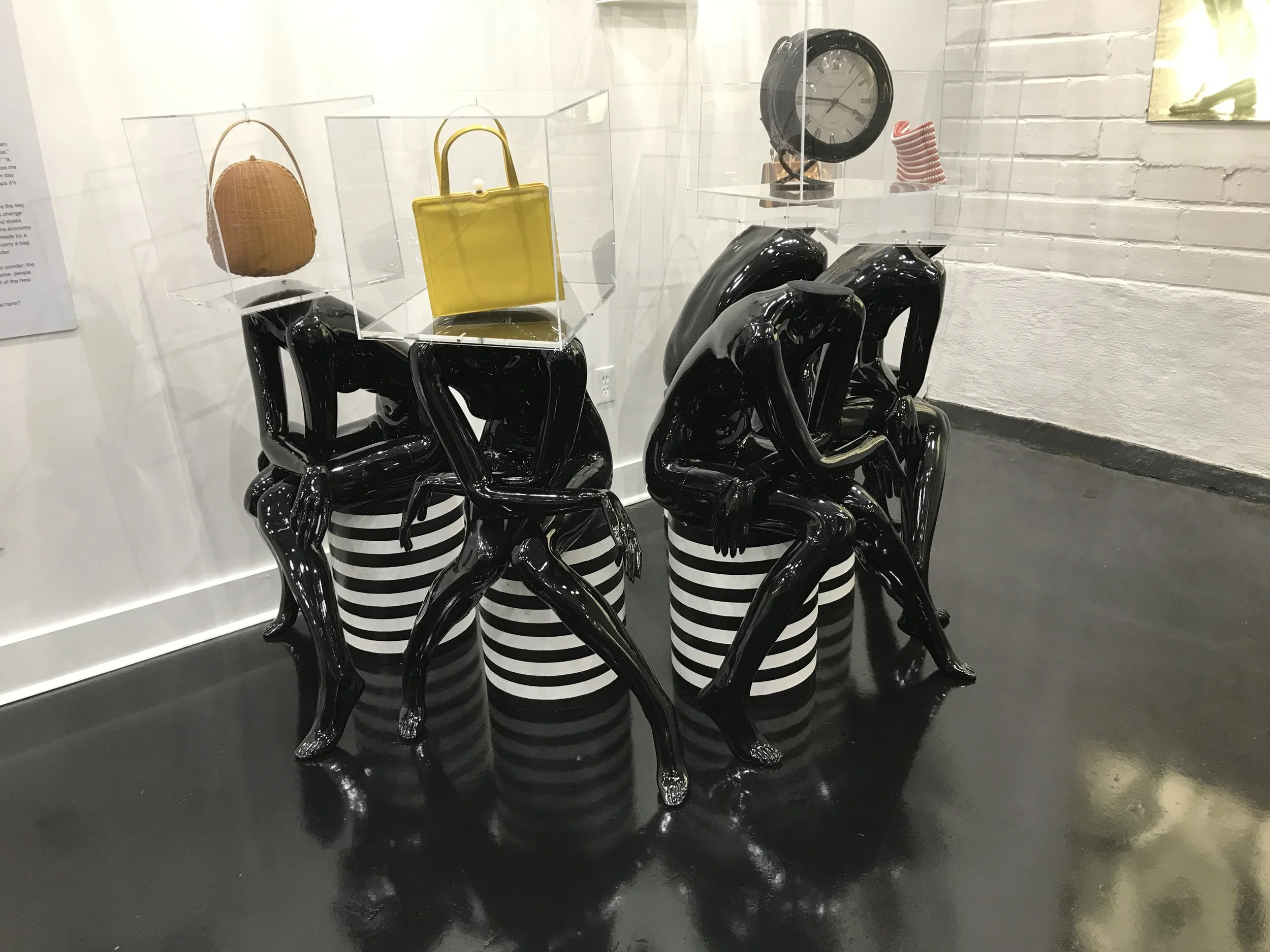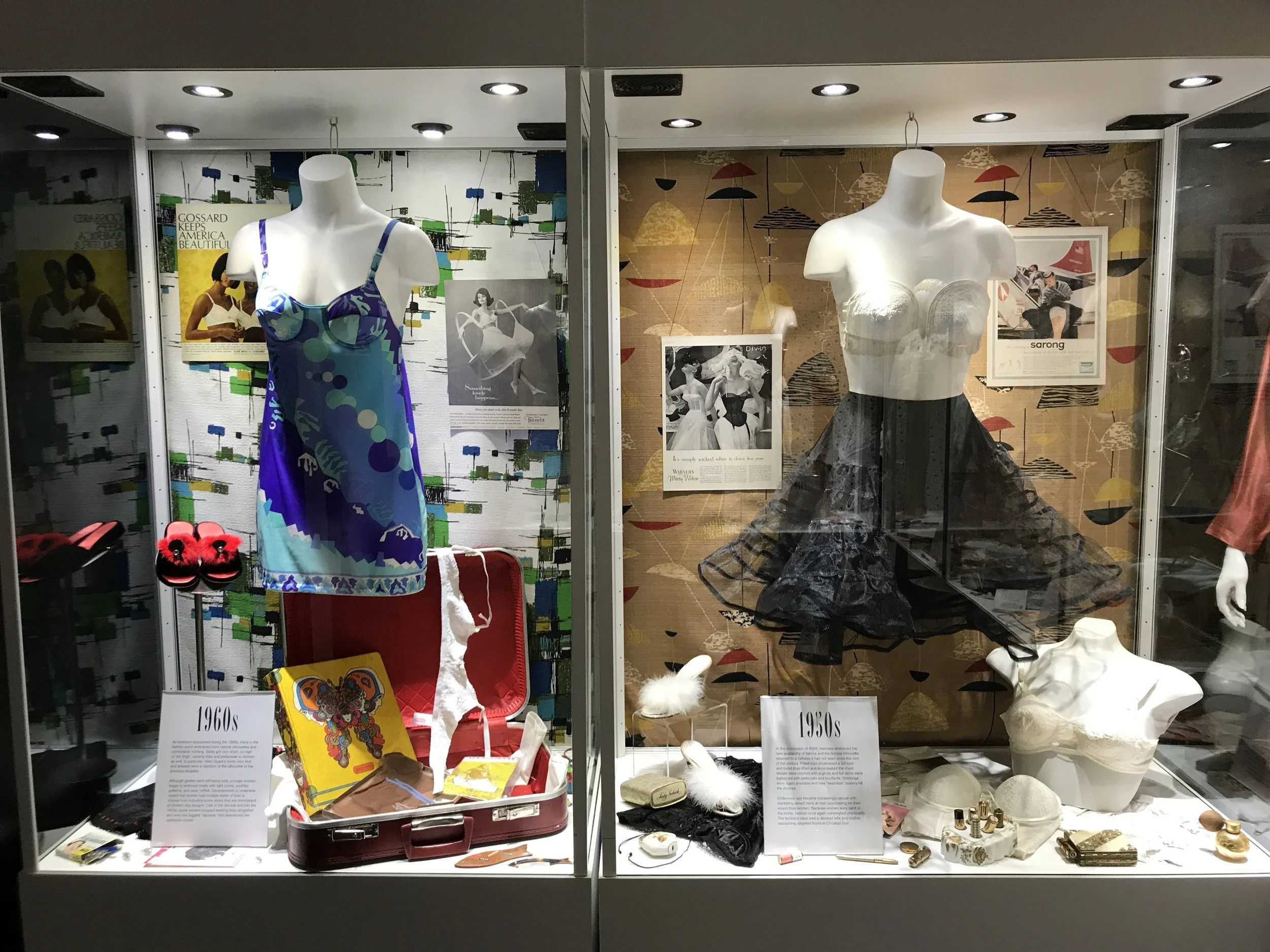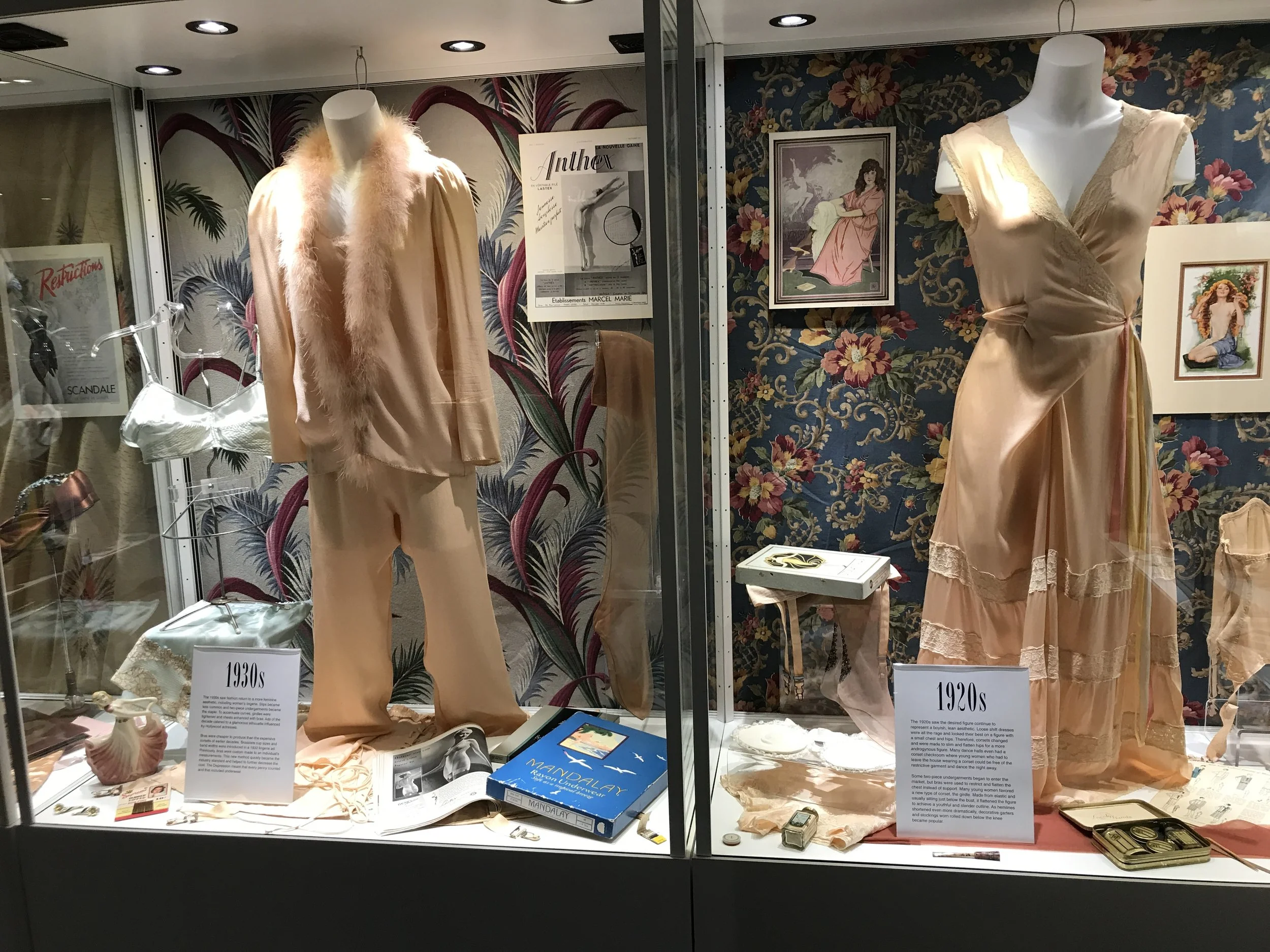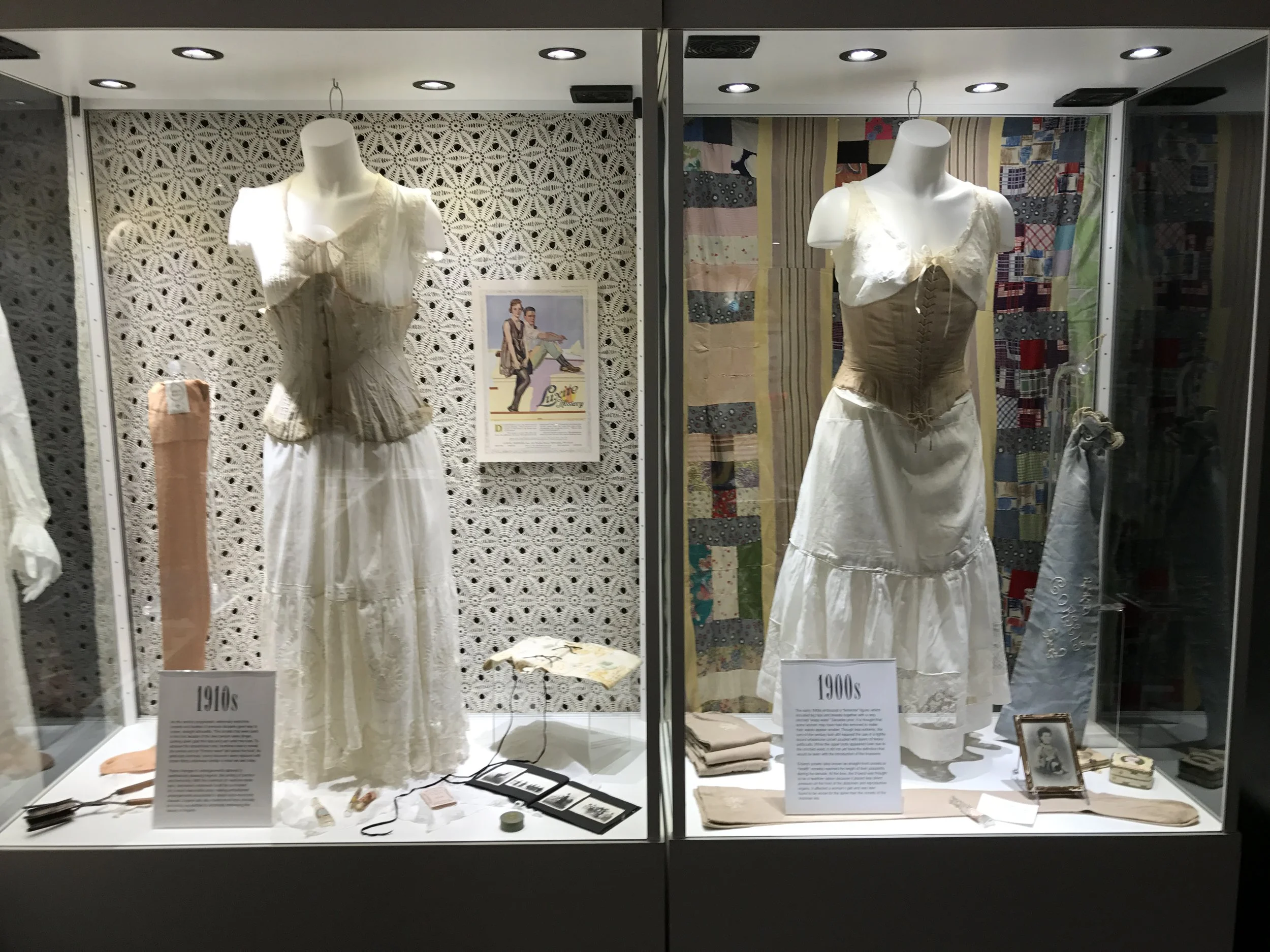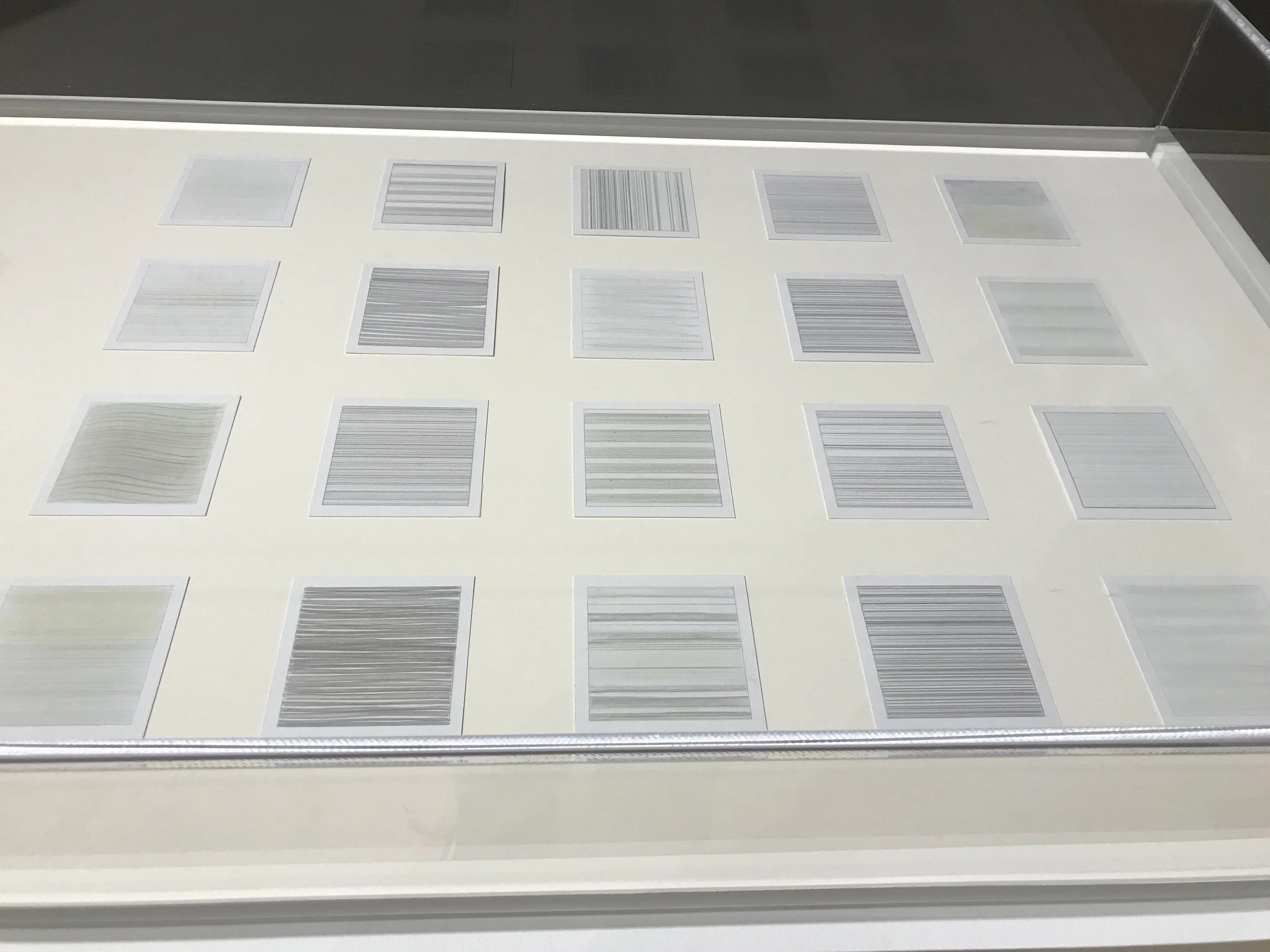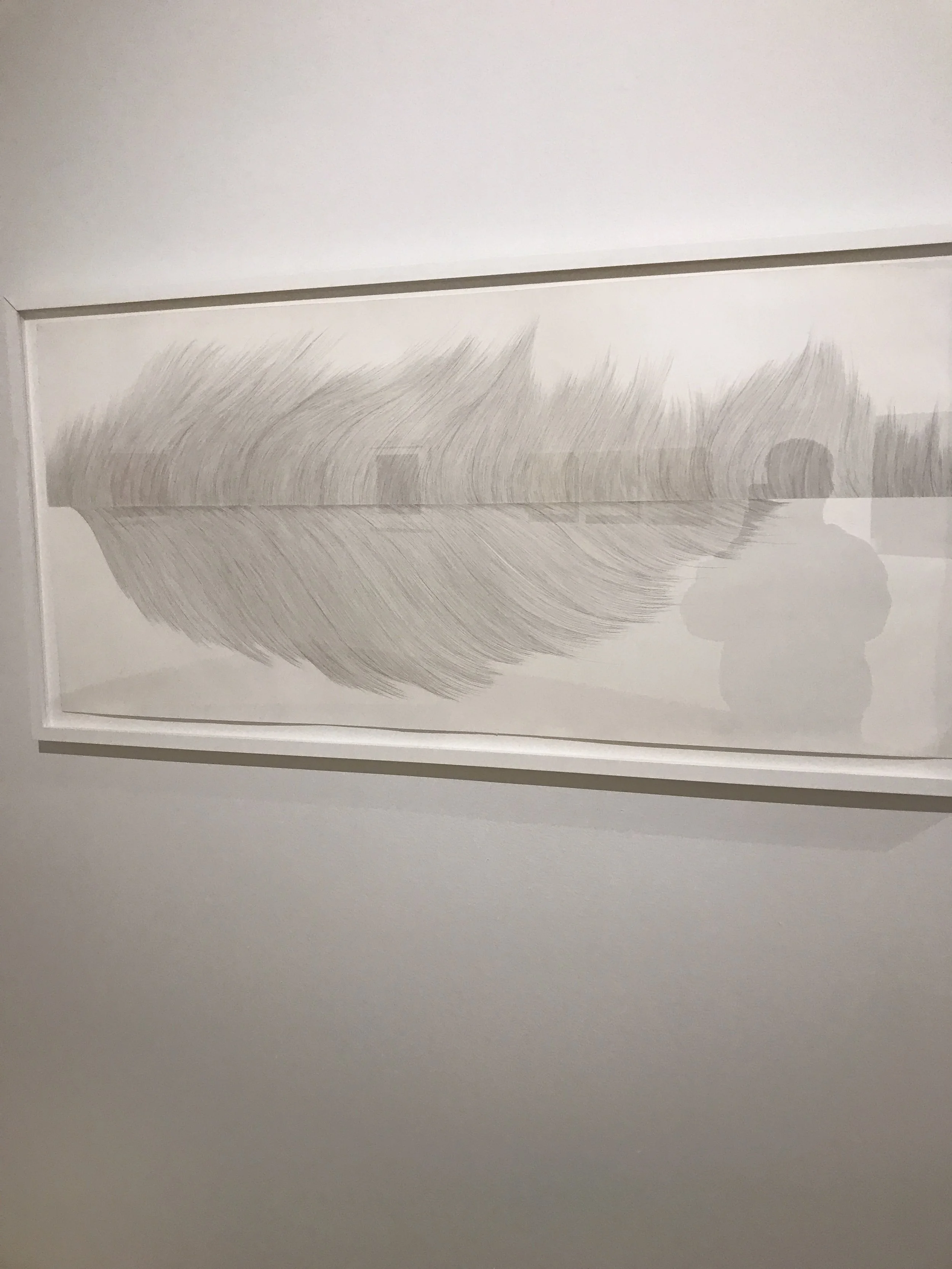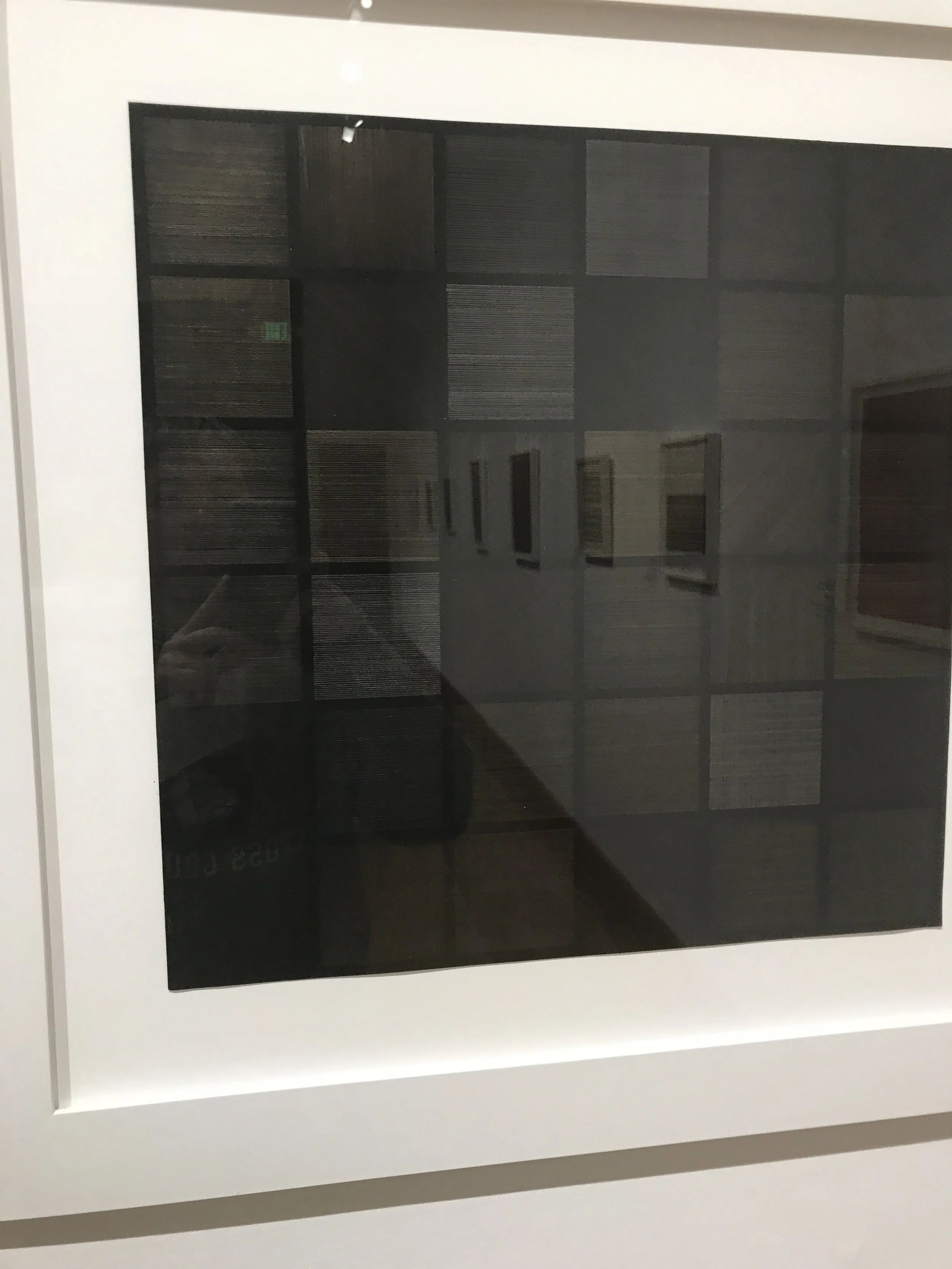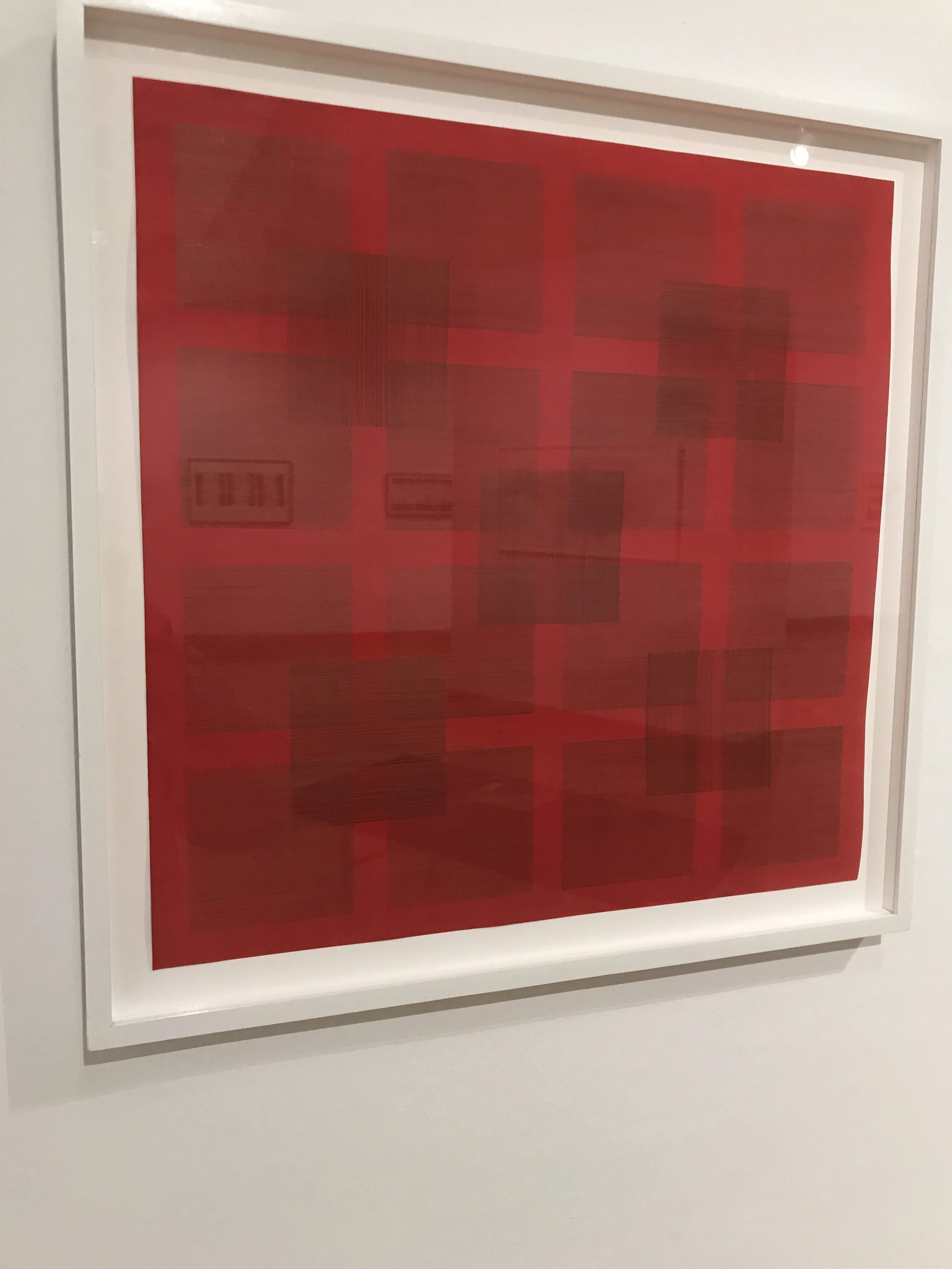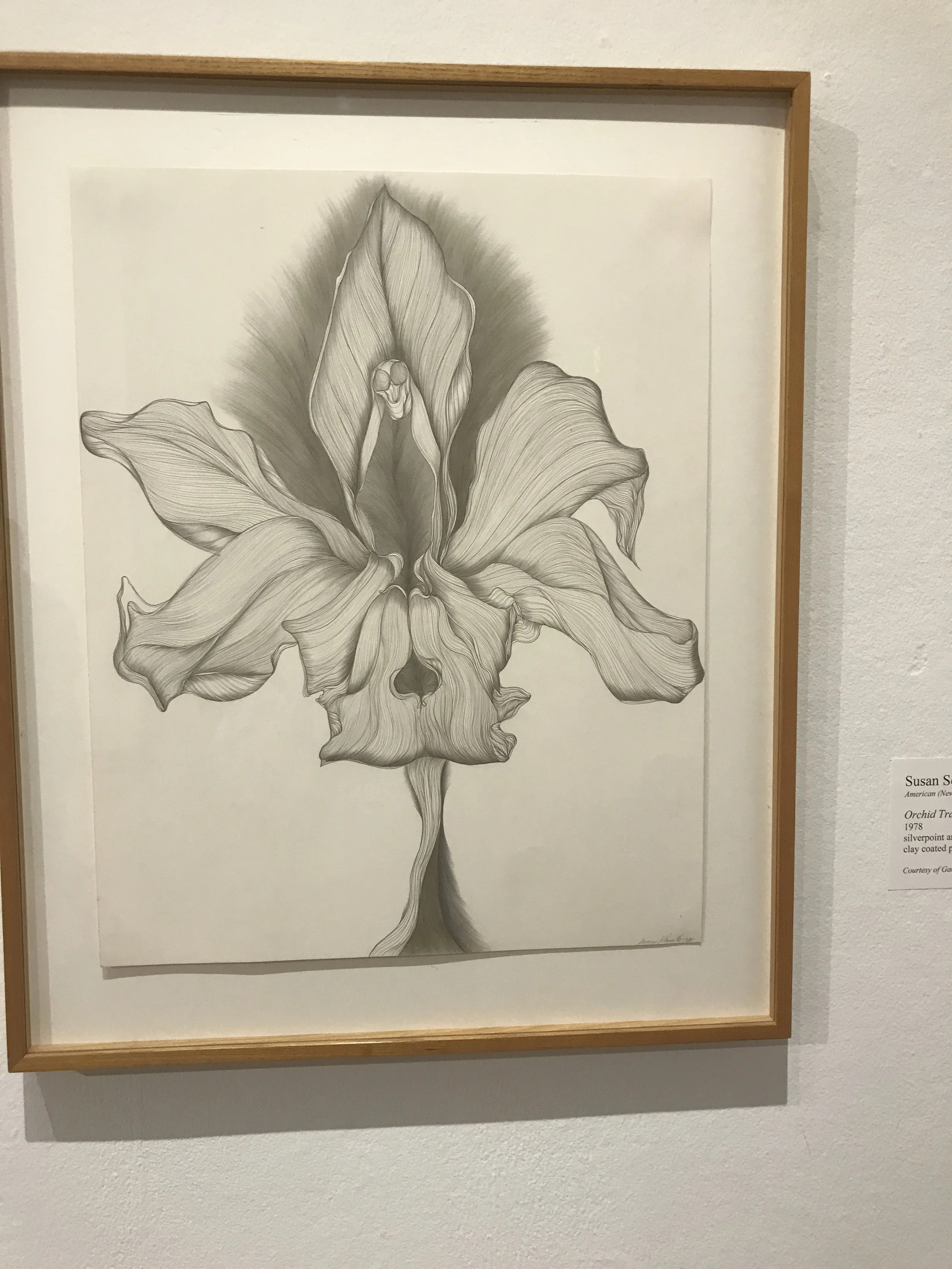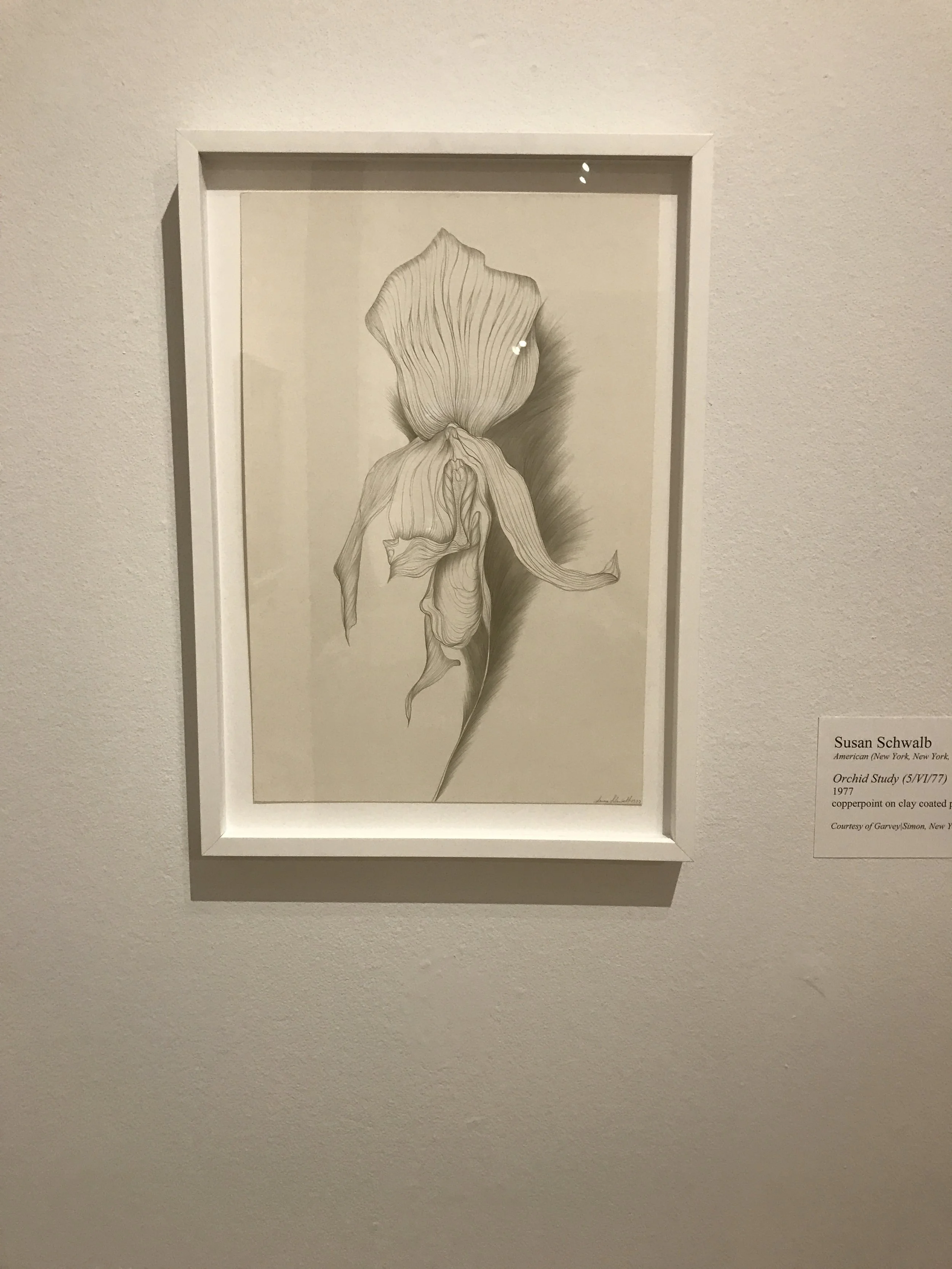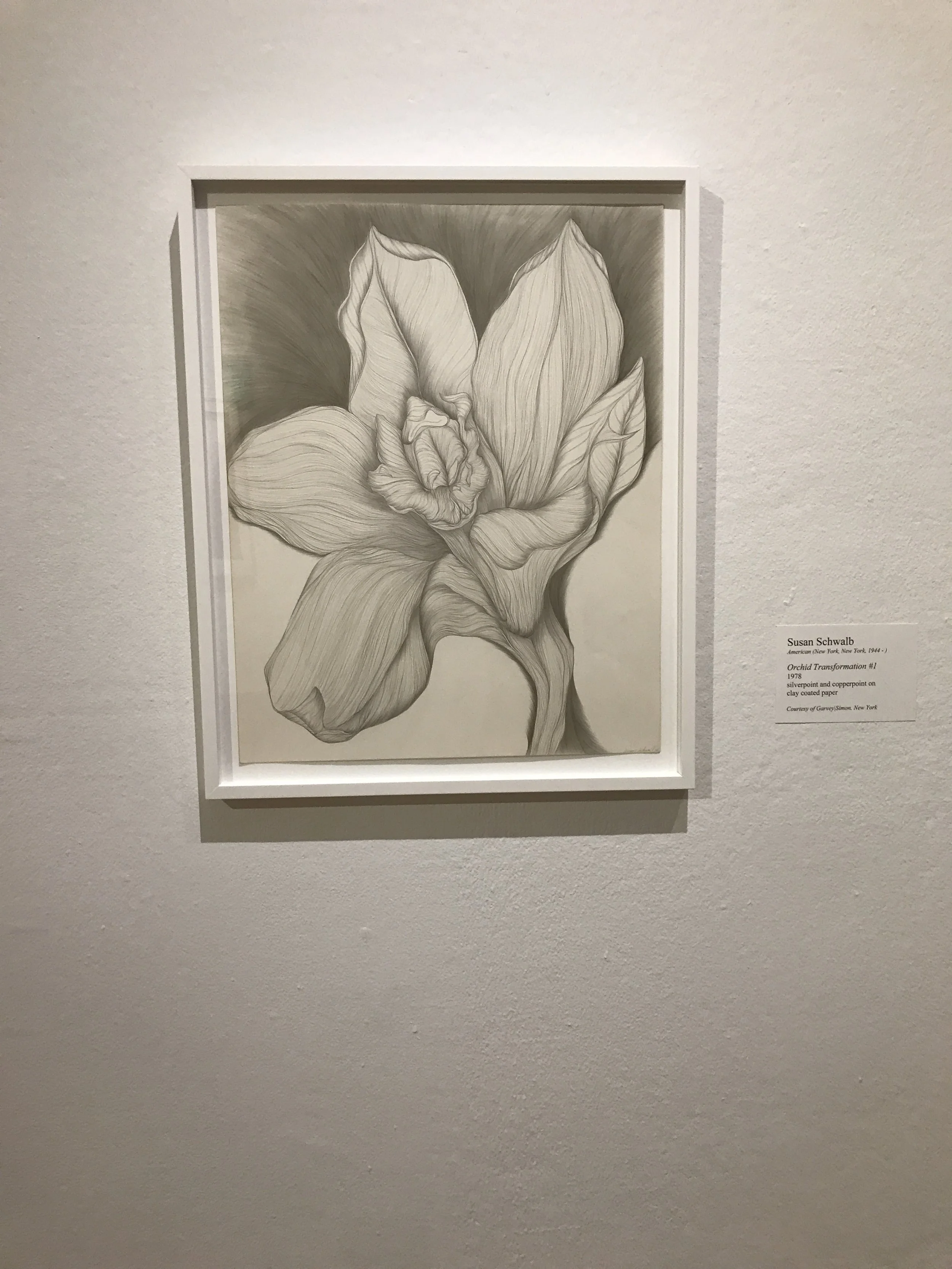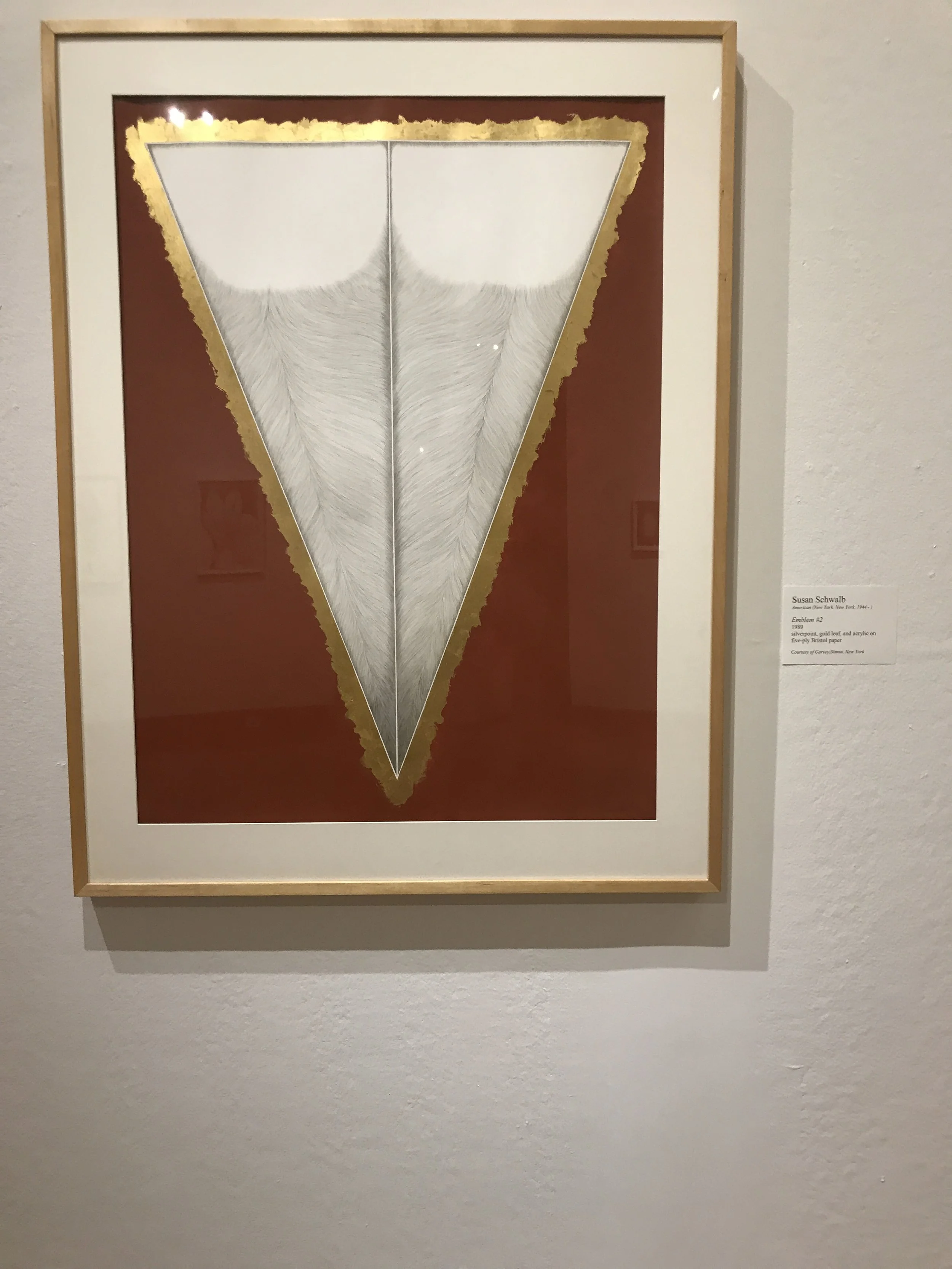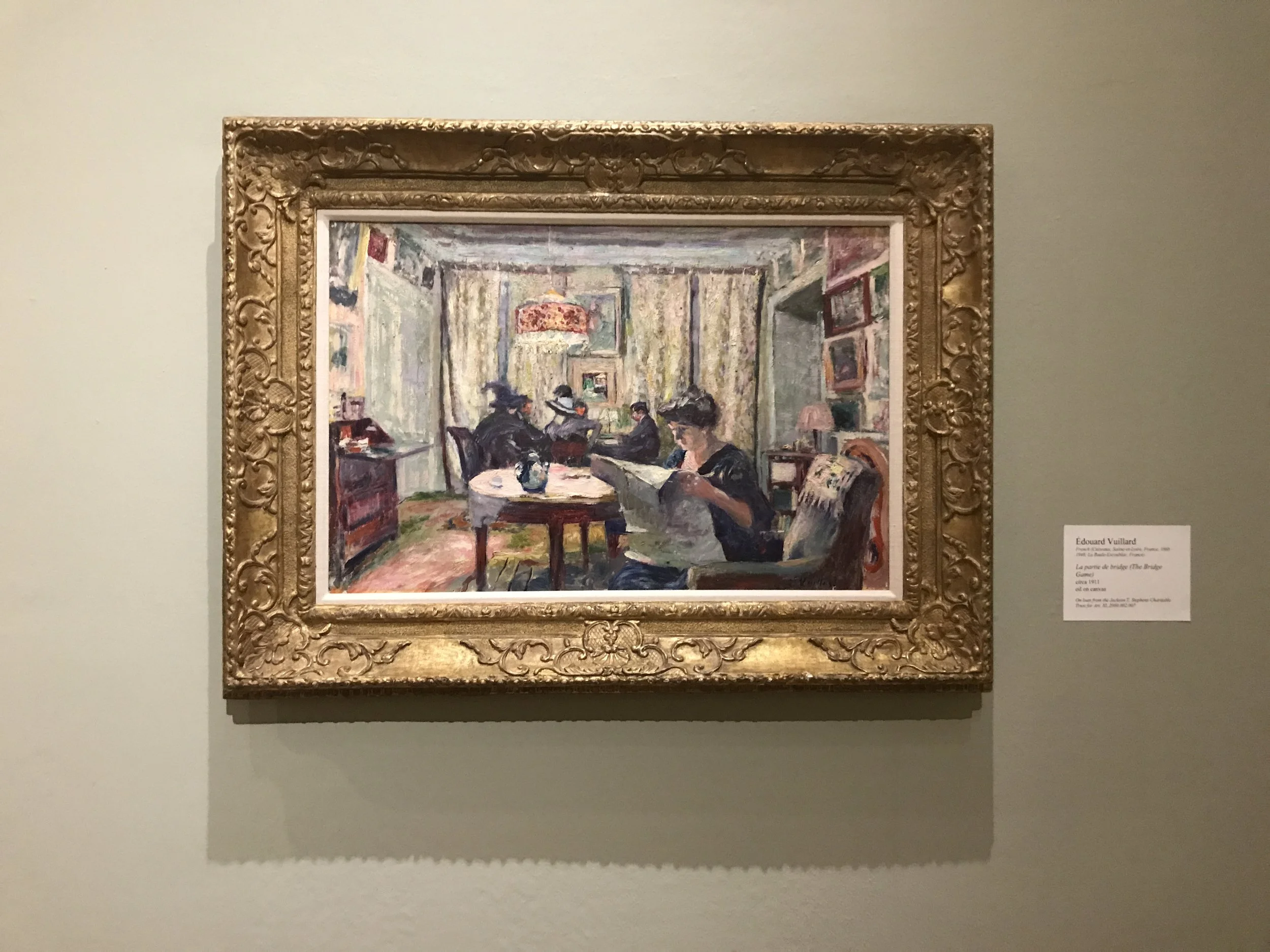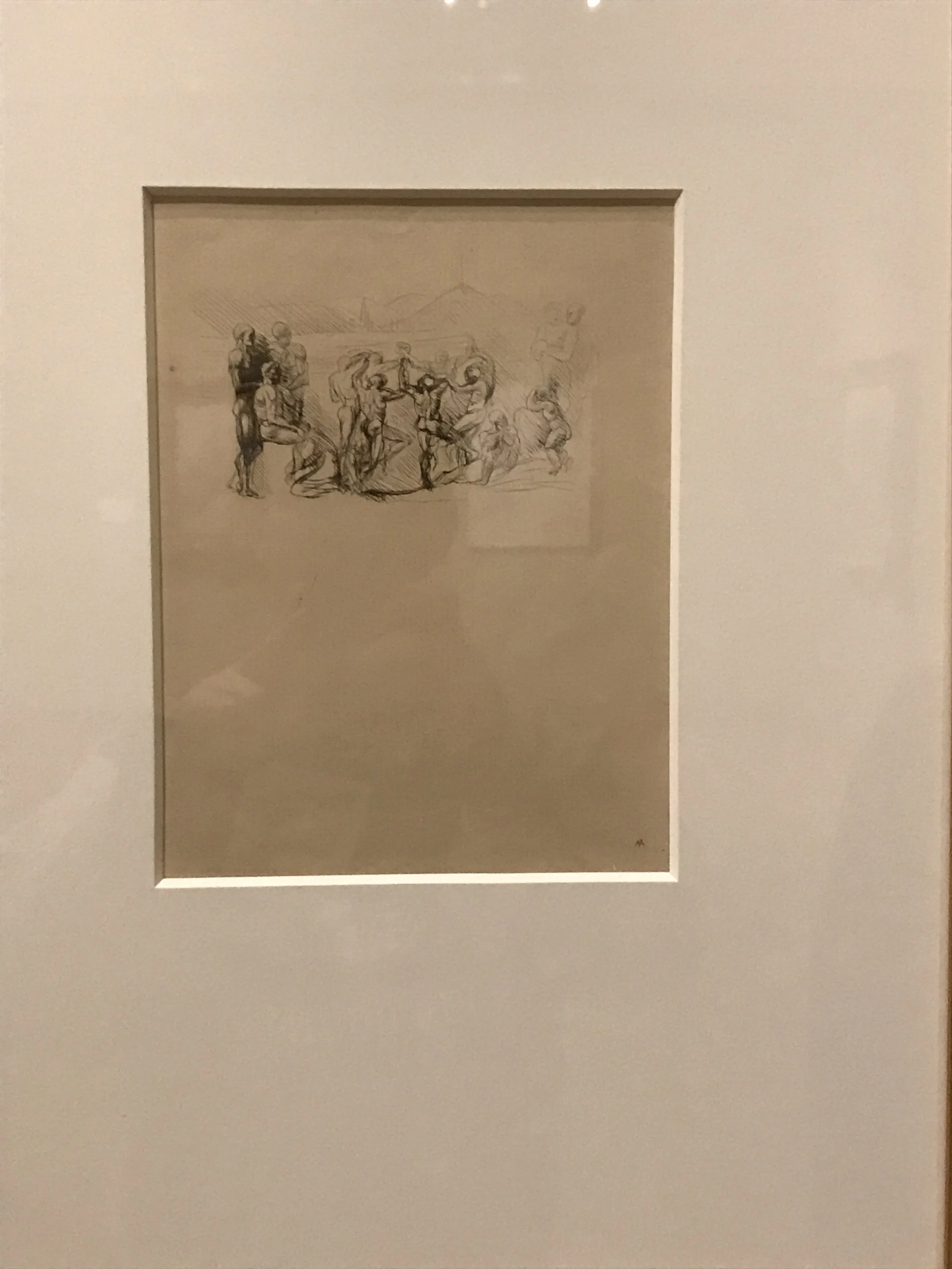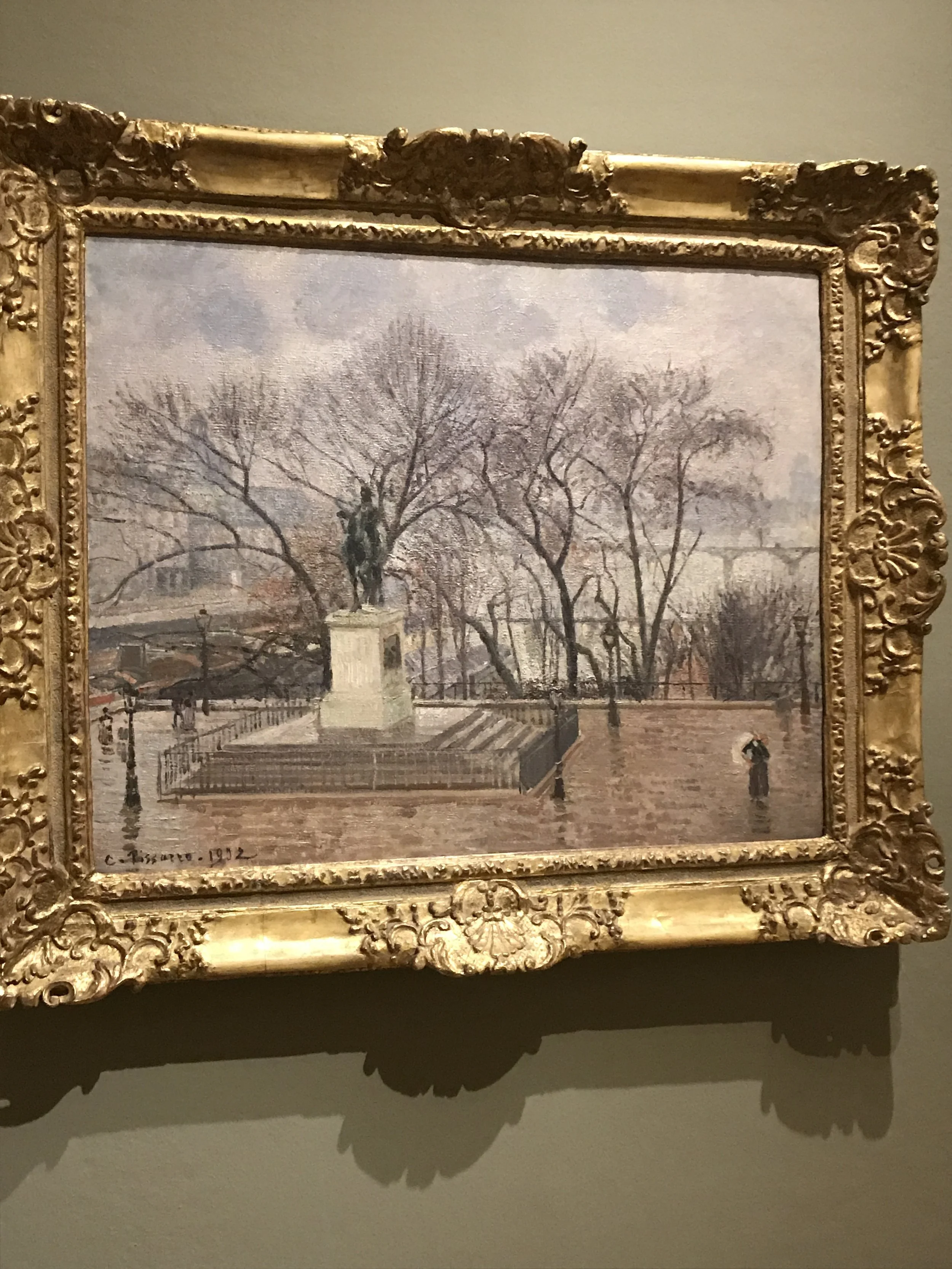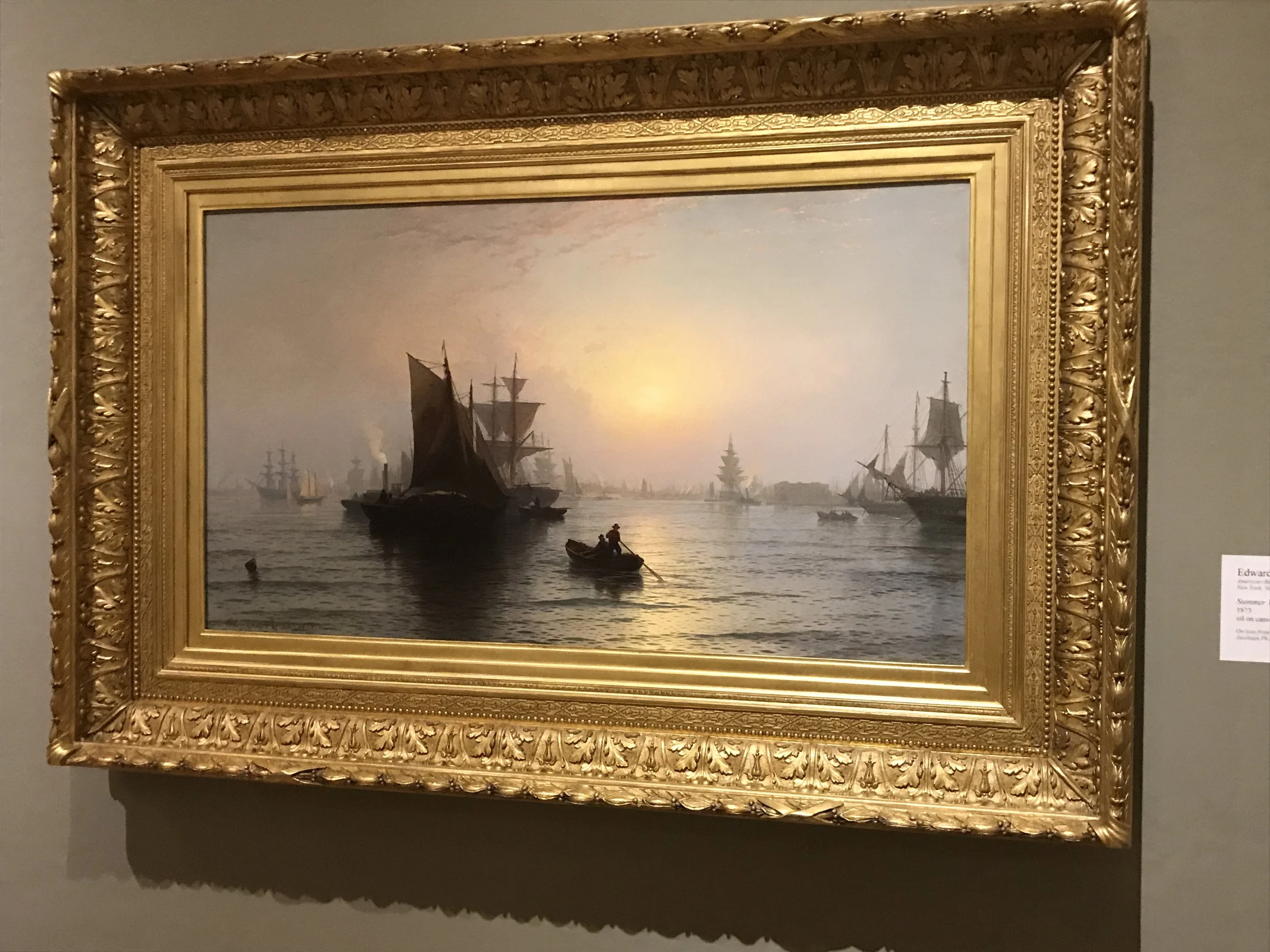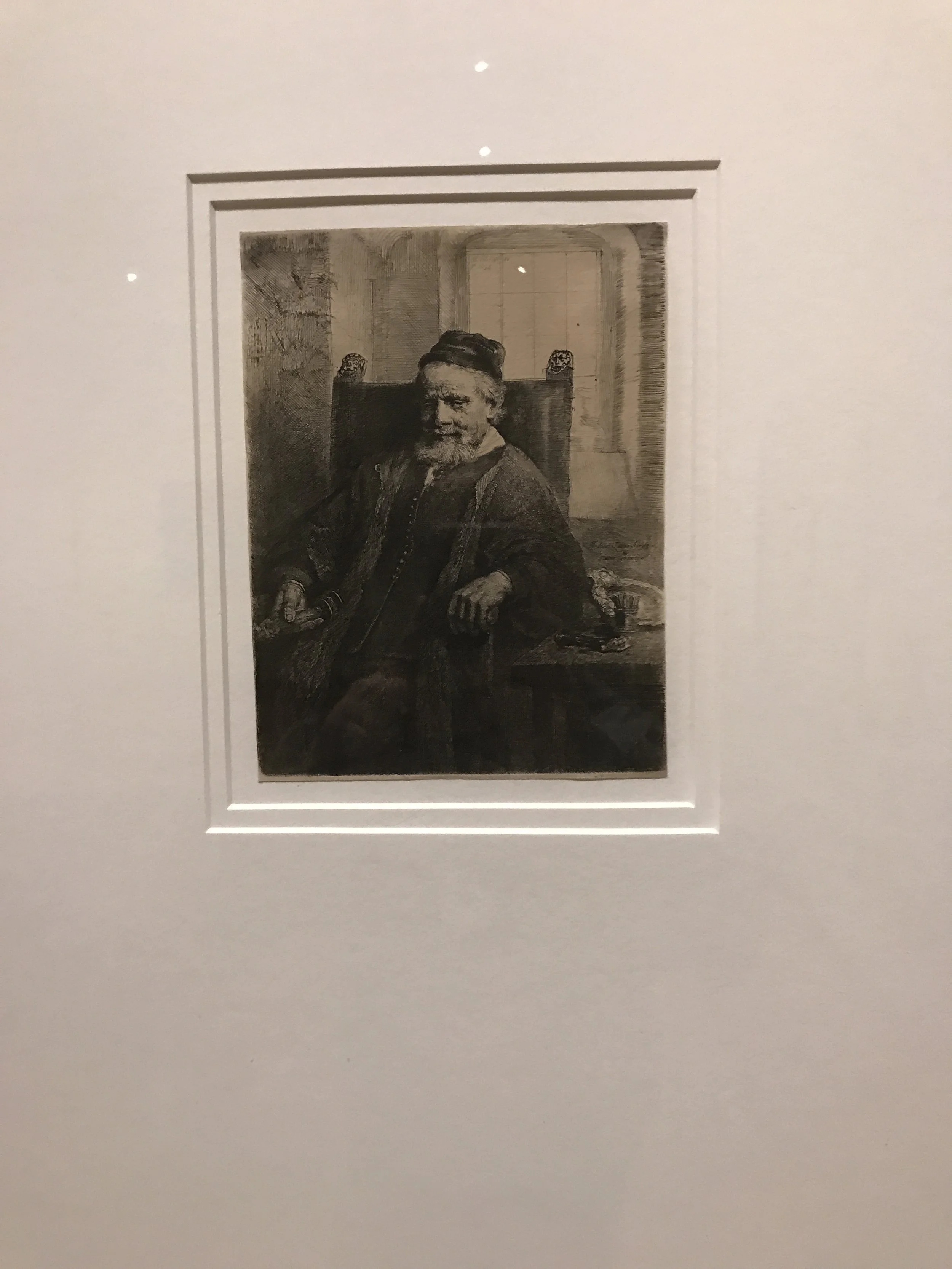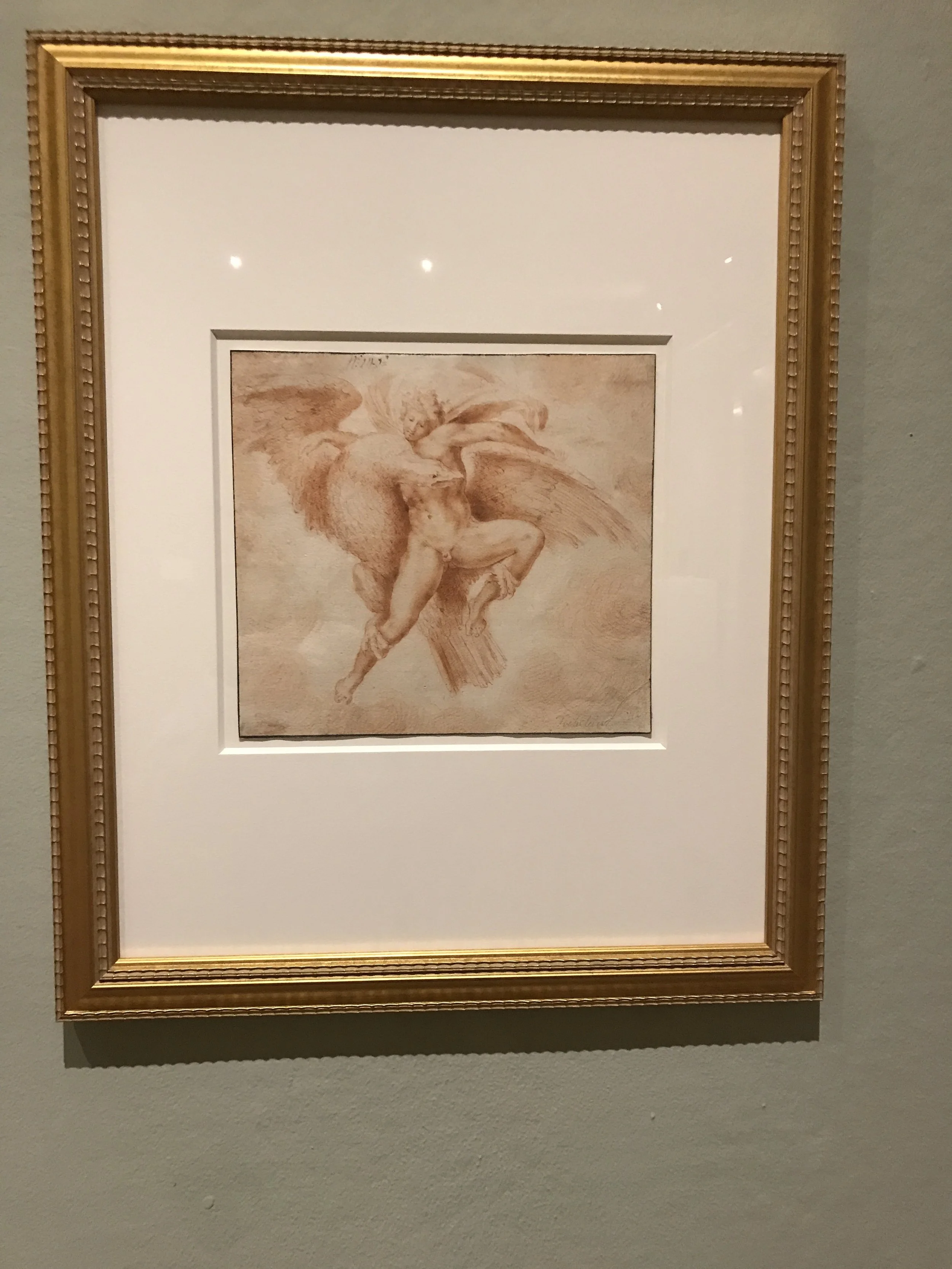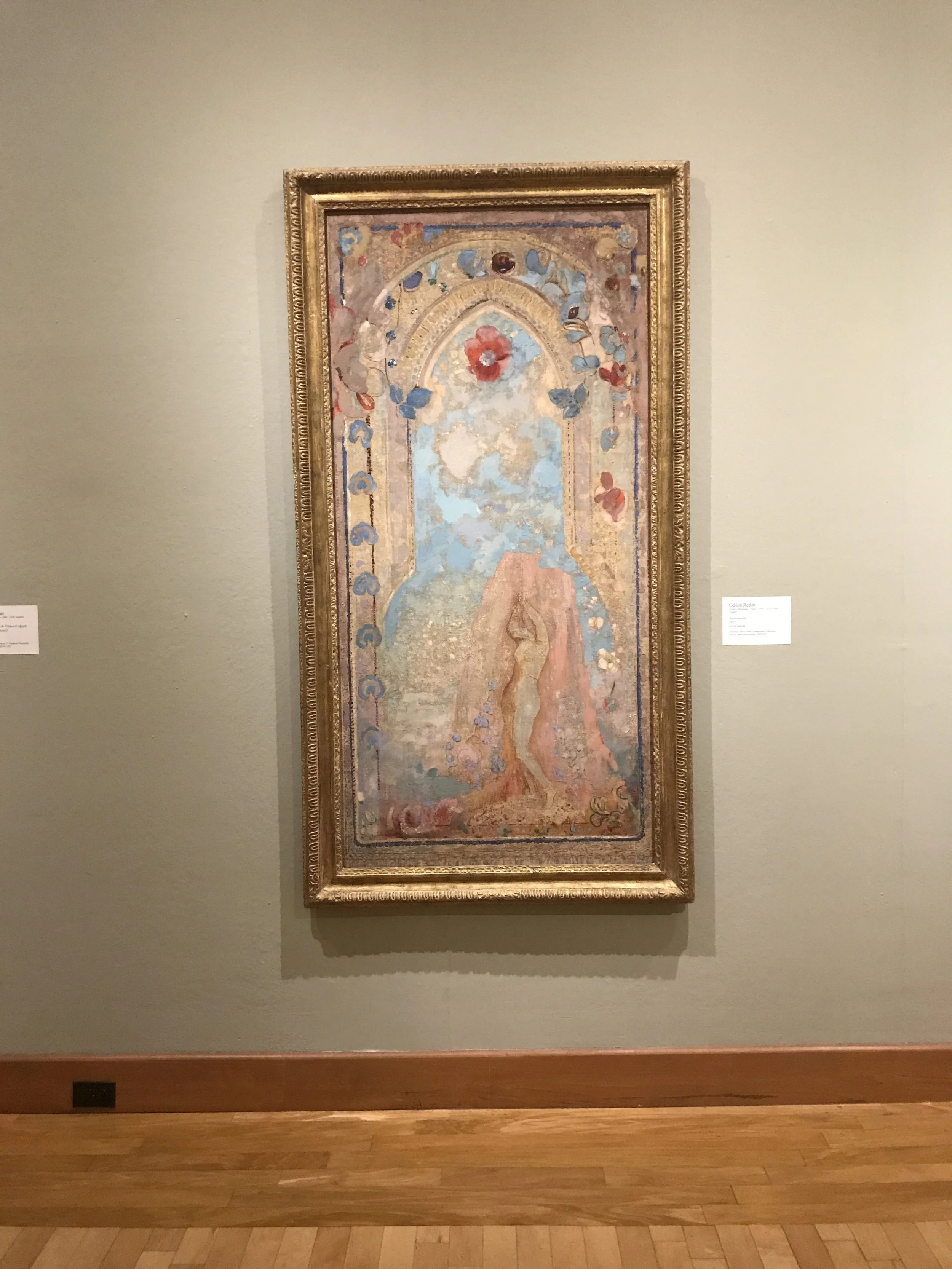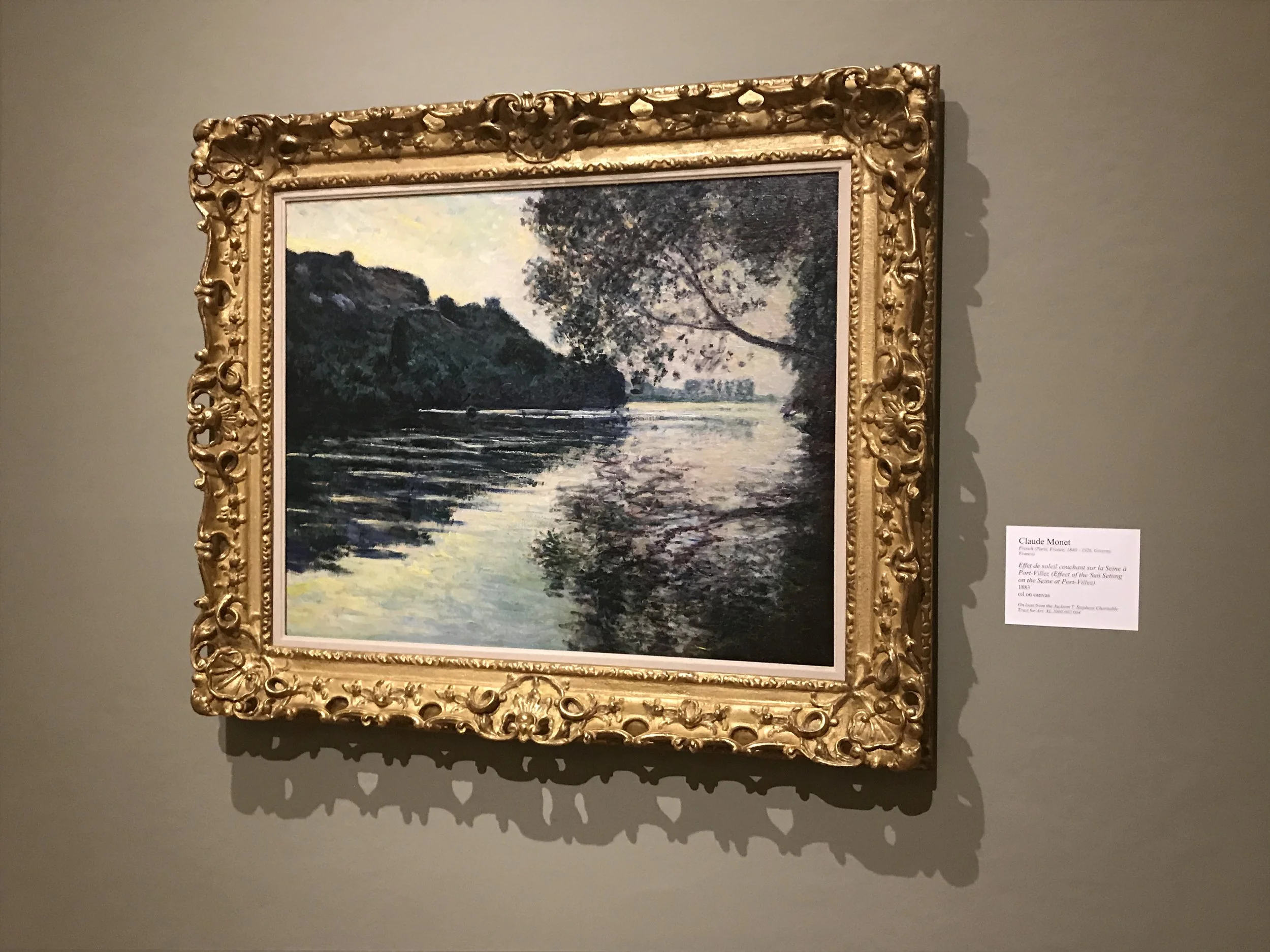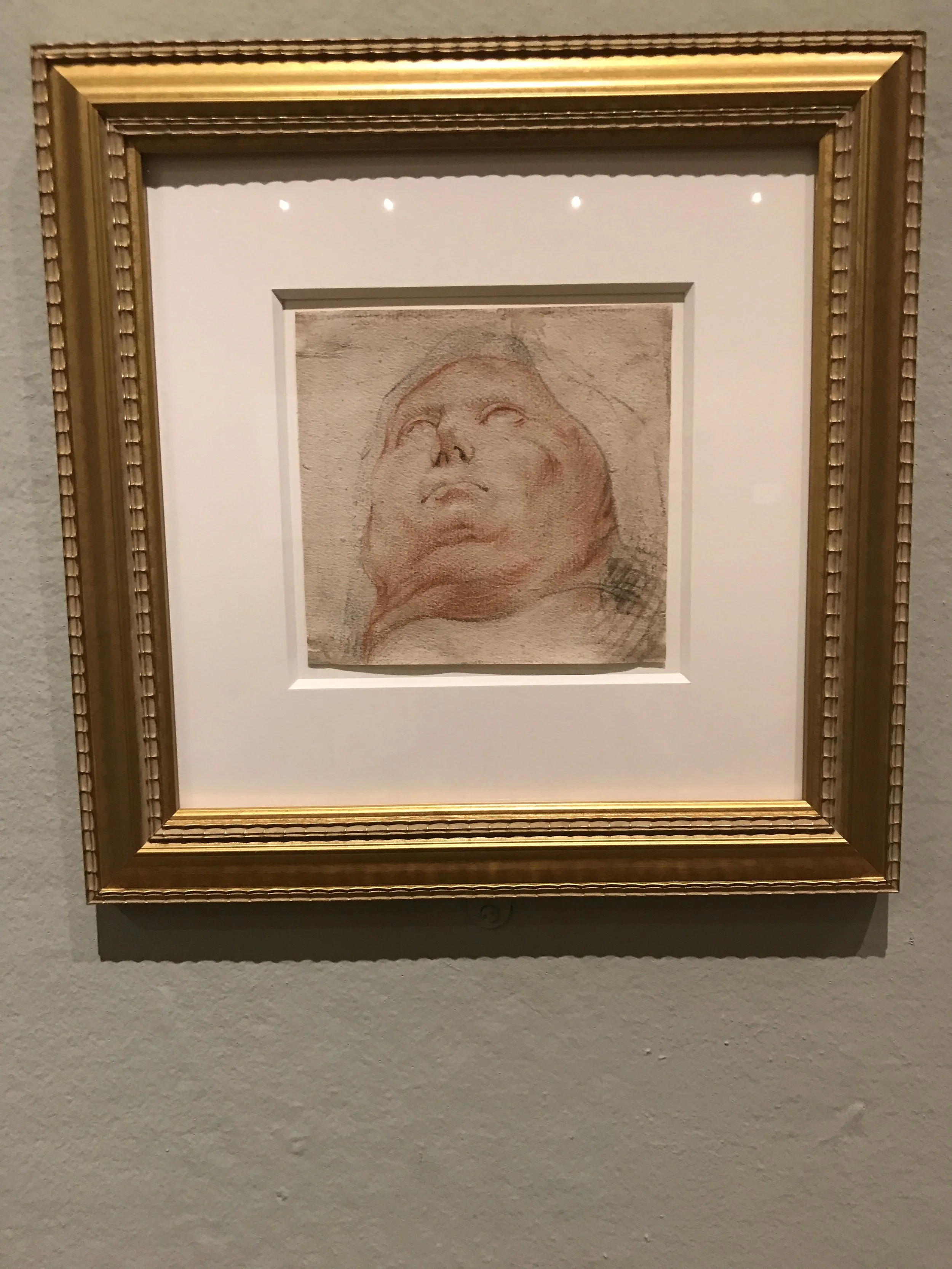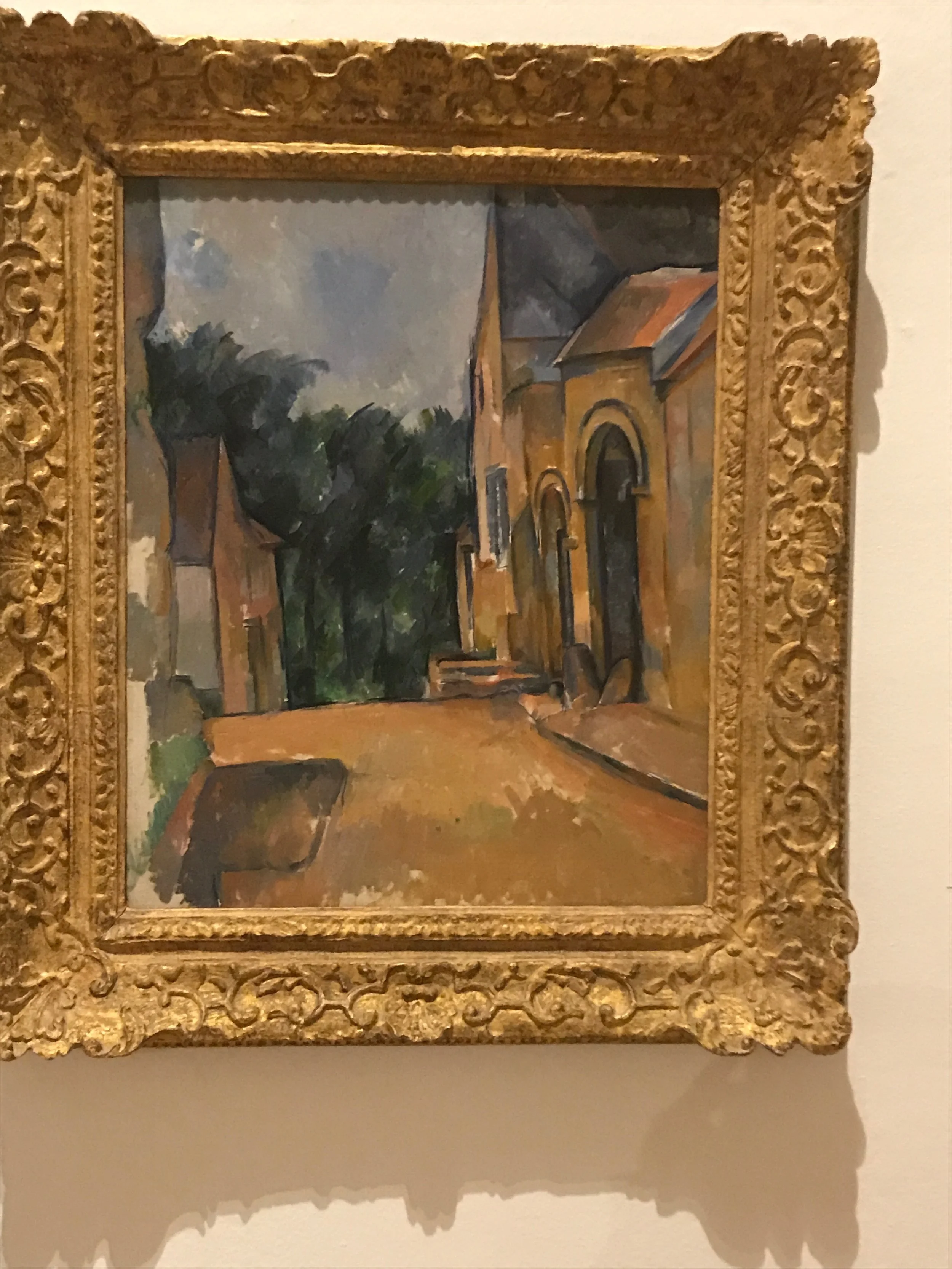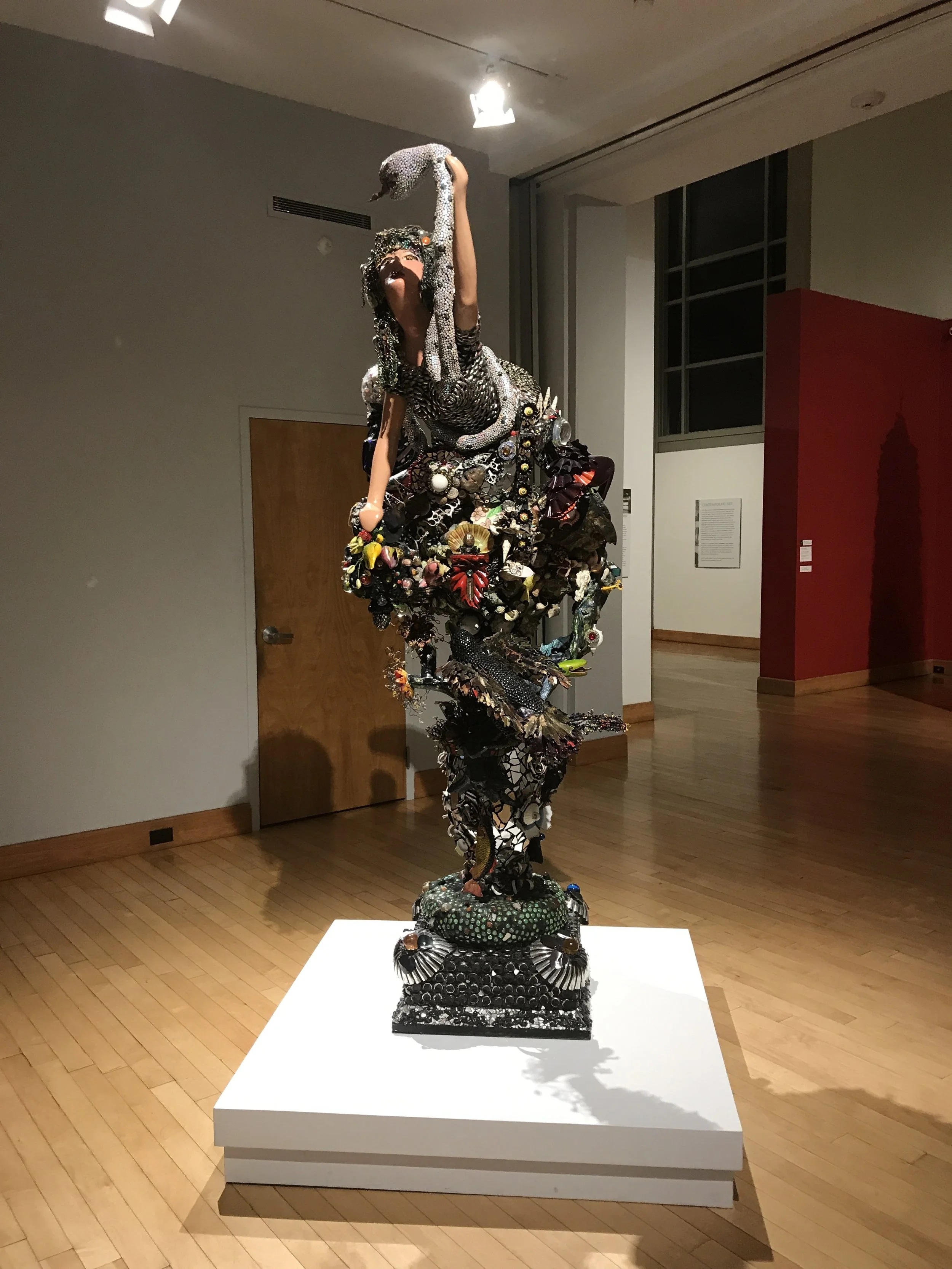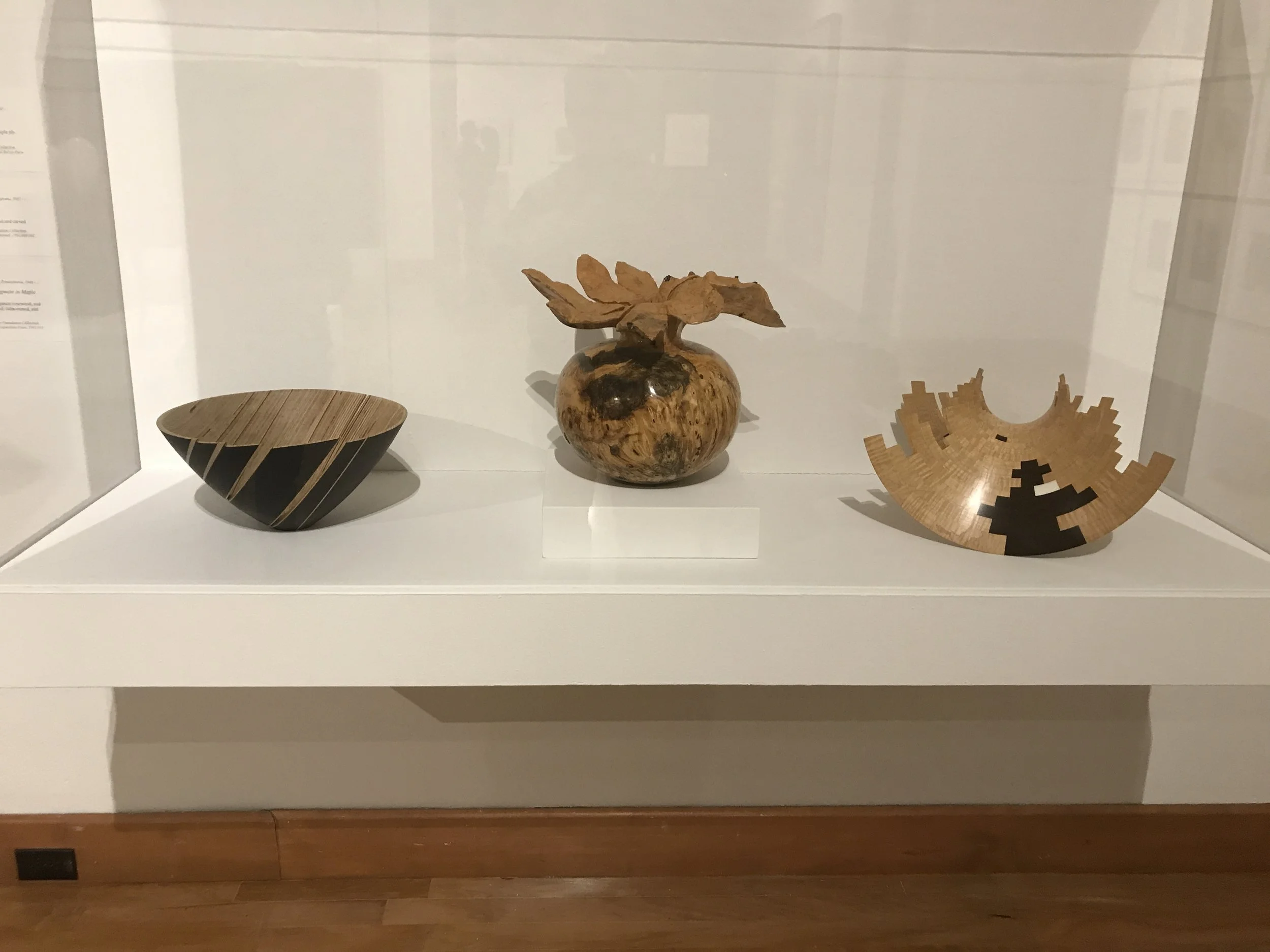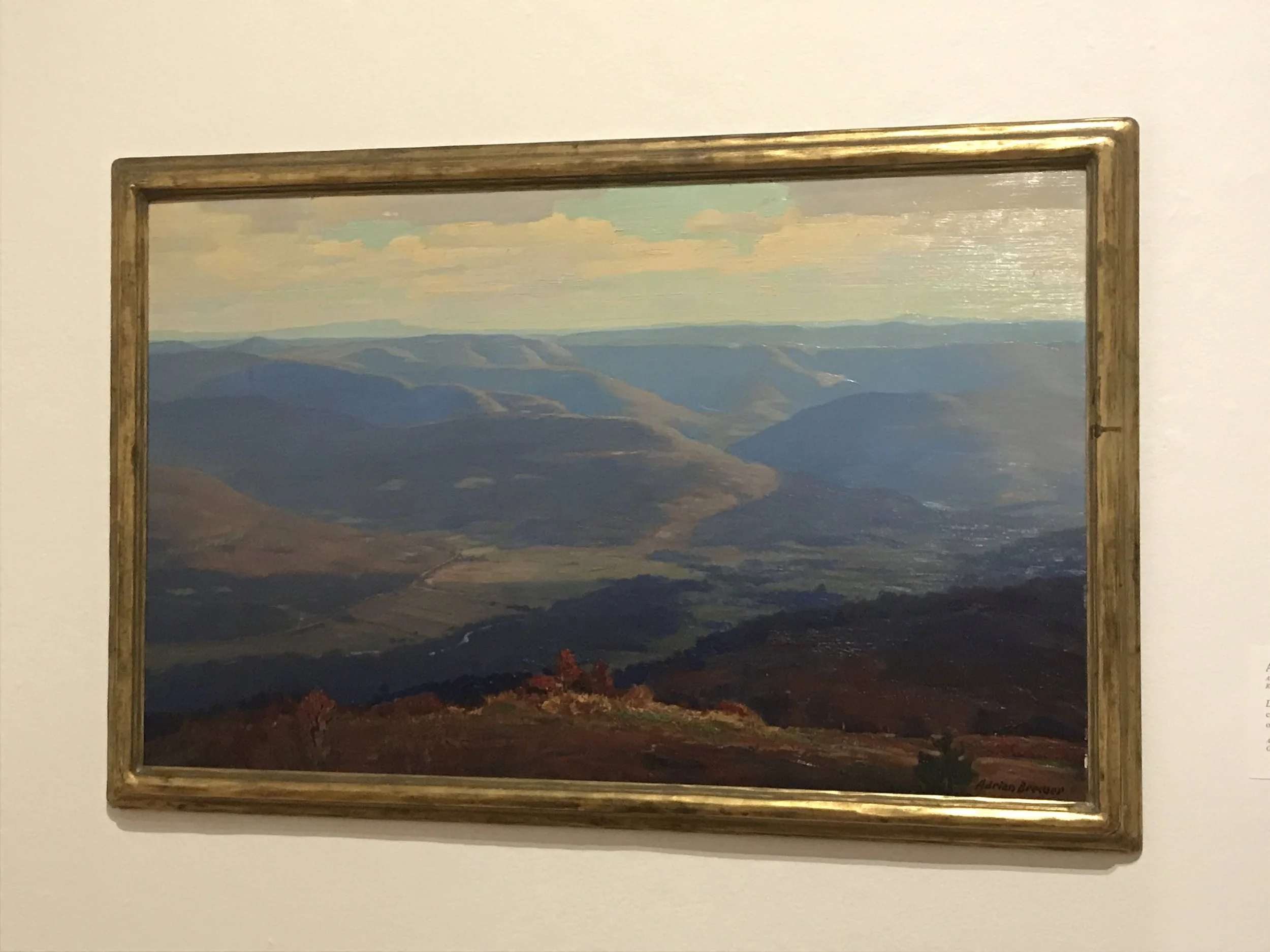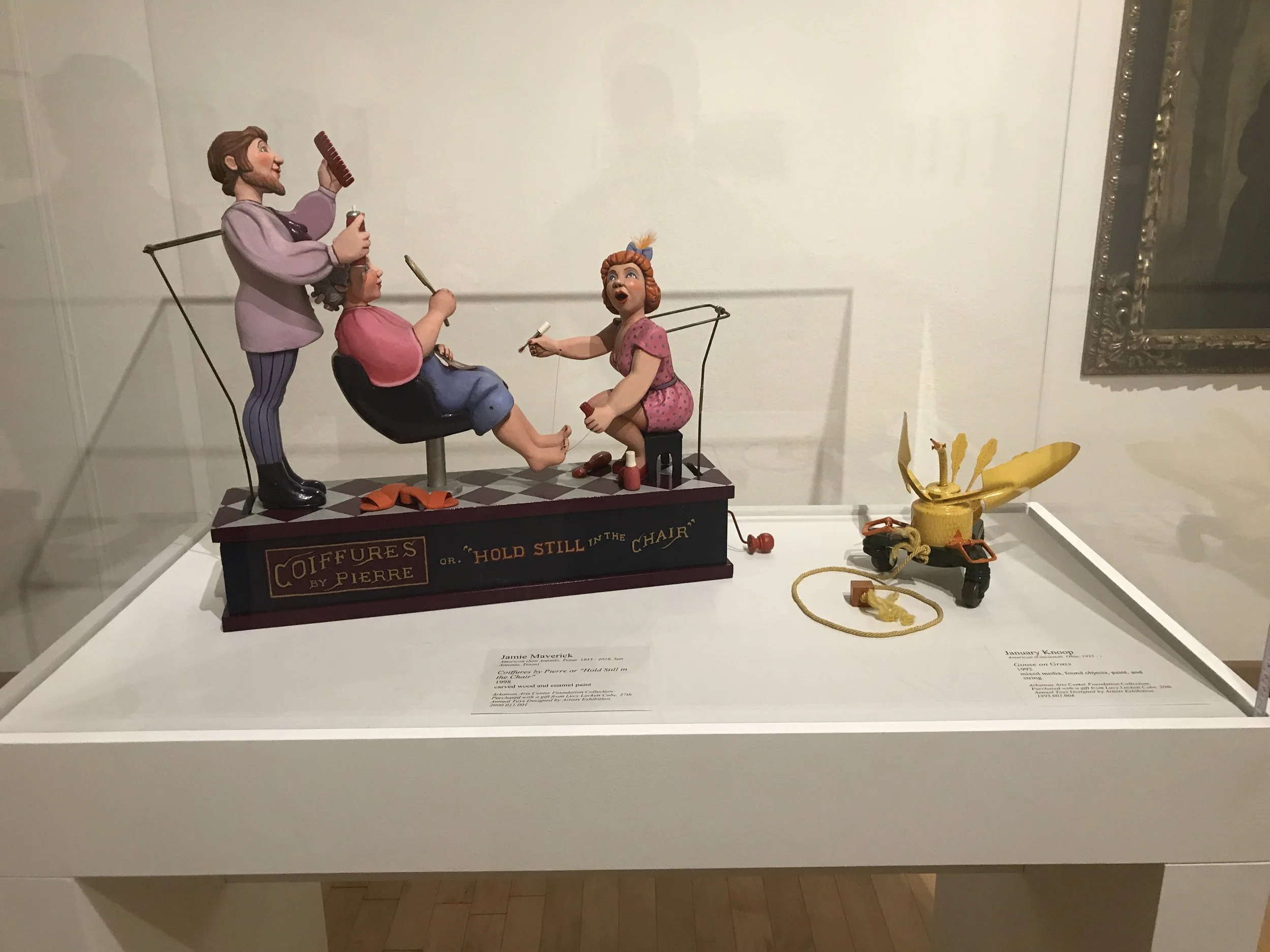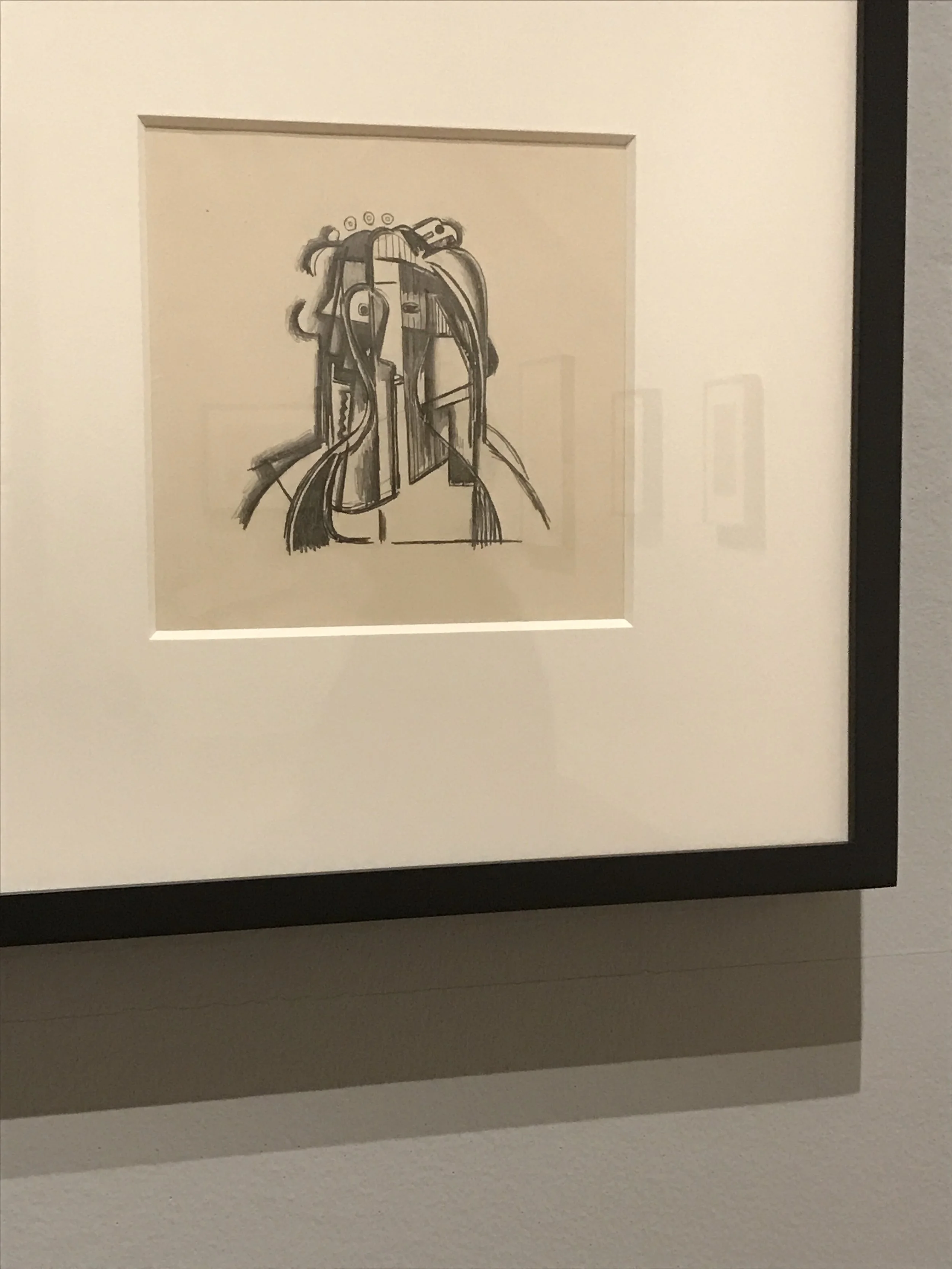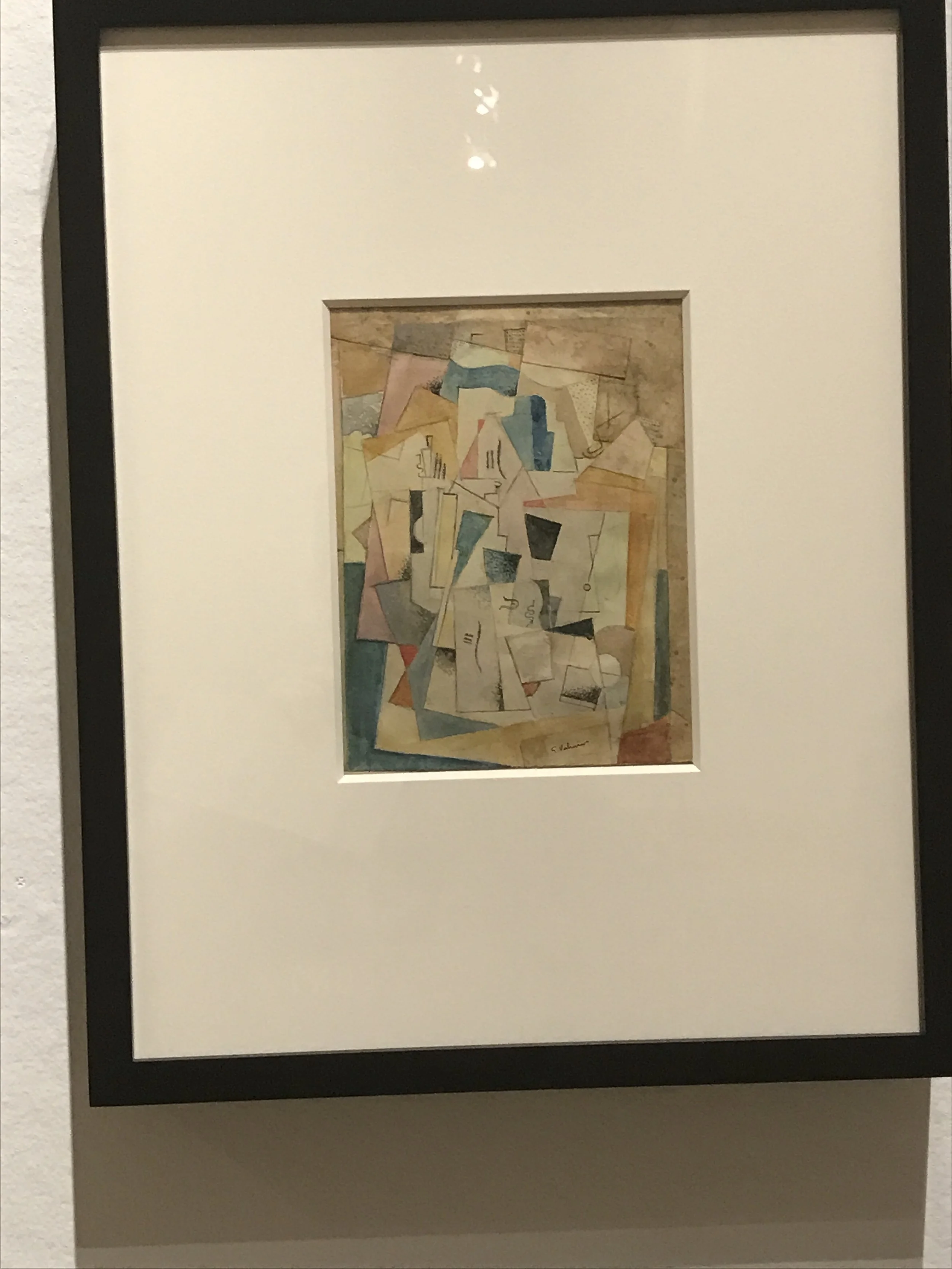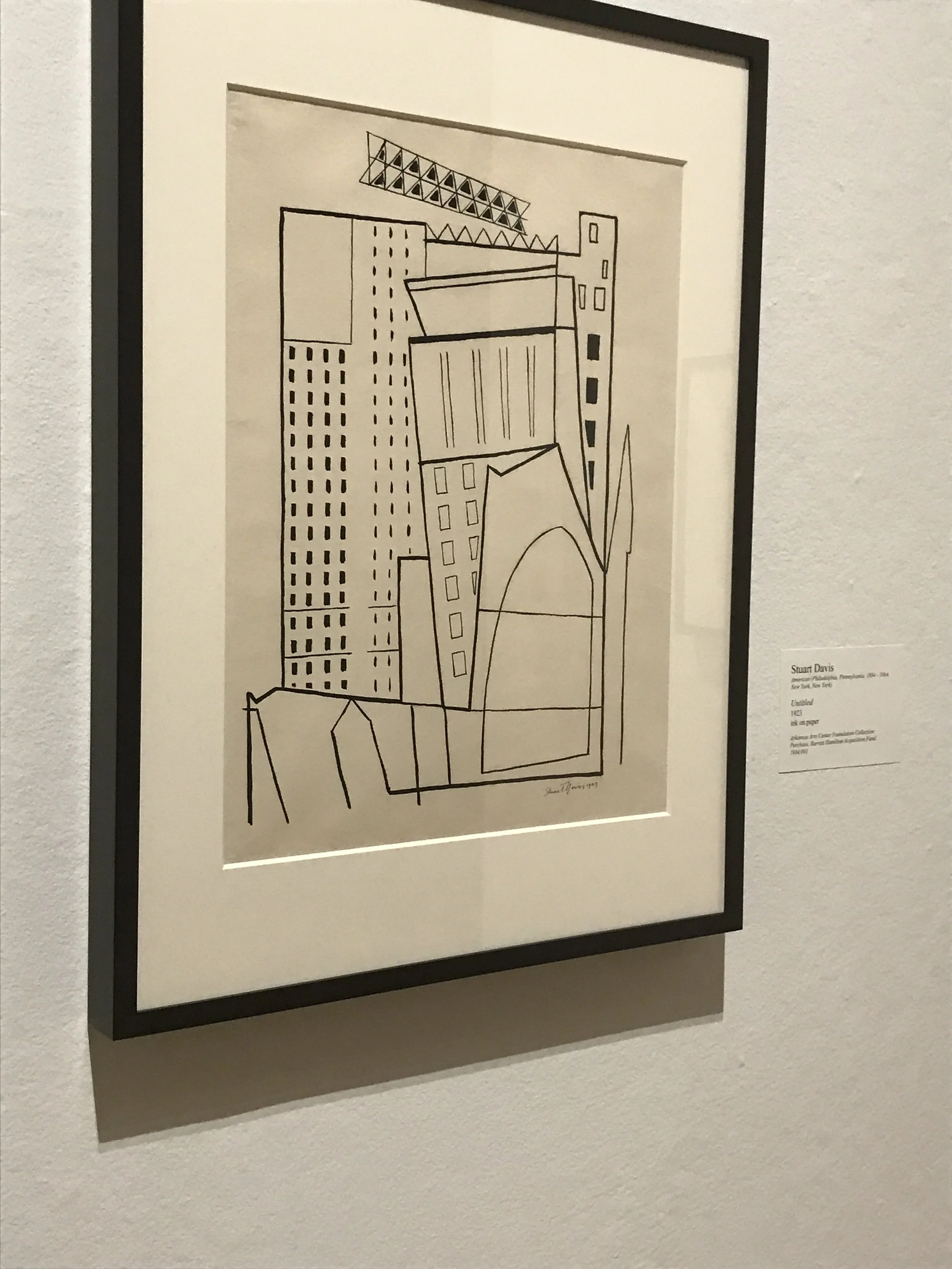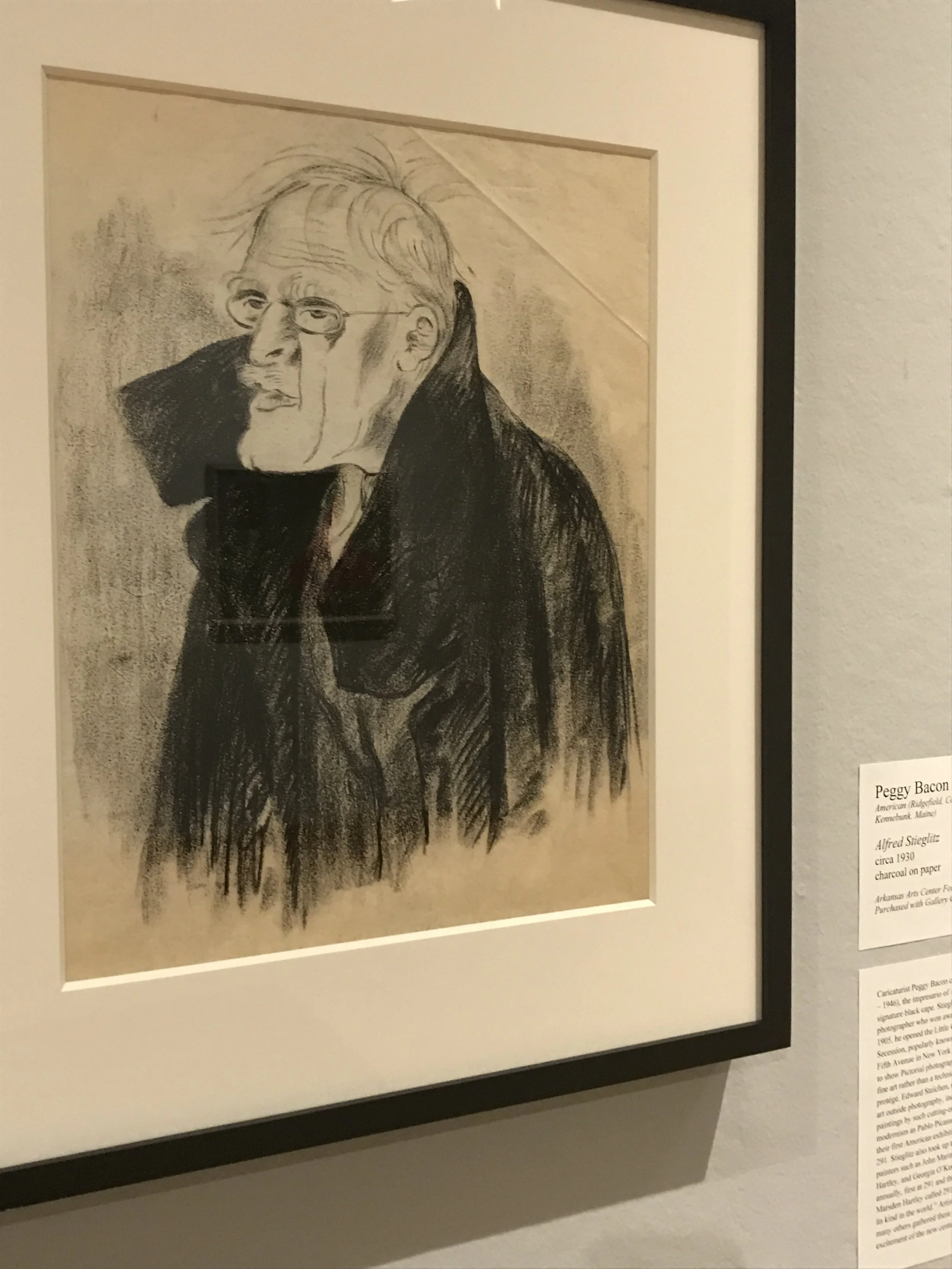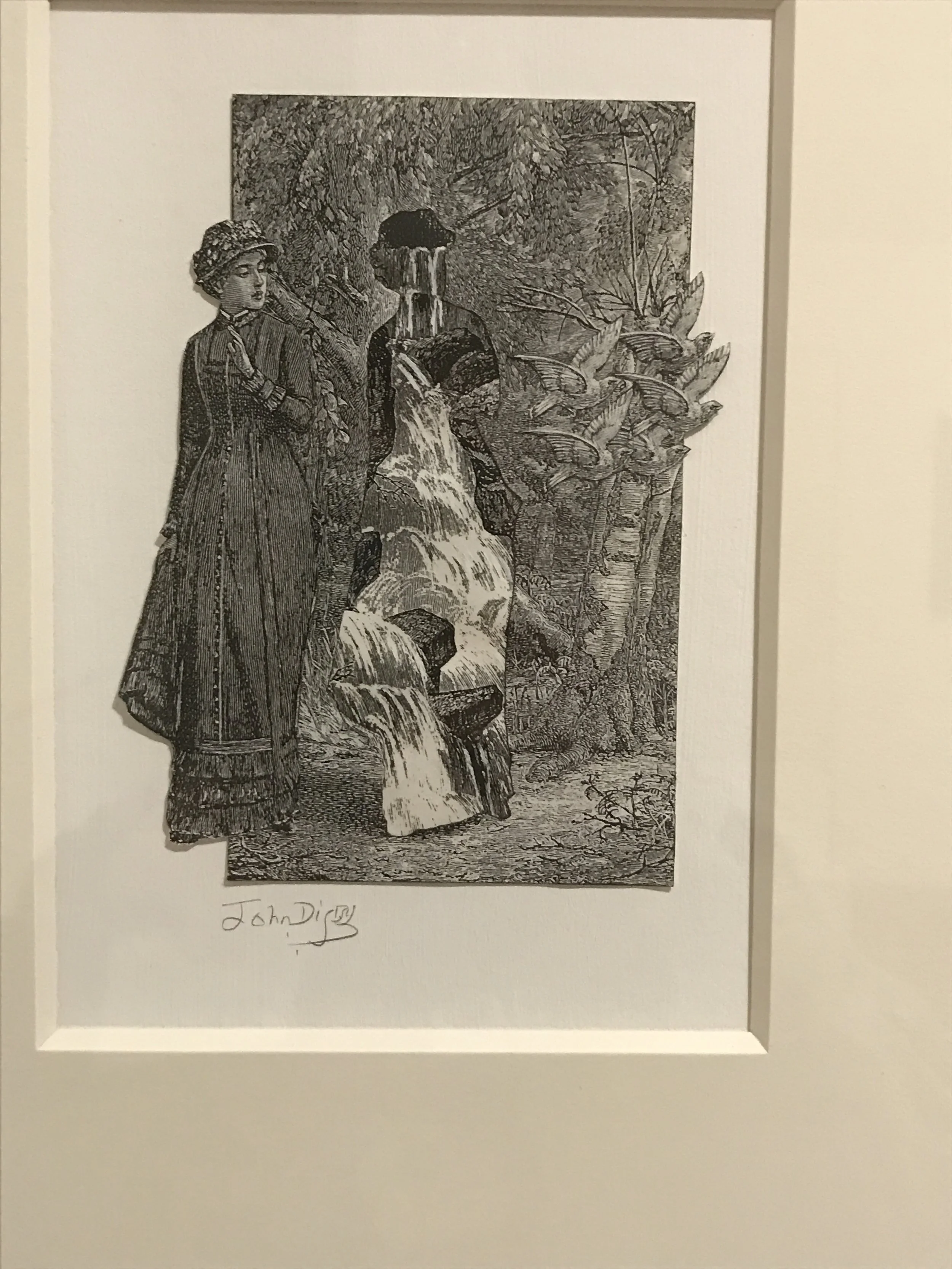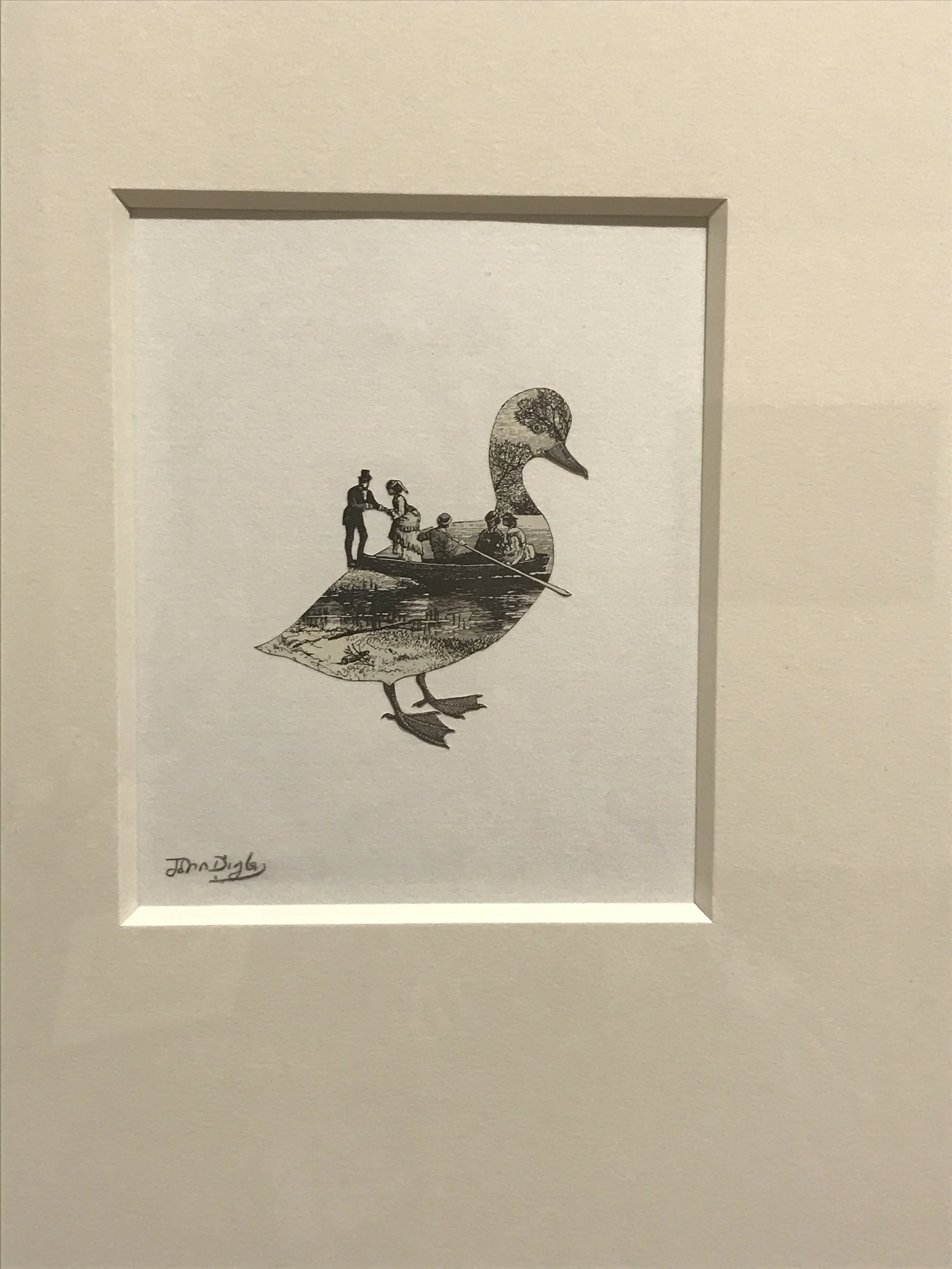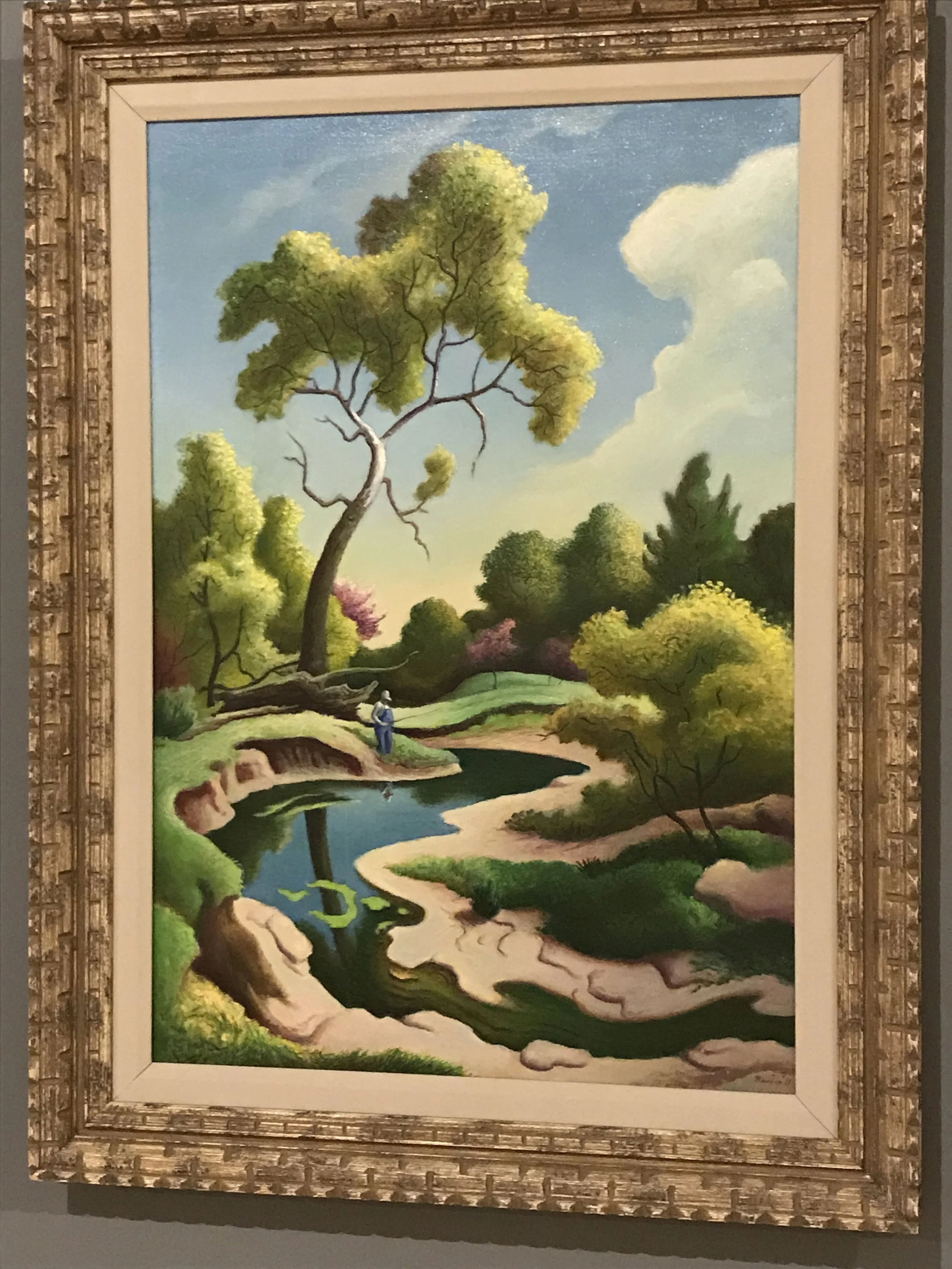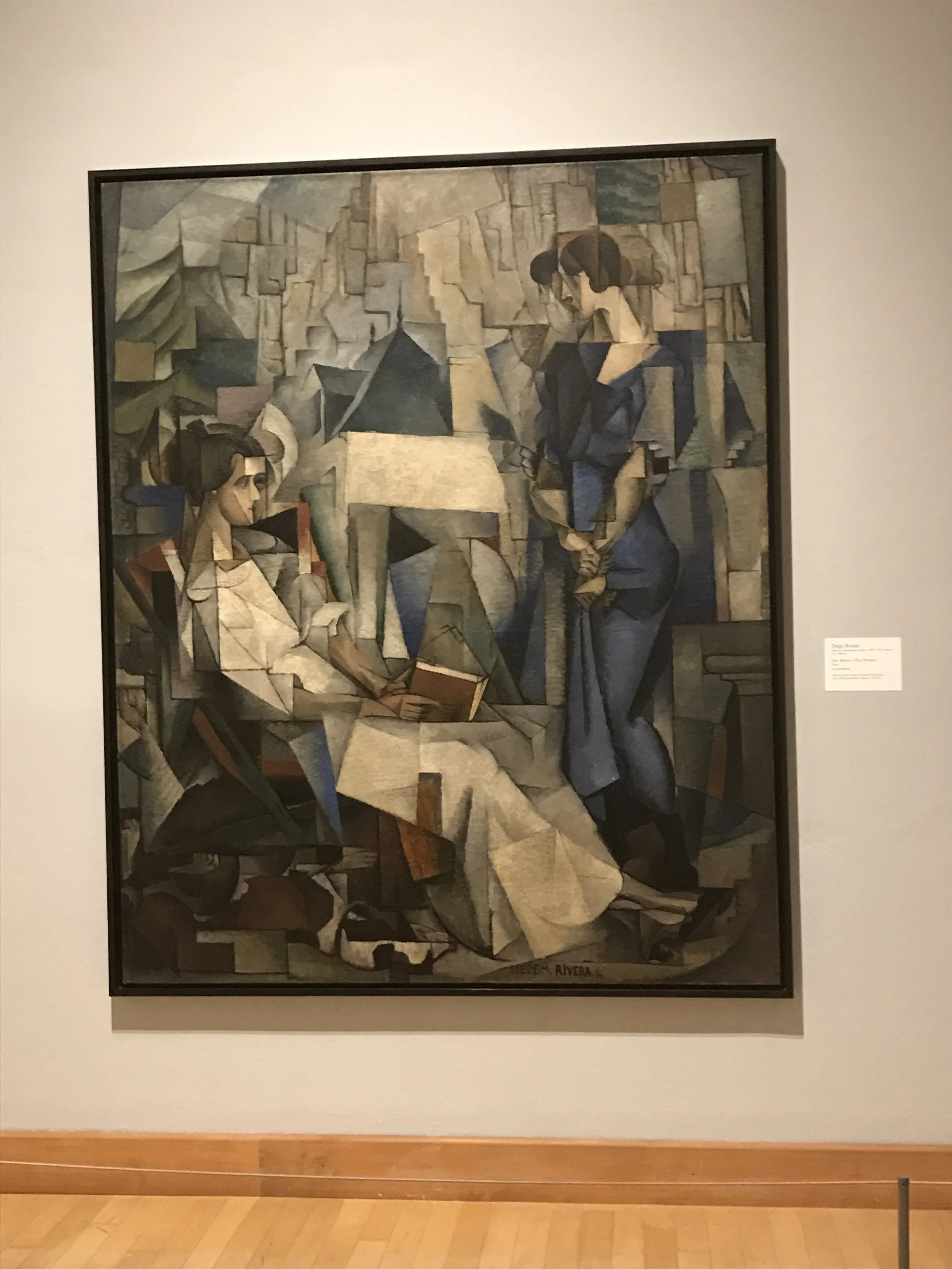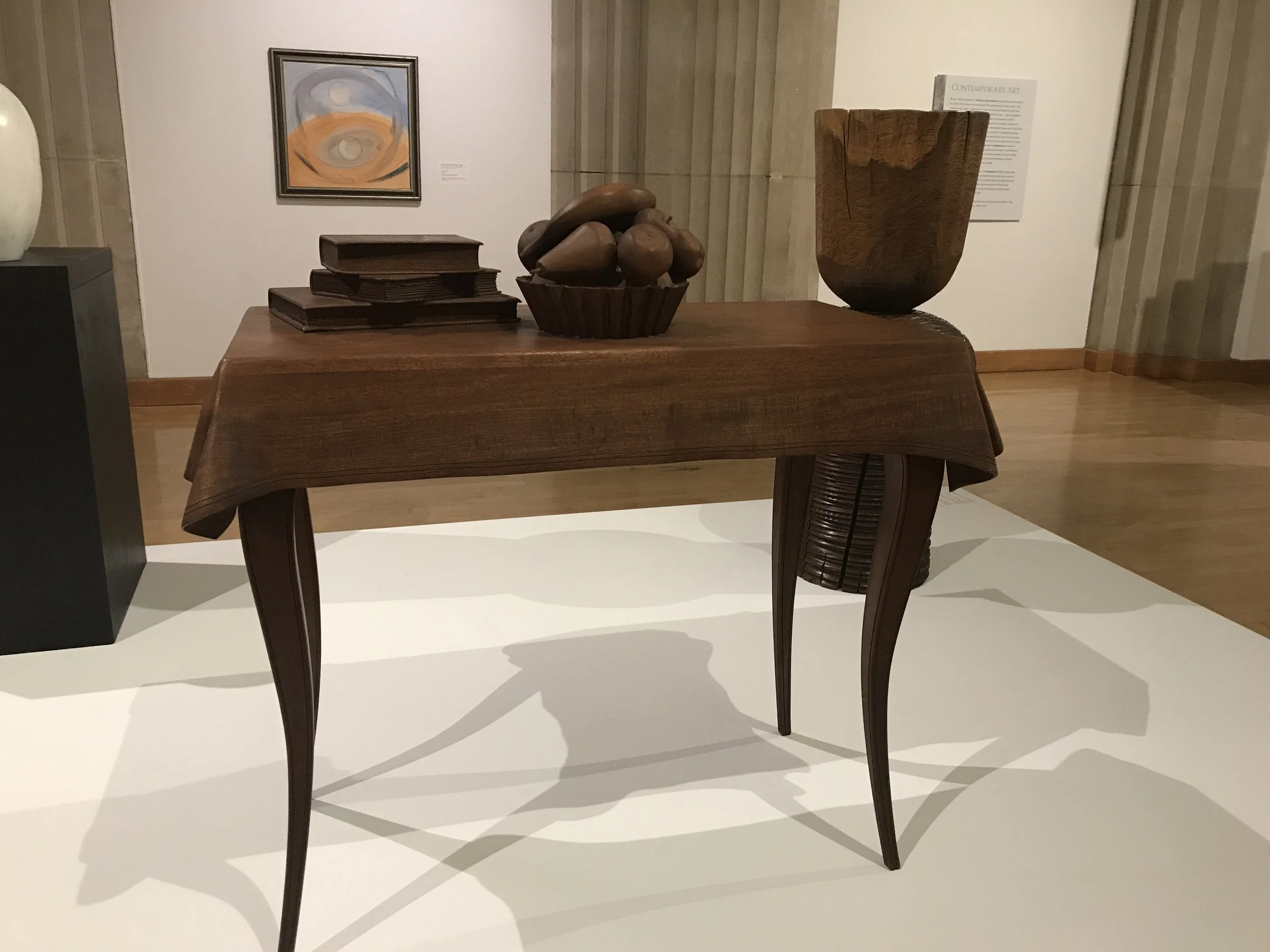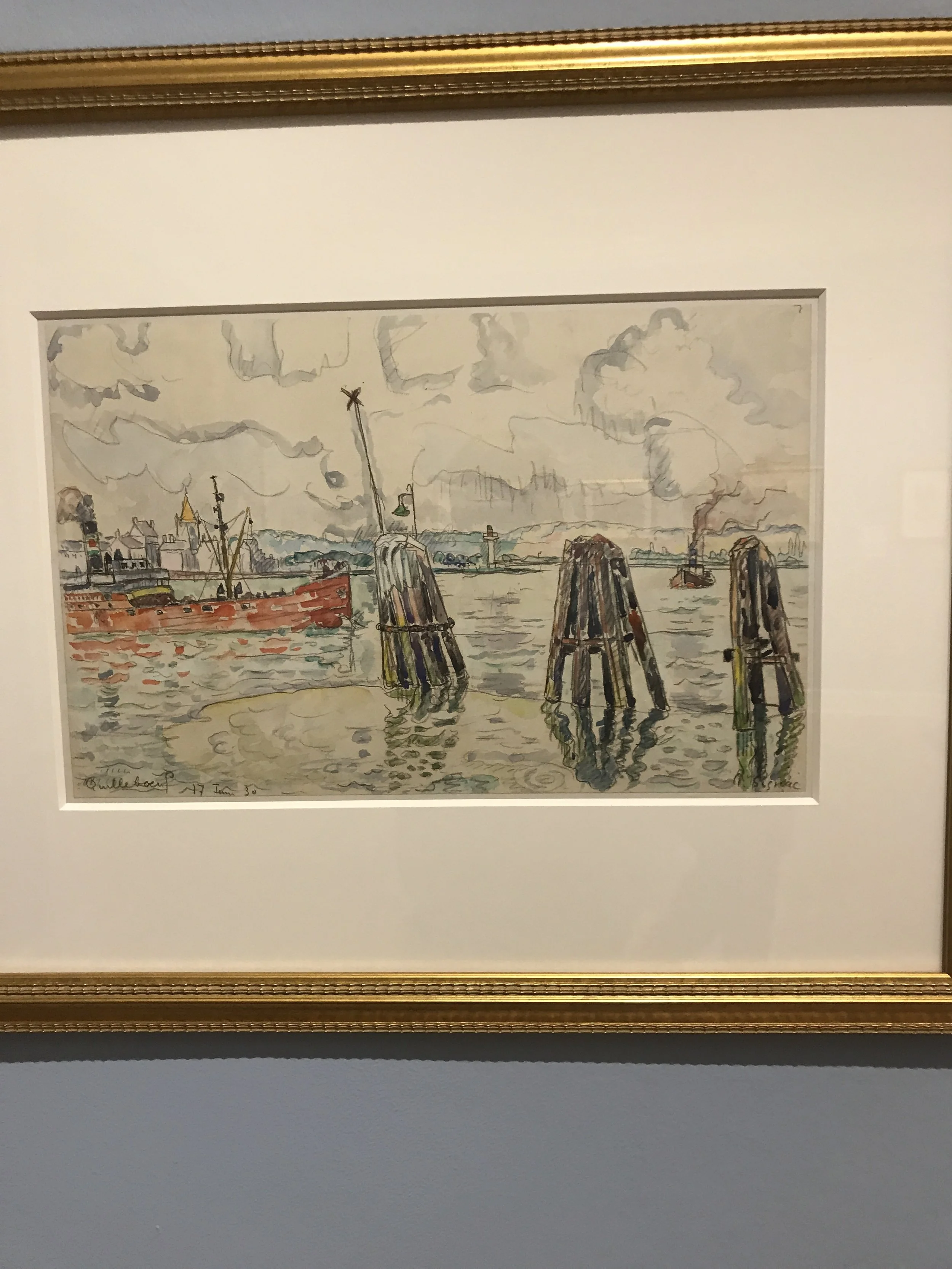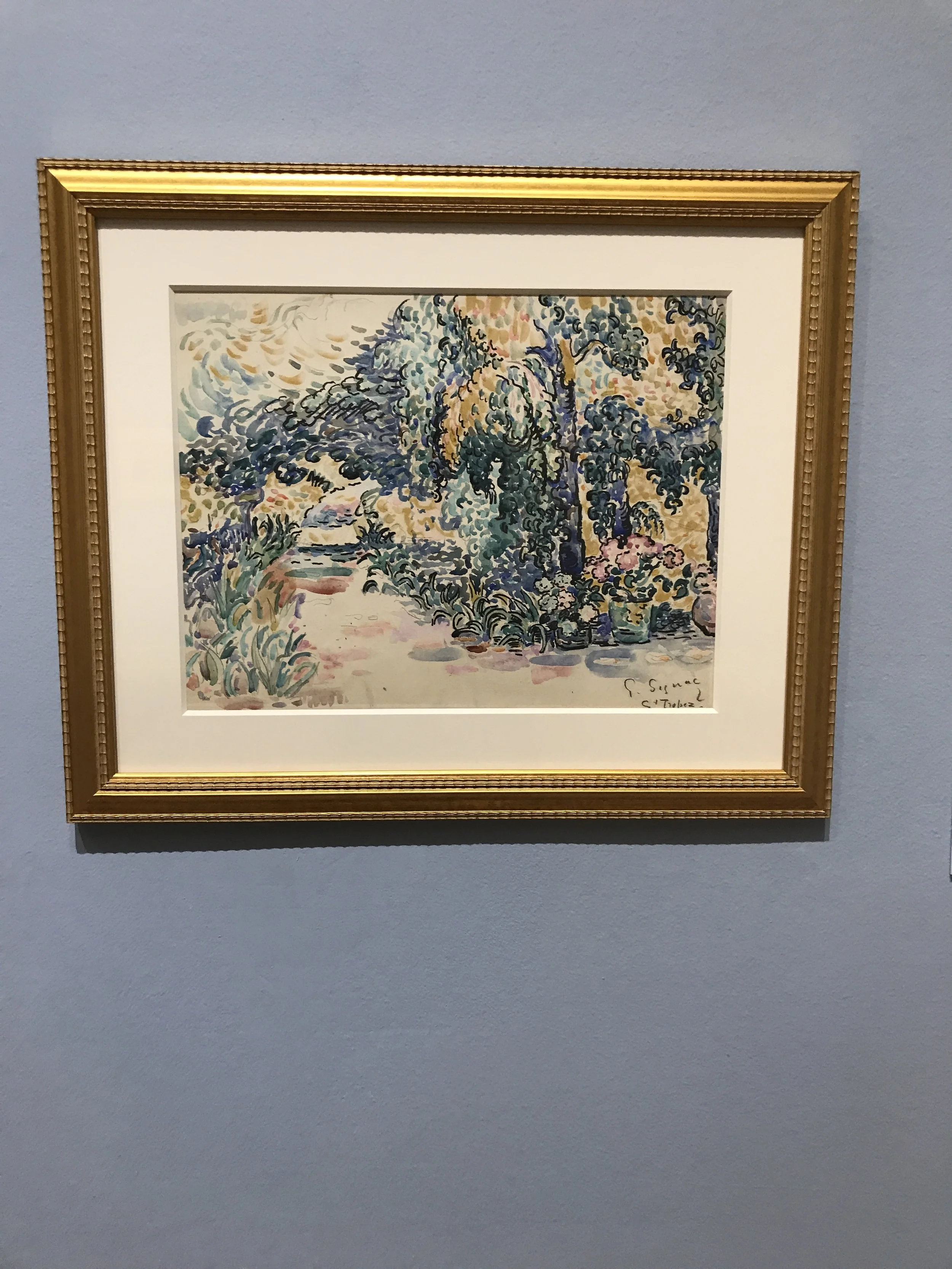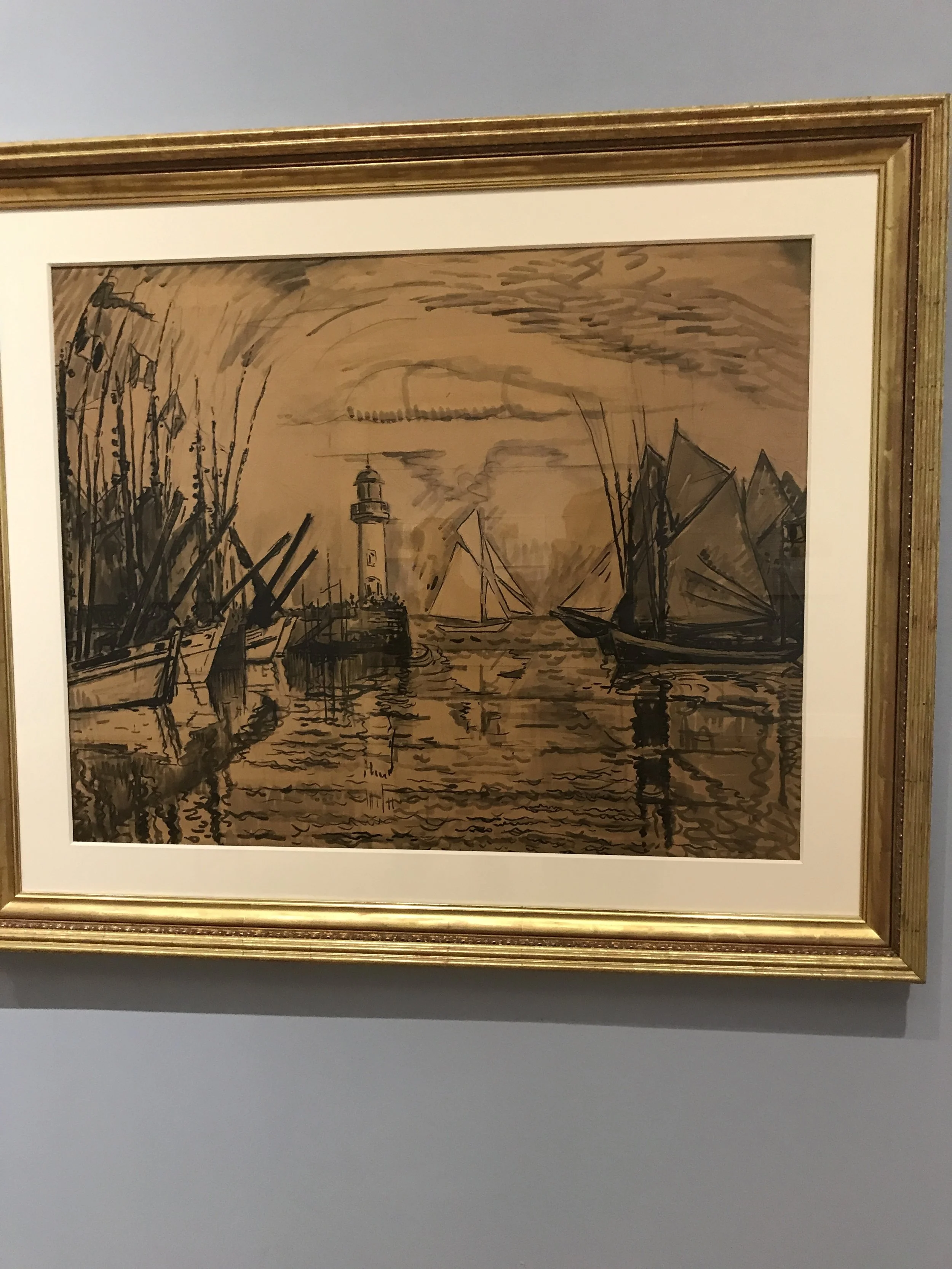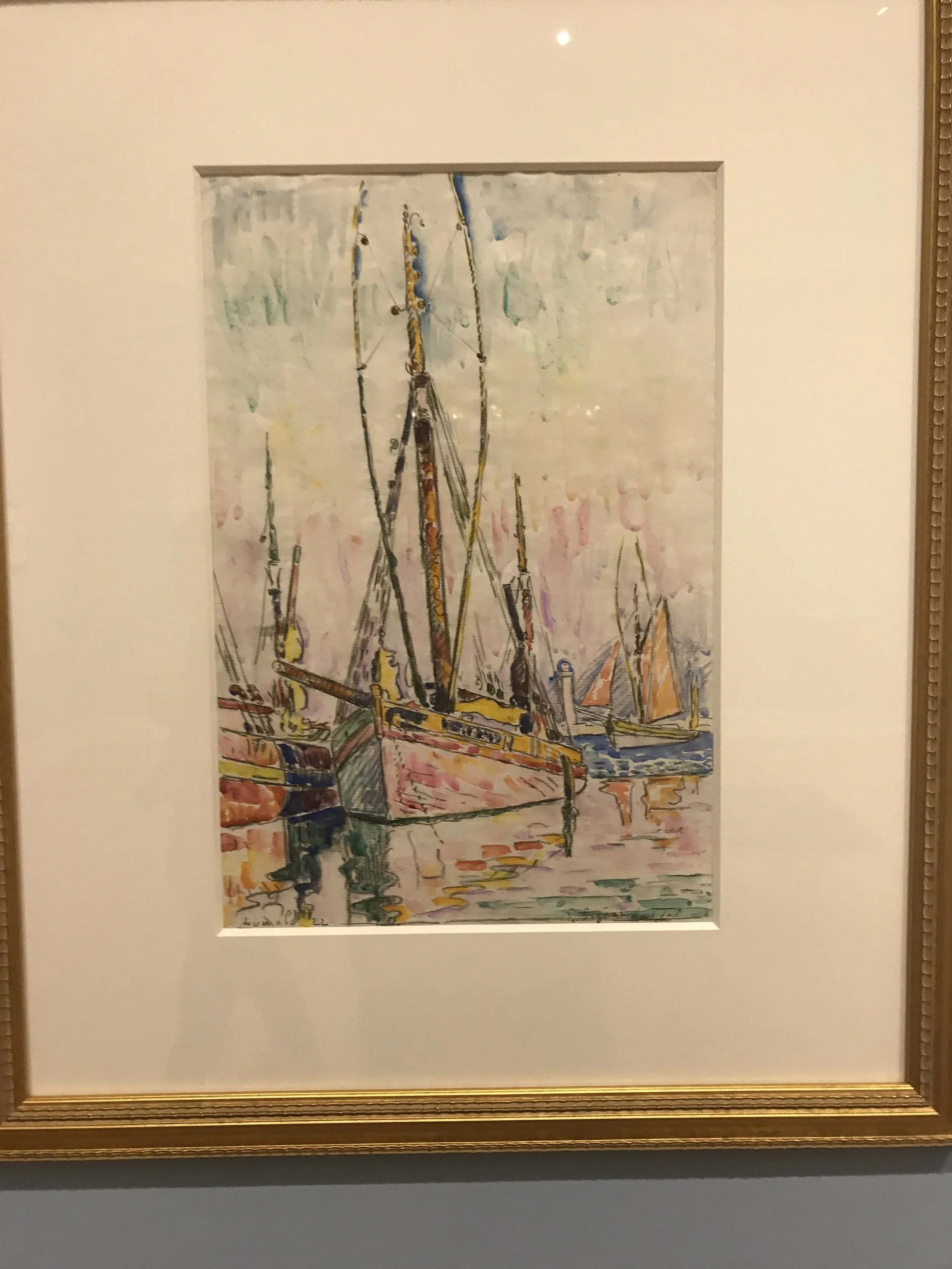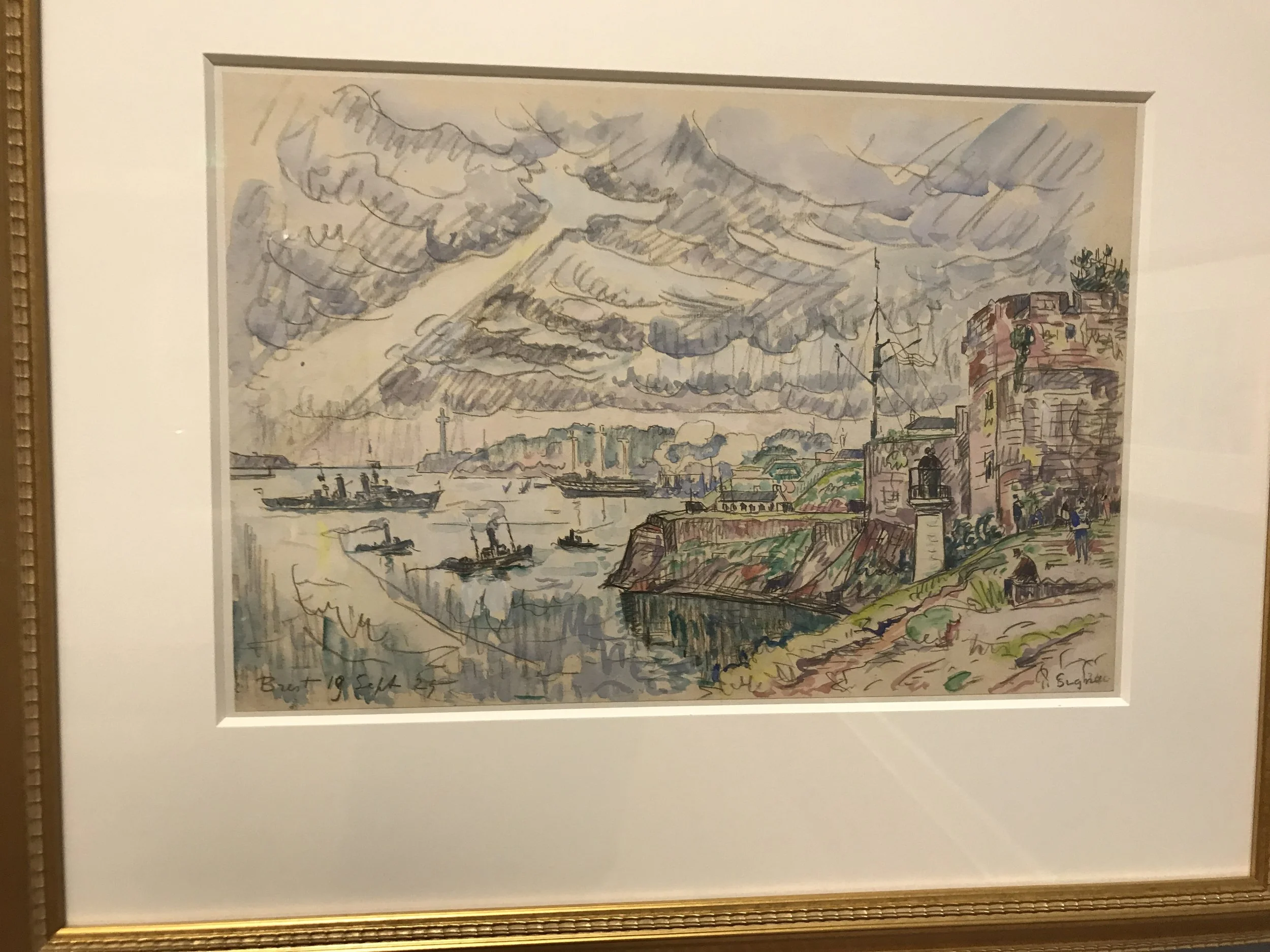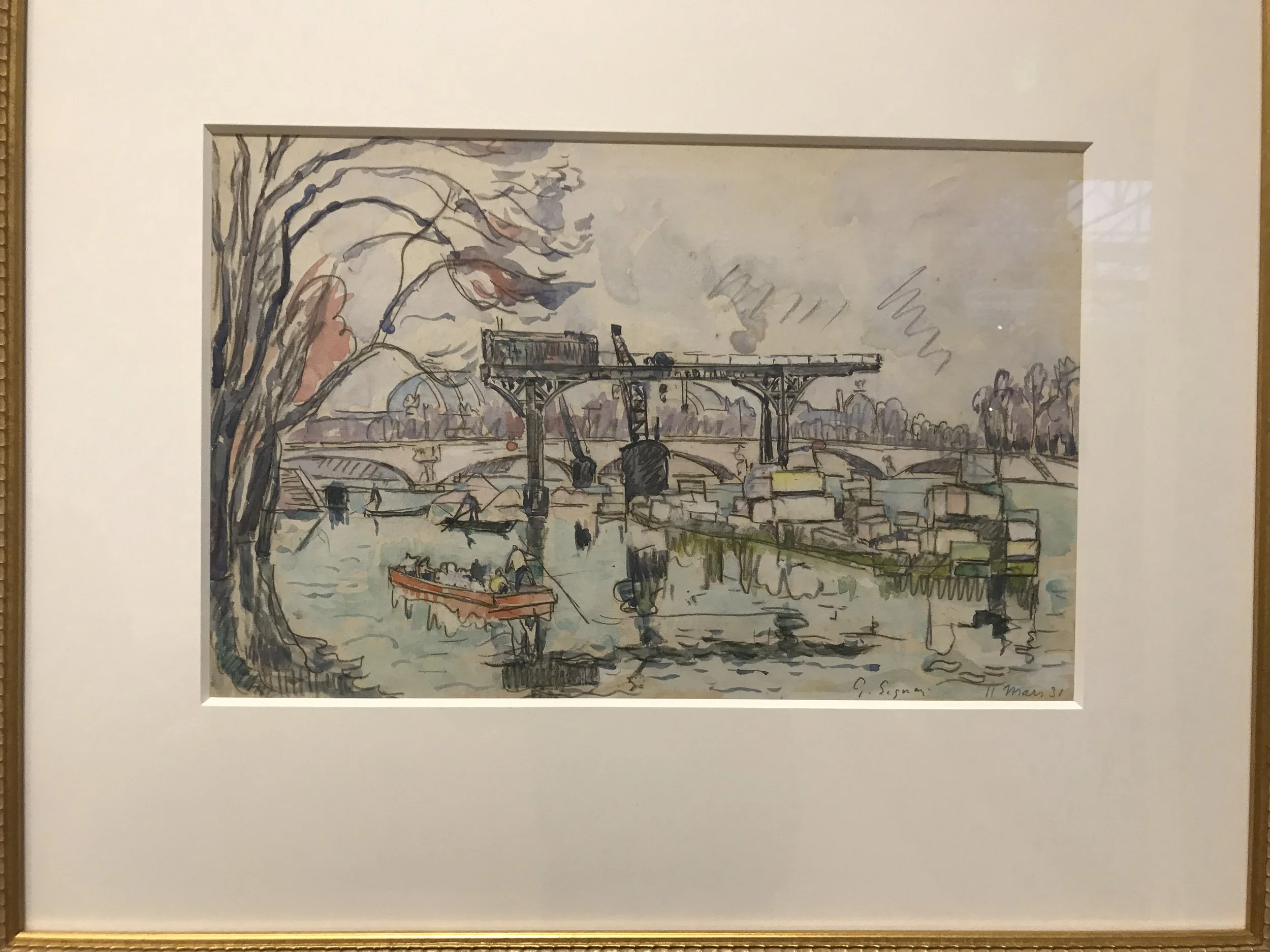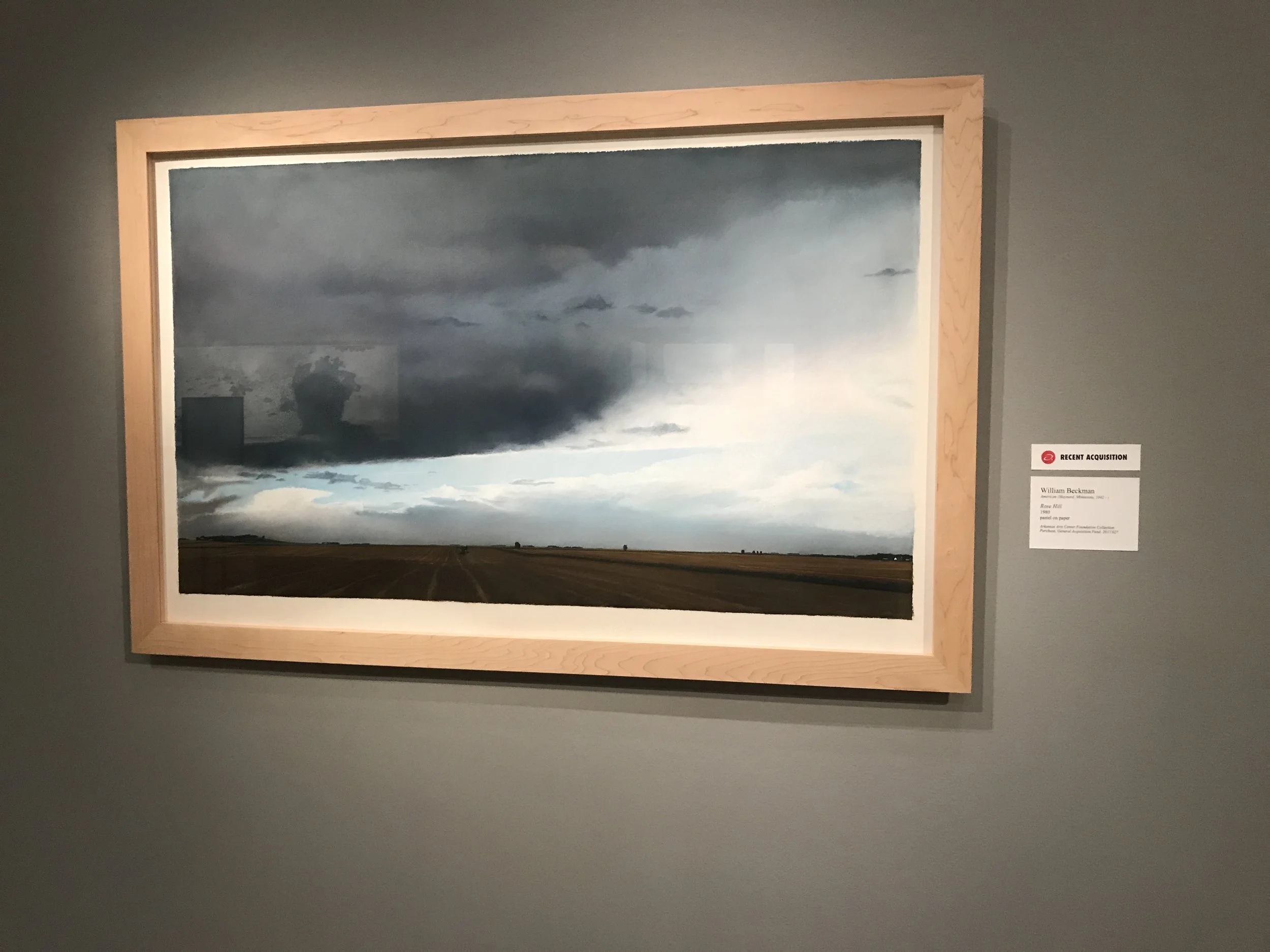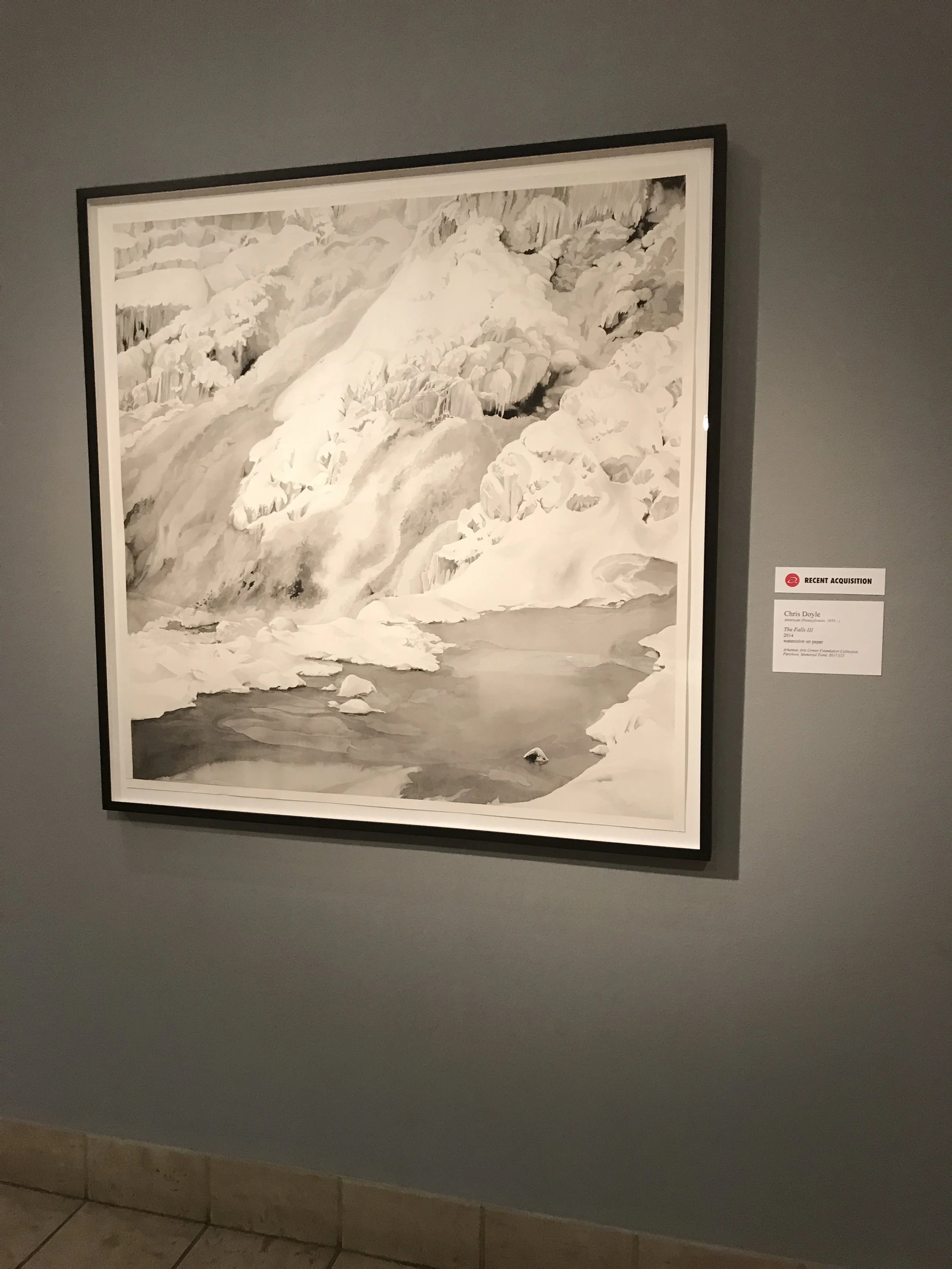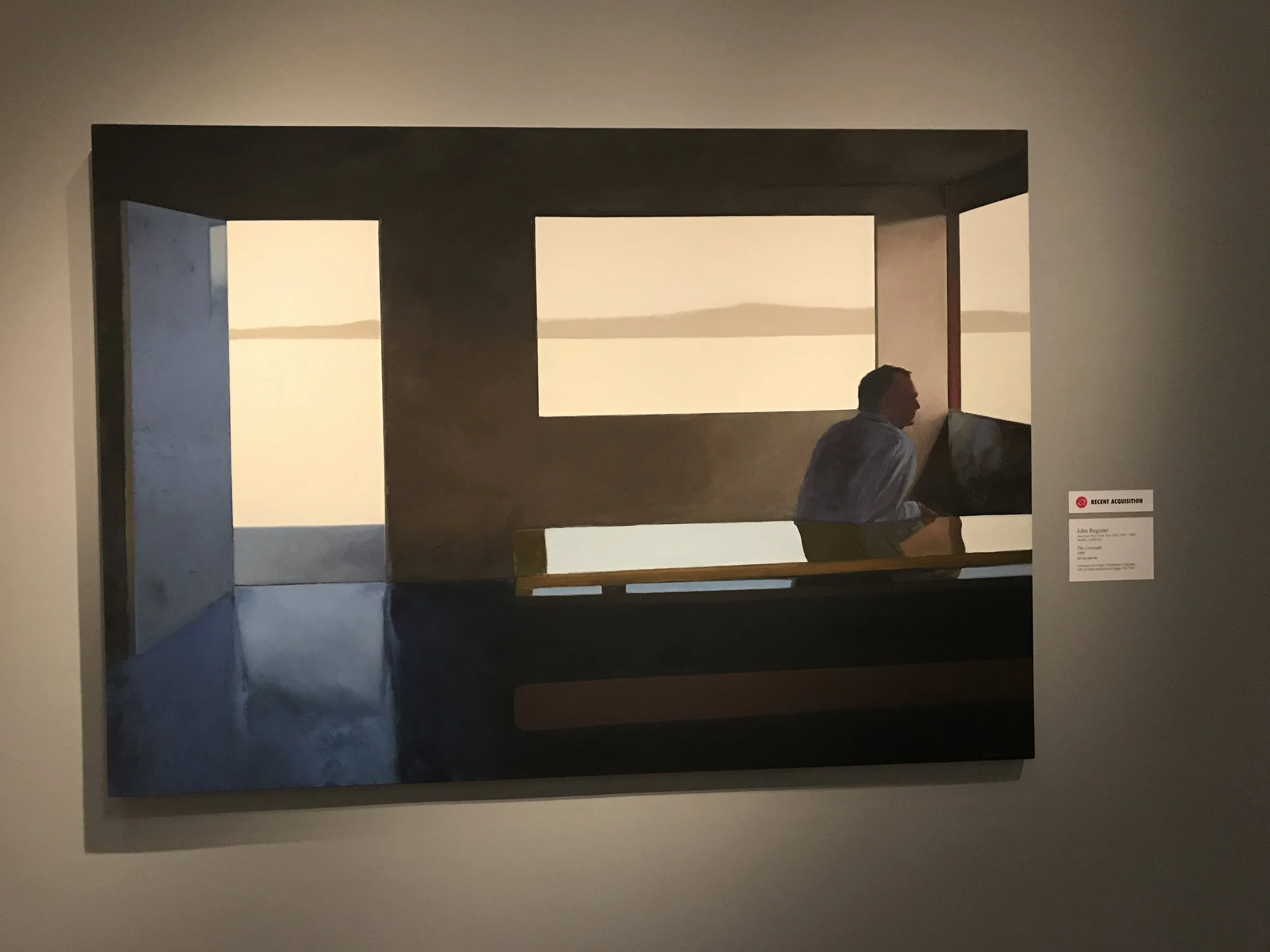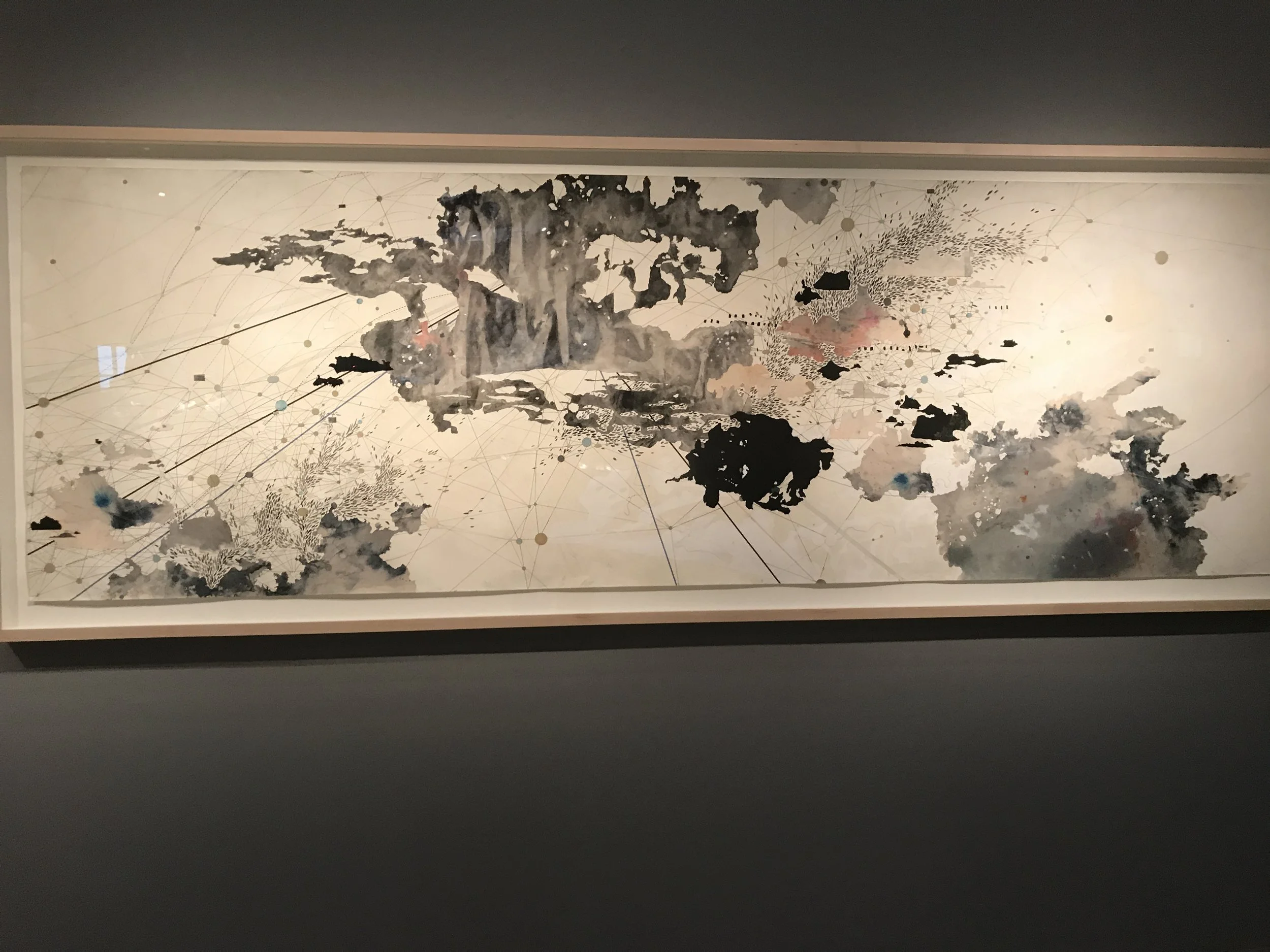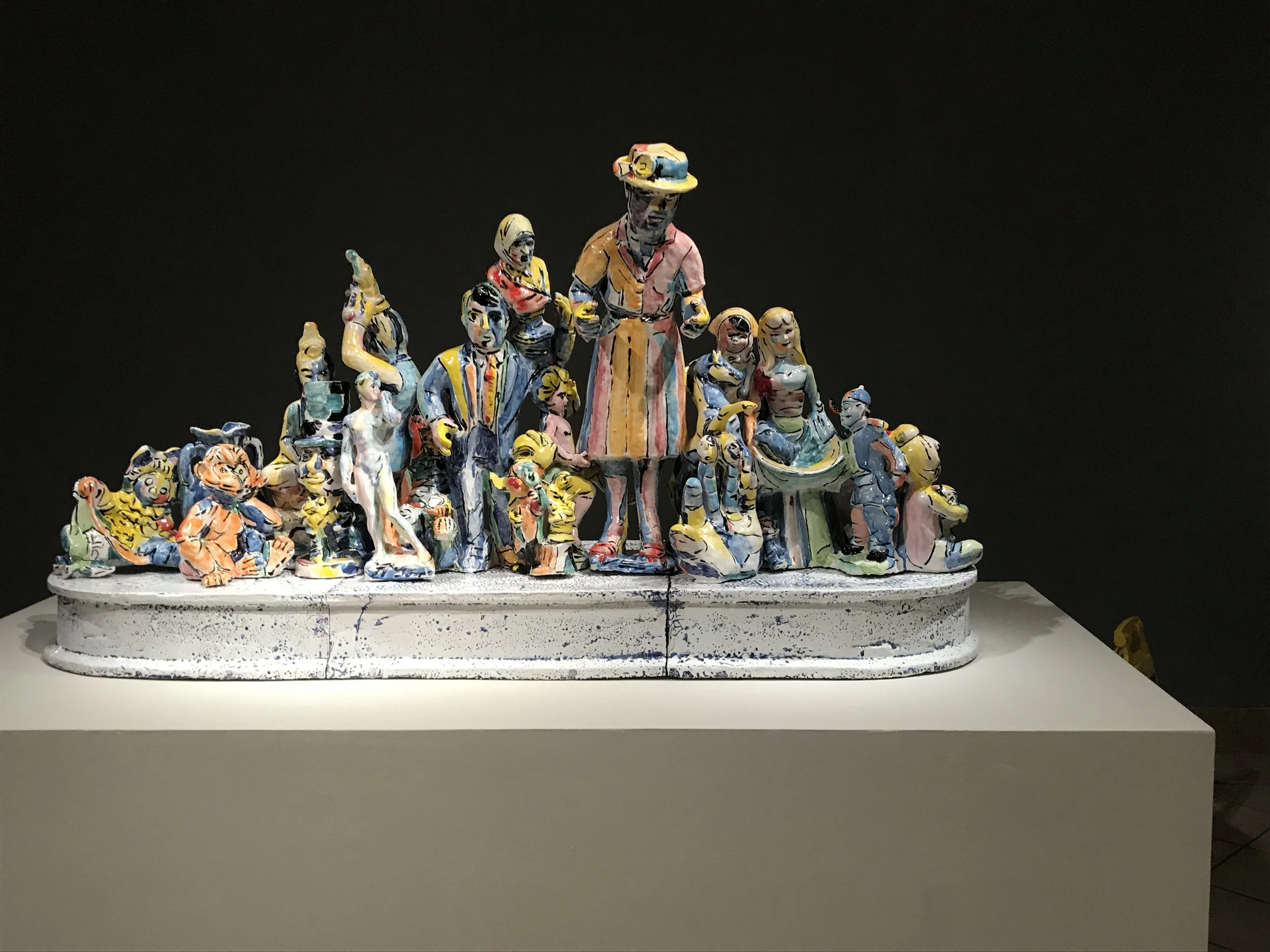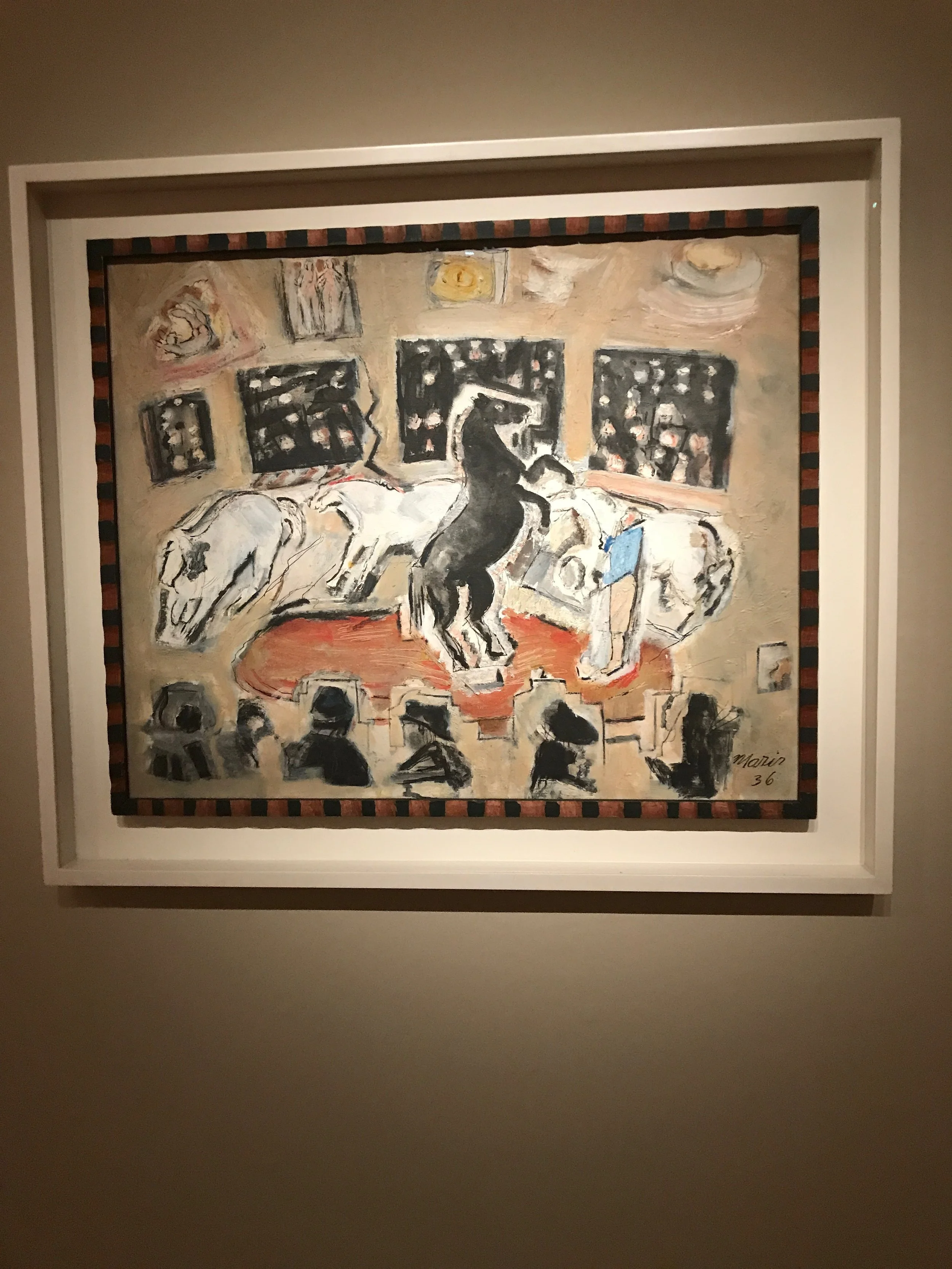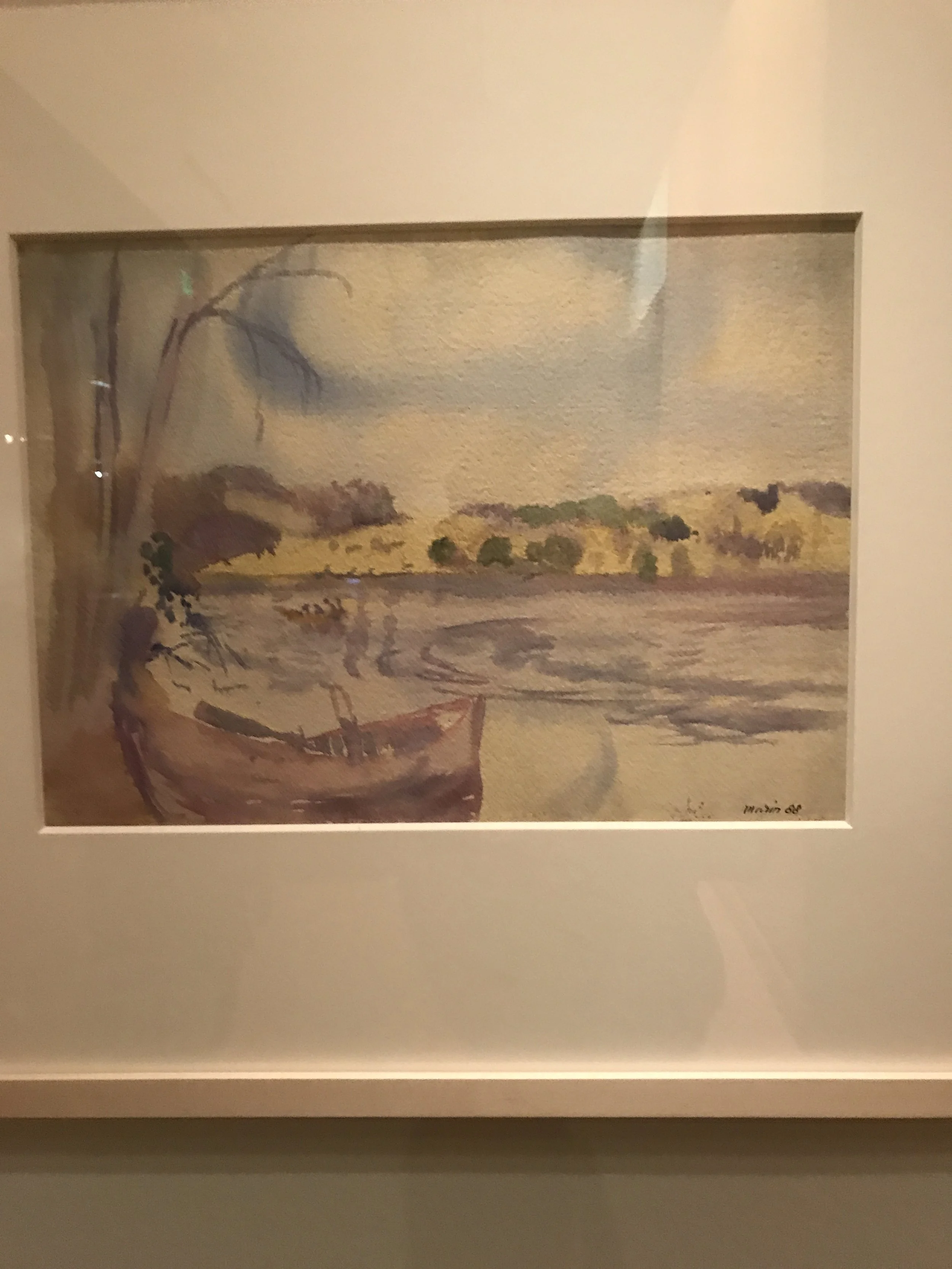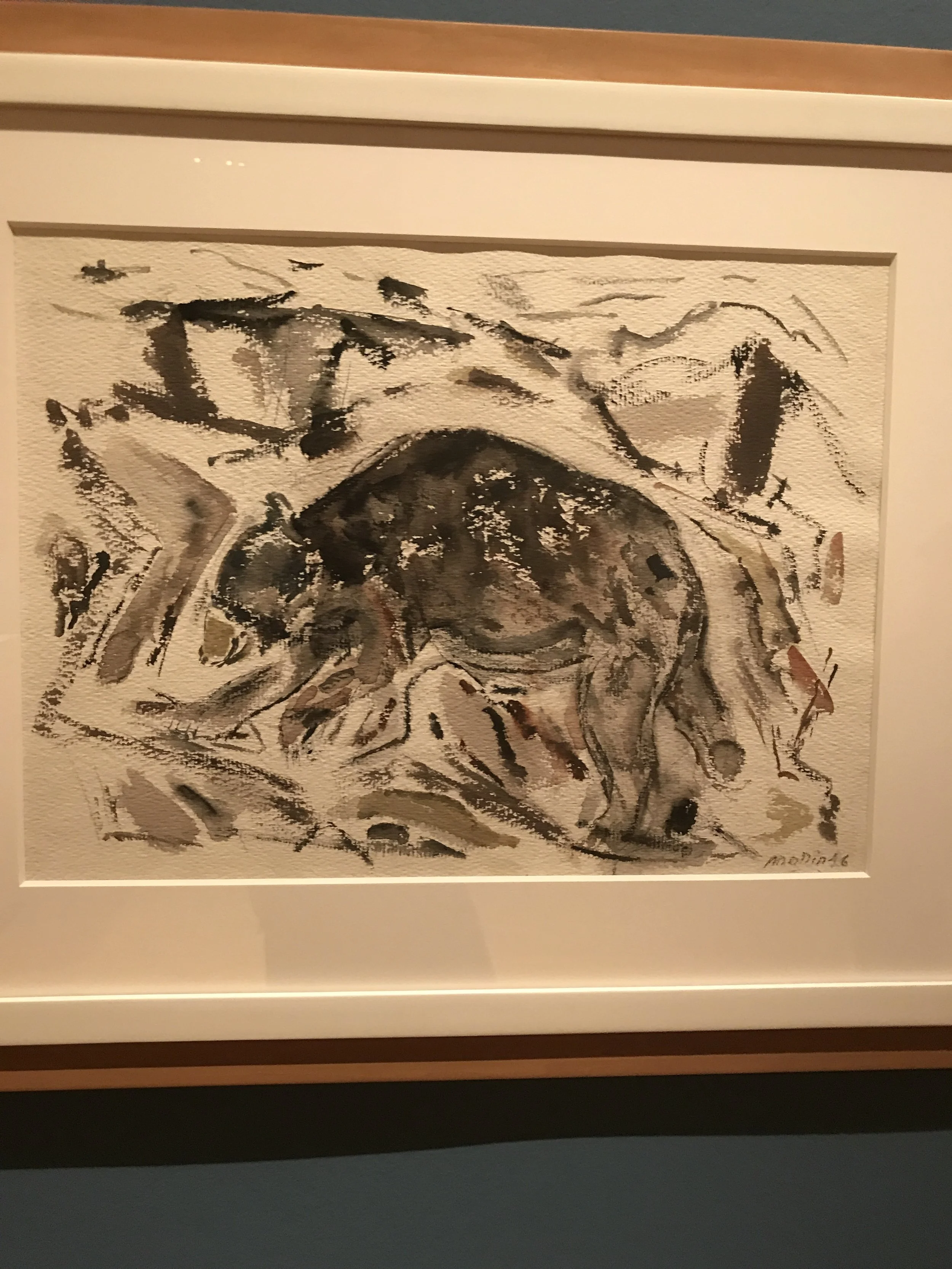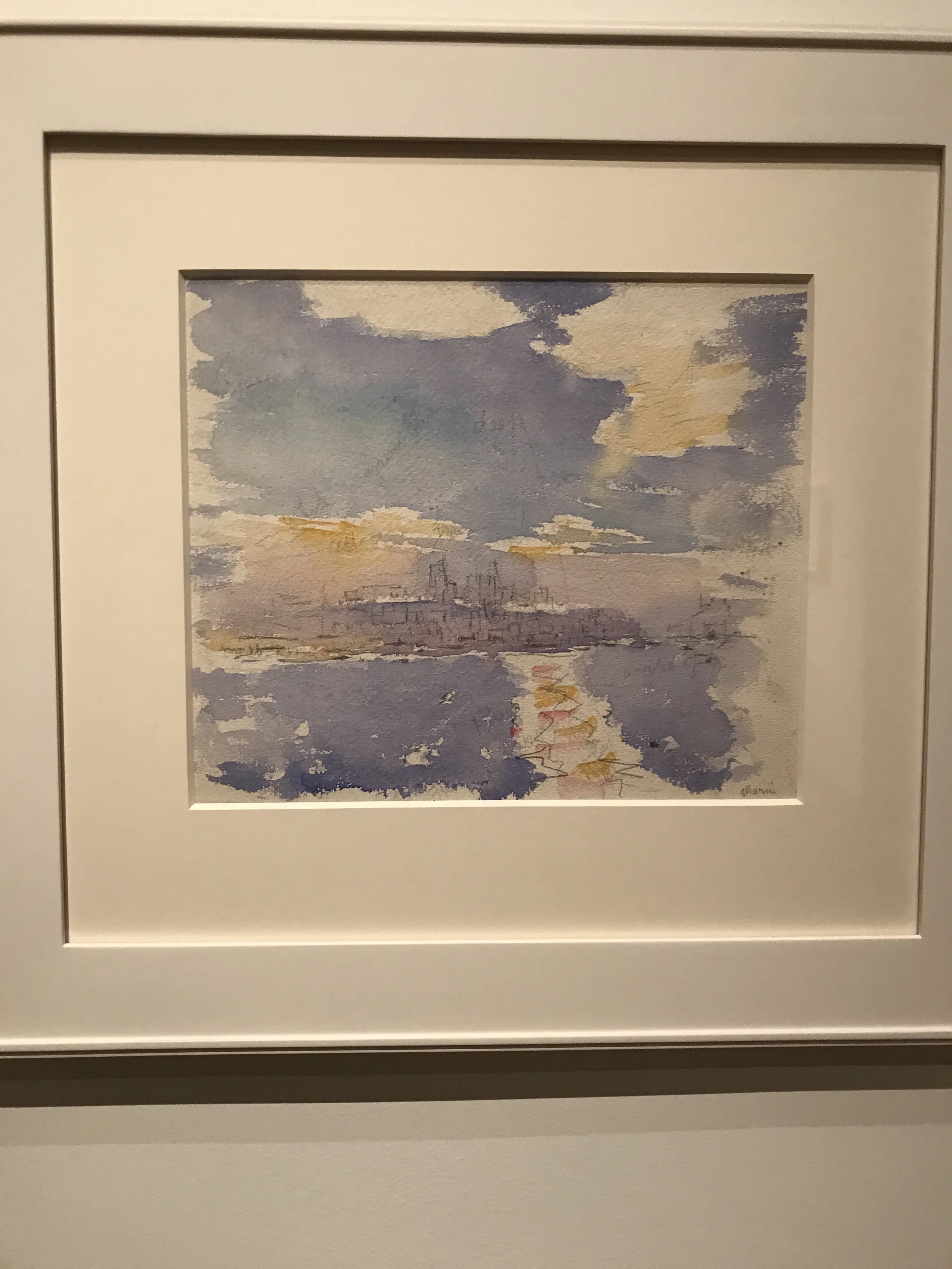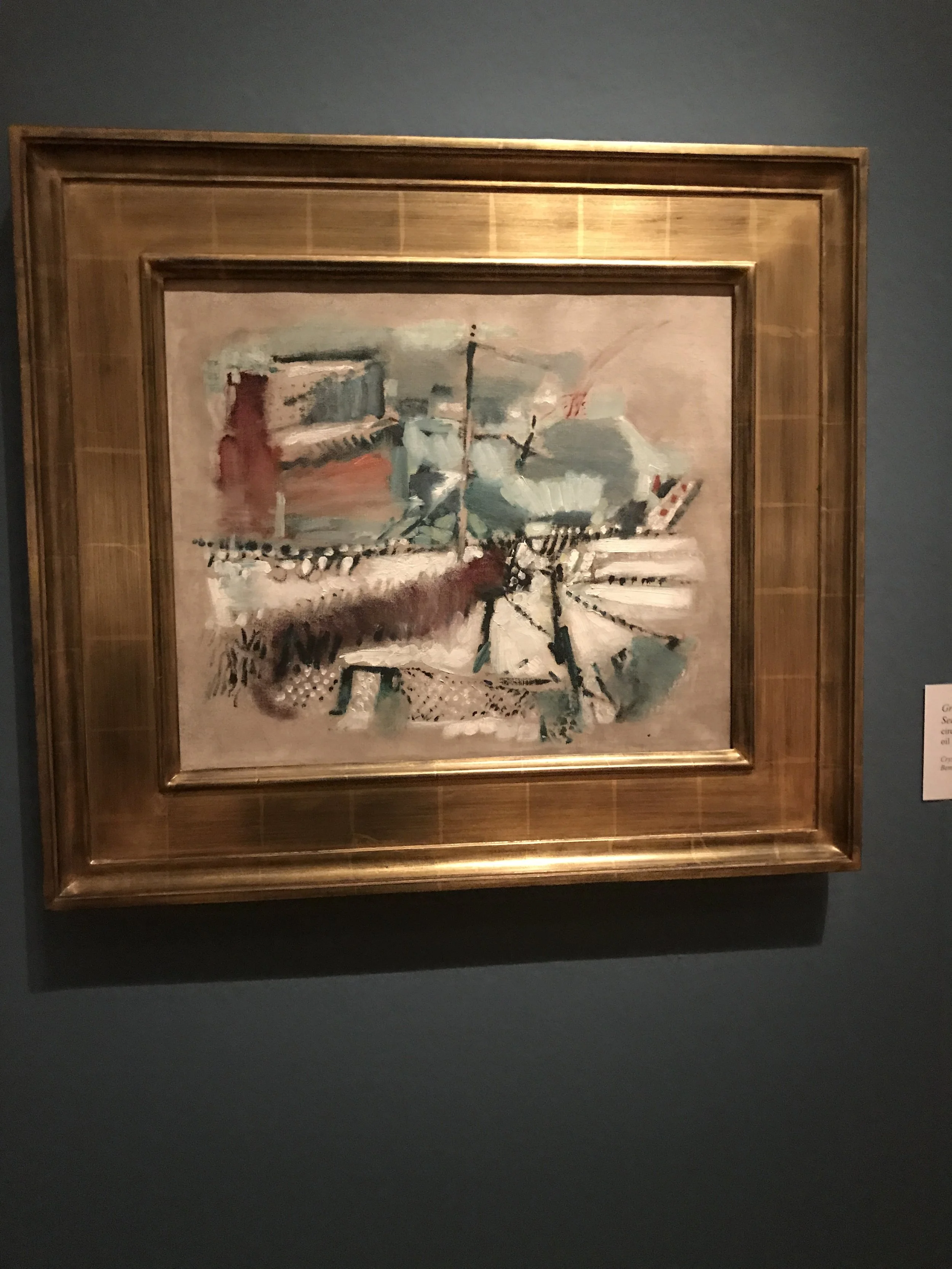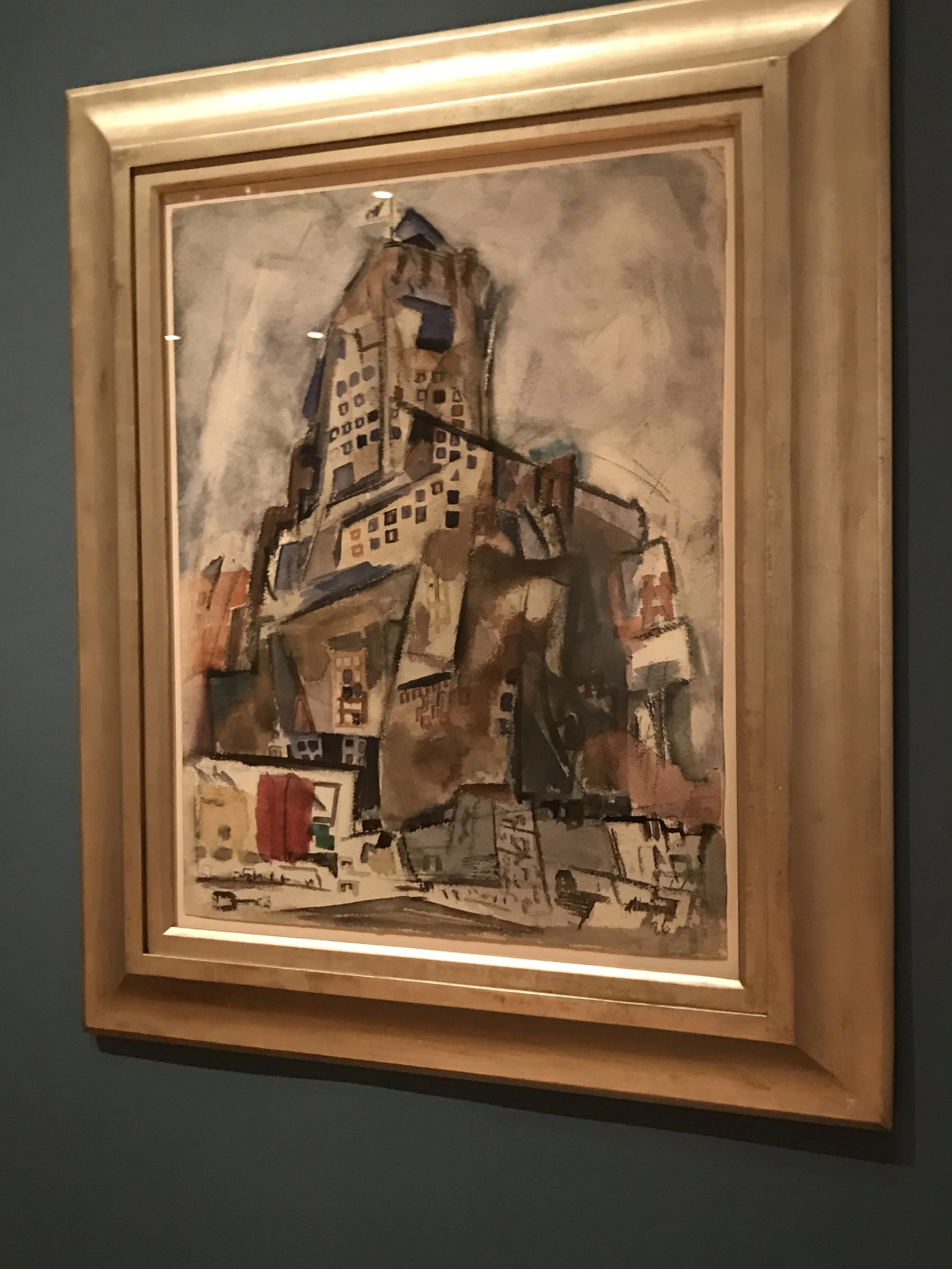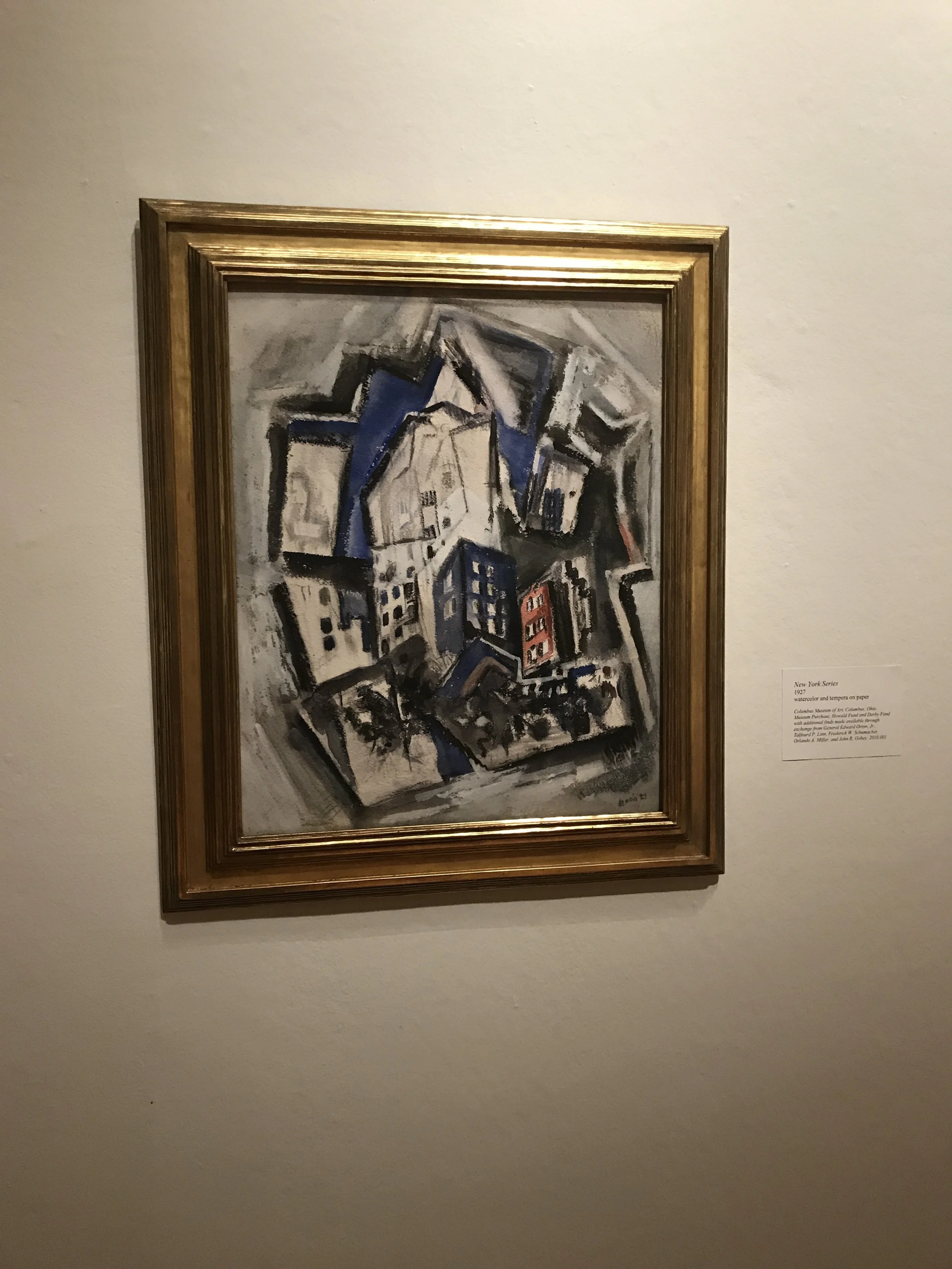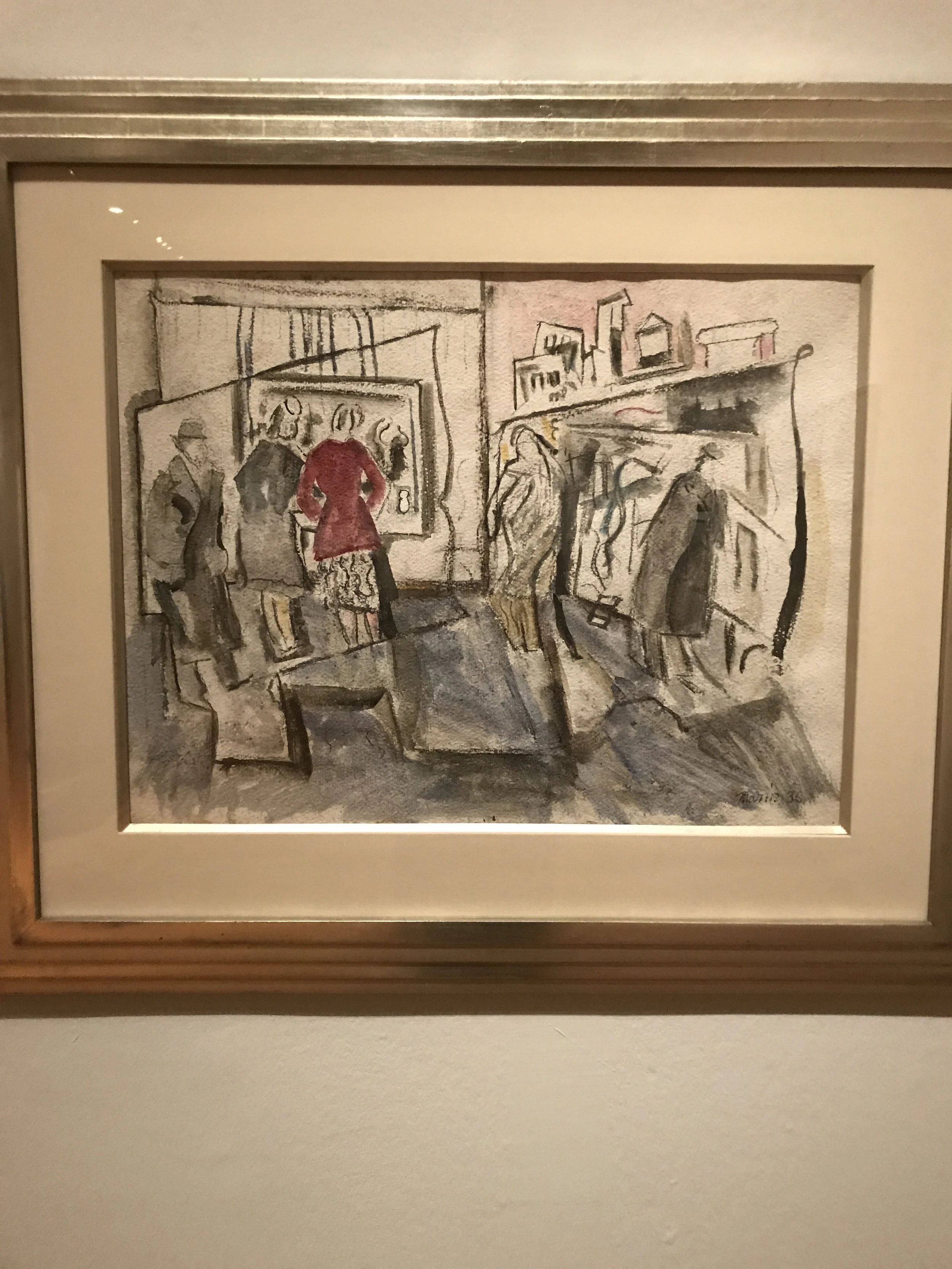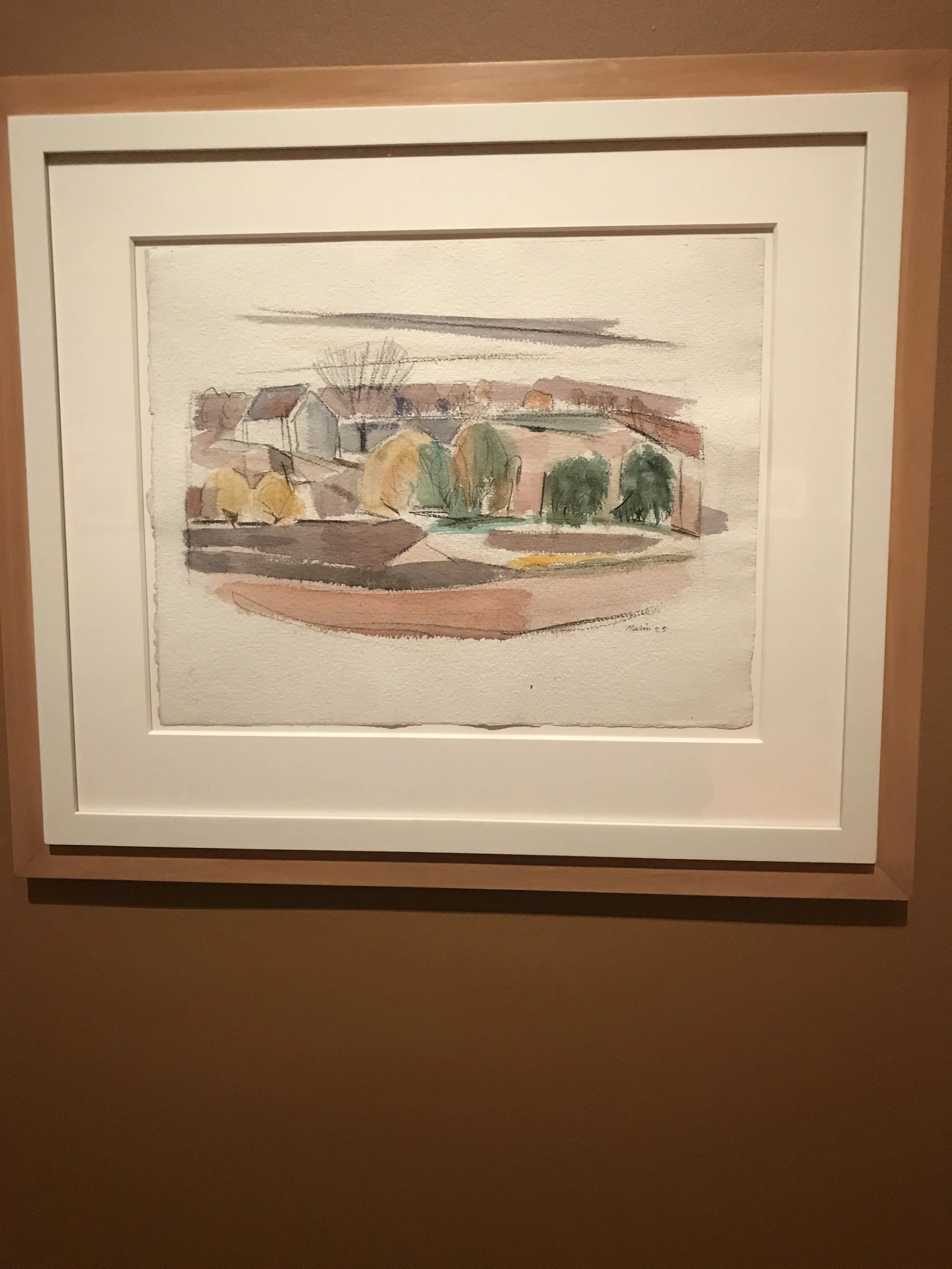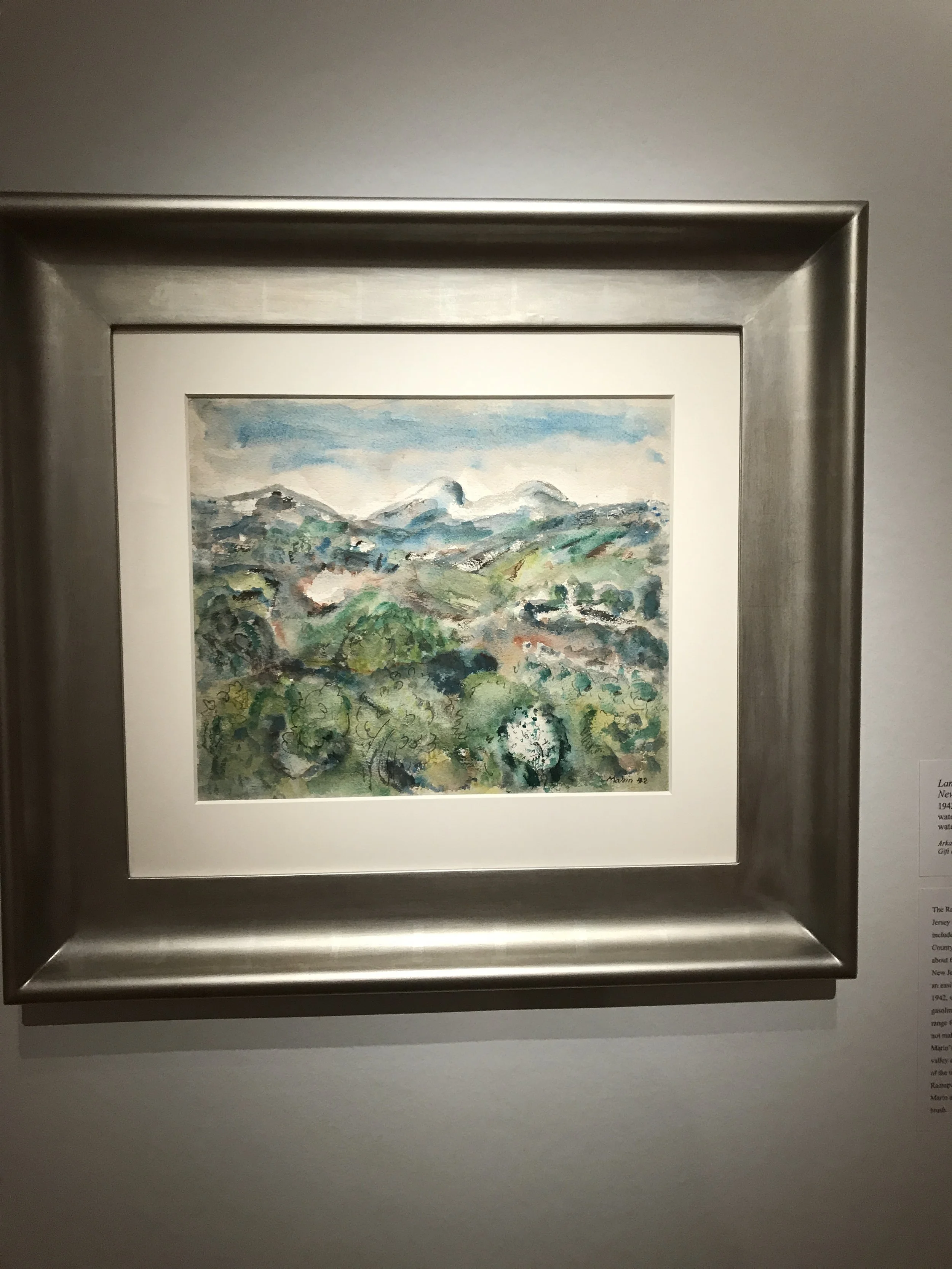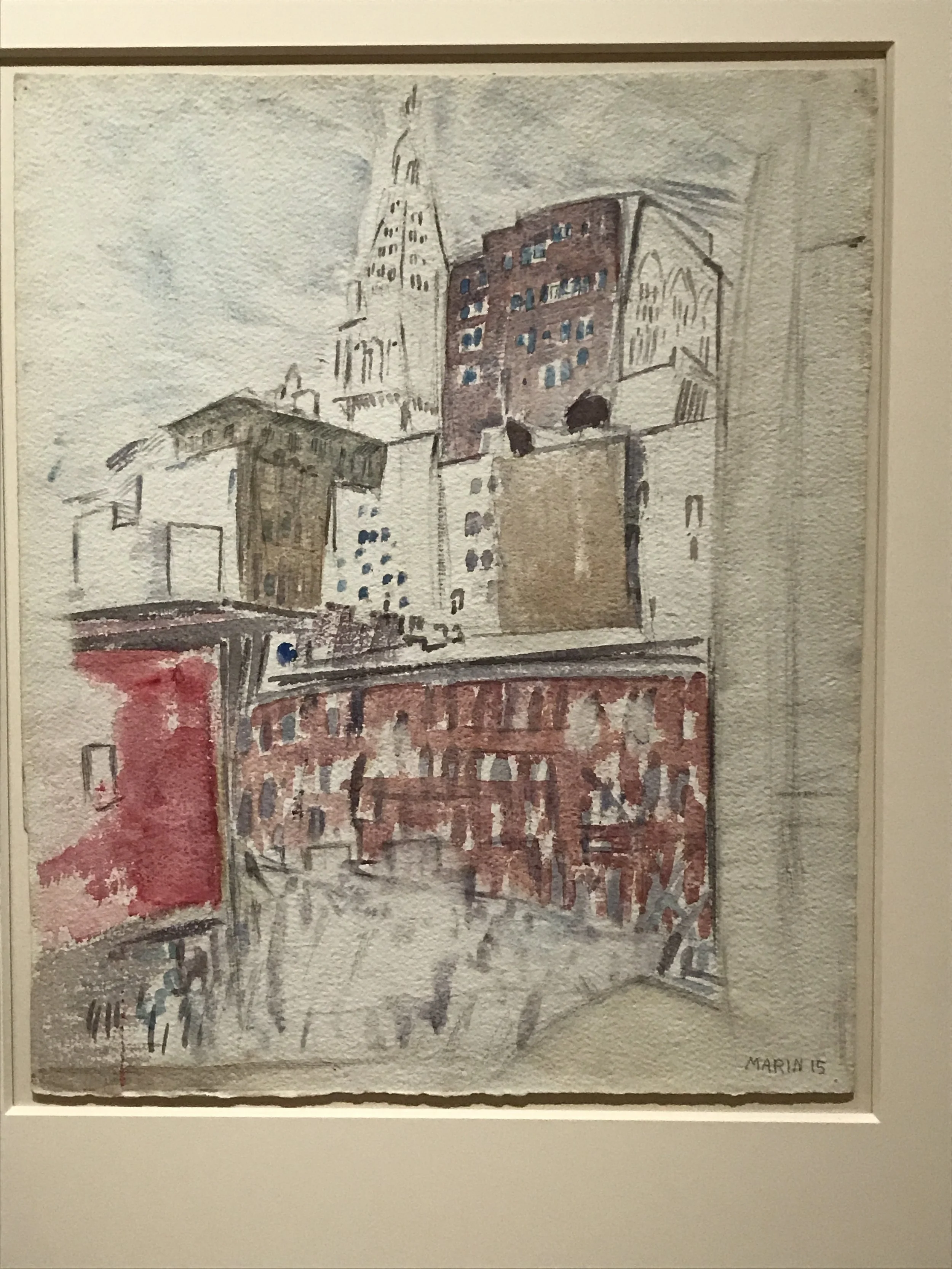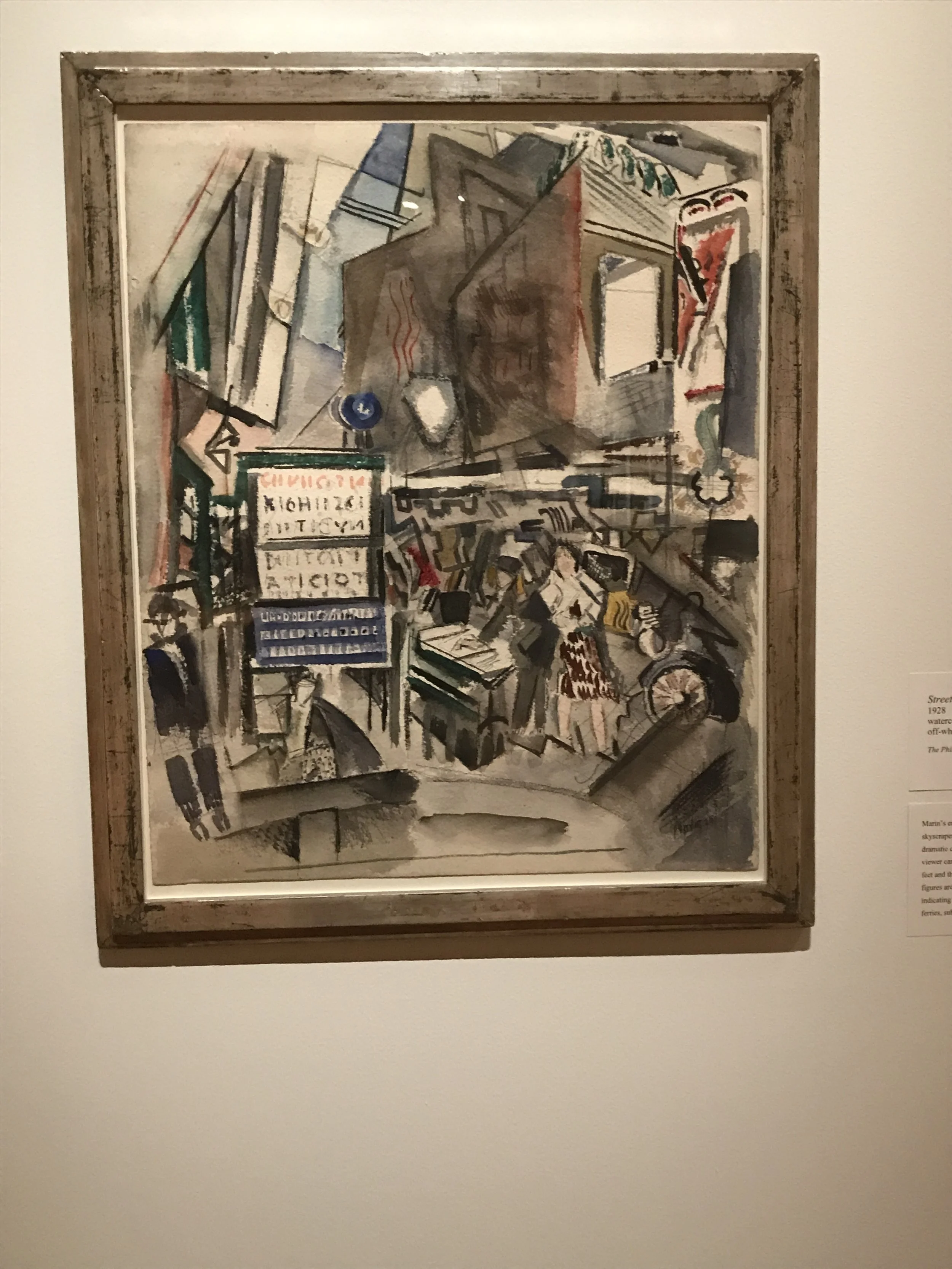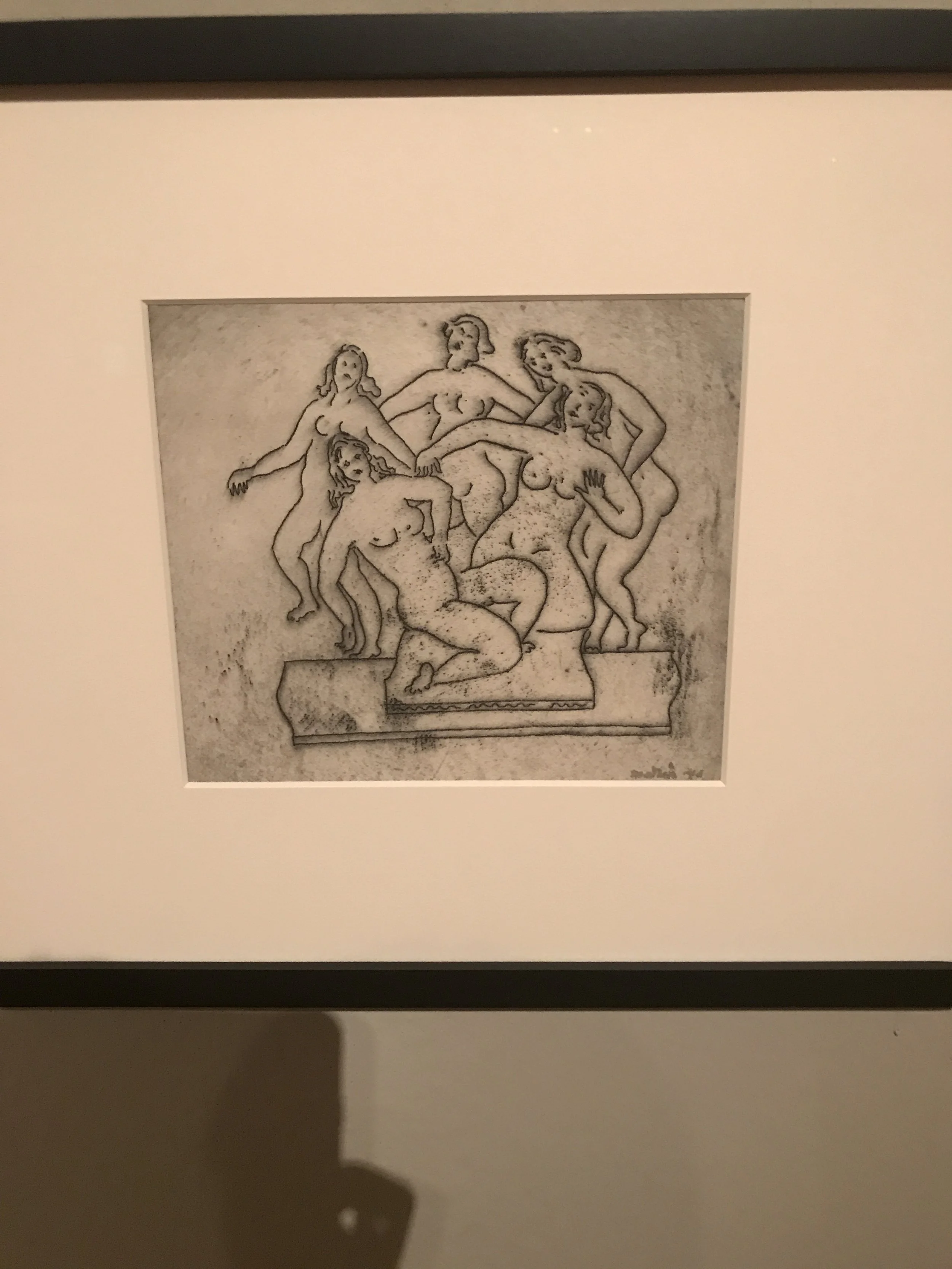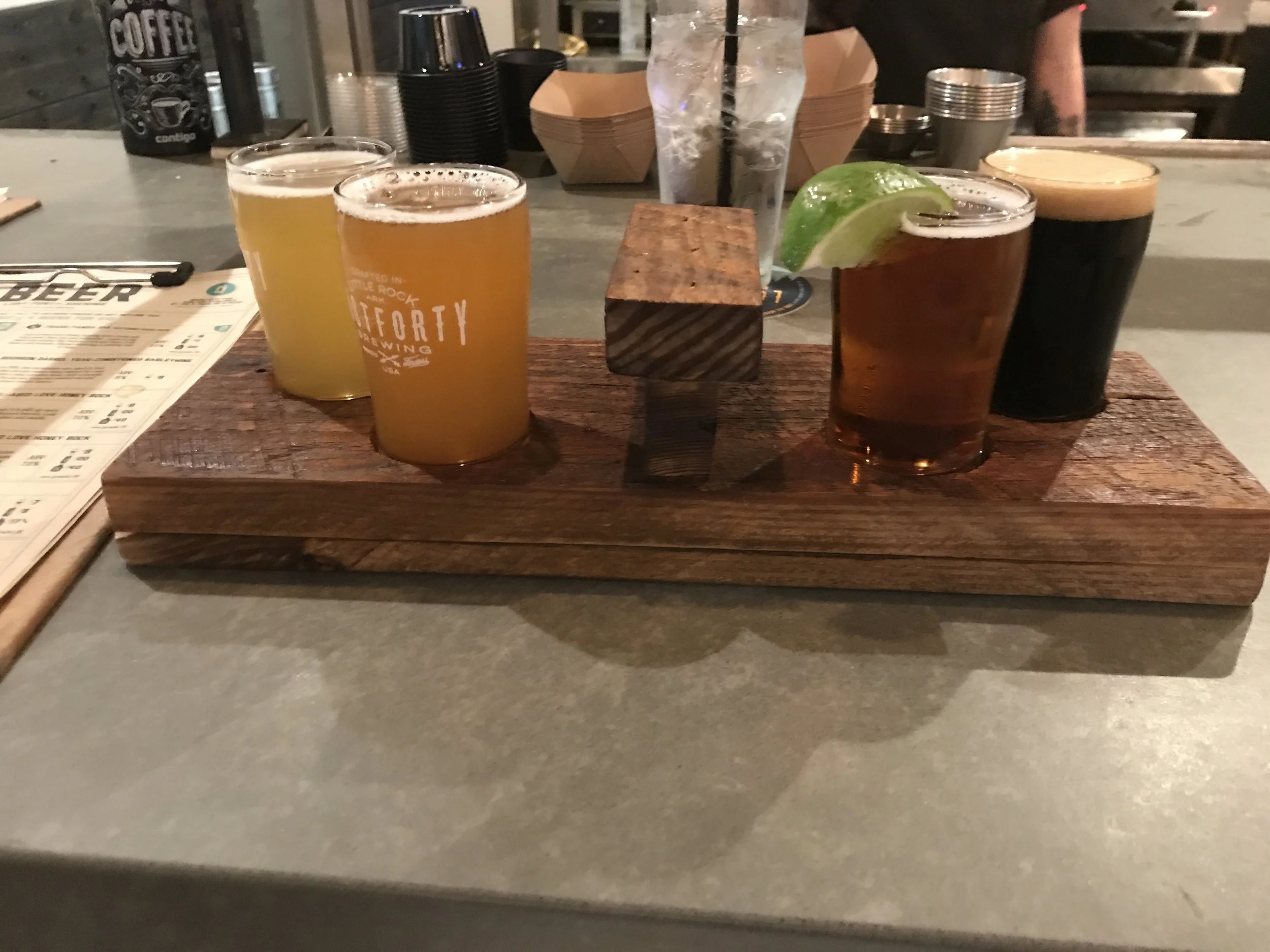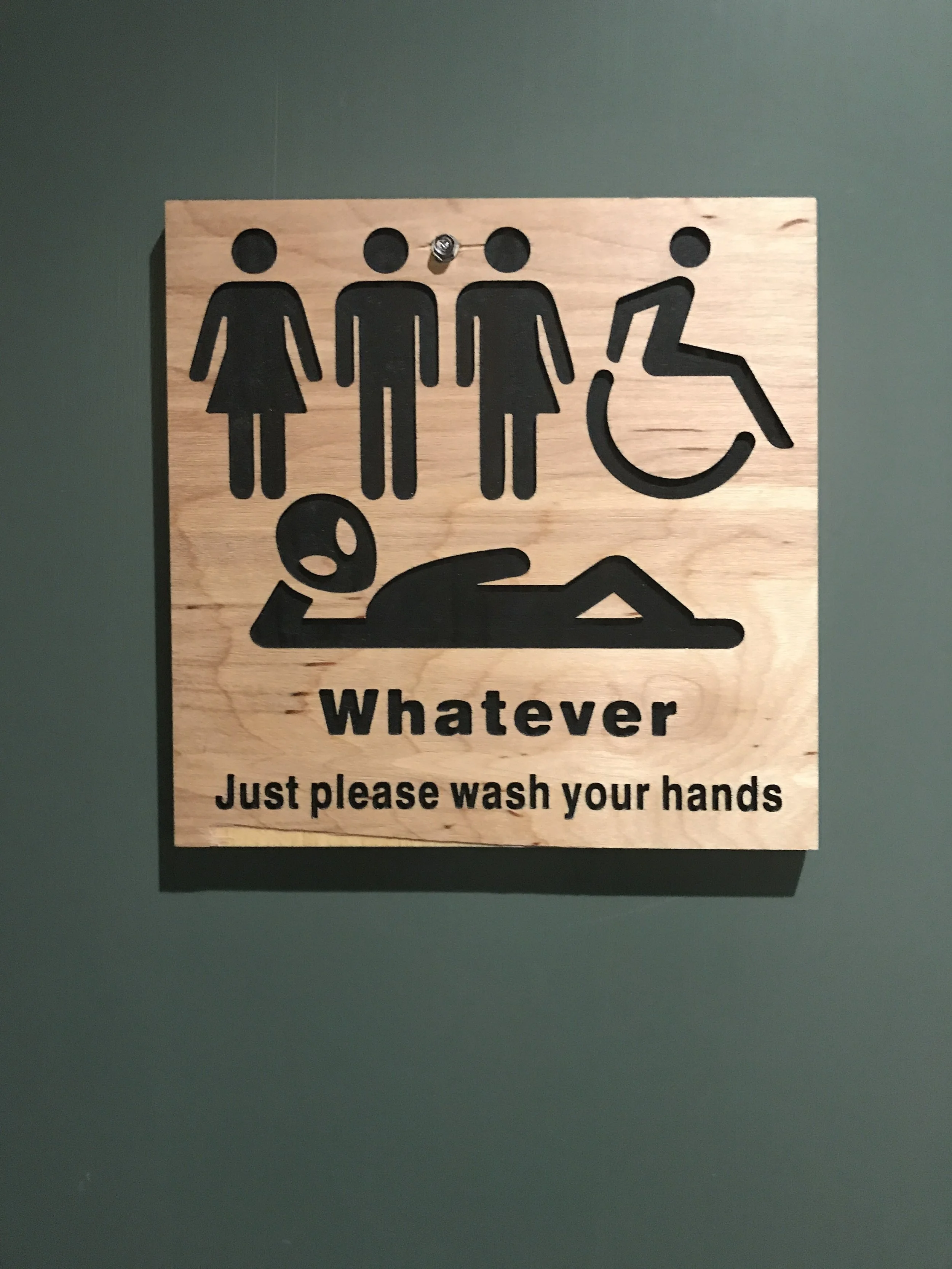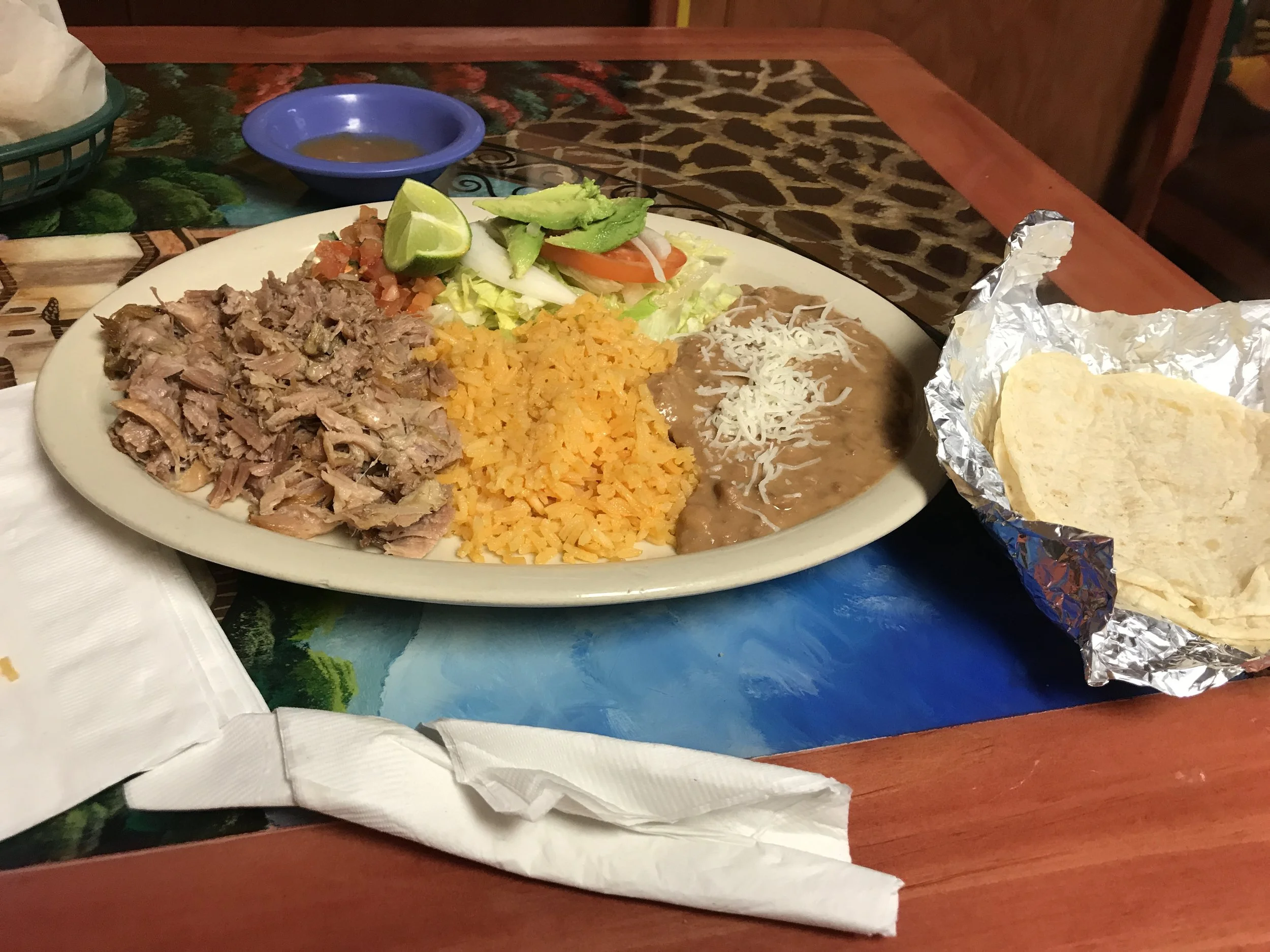Arkansas Day 1 - Protests, Presidents, and Purses
My first full day in Arkansas began with a trip to River City Coffee. It was a crummy rainy day, but the coffee shop was cozy and the barista was friendly so I would have been extra happy to be there even if the coffee didn't also happen to be delicious. I got something called the Trifecta, which was like a mocha but with white, milk, and dark chocolate syrups. Normally this would be too much for me but it was cold out, the name sounded fancy, and the barista really sold me on it so I couldn't resist. It tasted pretty great and decadent.
After acquiring my morning coffee, I went to what to me was the most famous spot in Little Rock, Little Rock Central High School, site of one of the most famous battles over school desegregation in history. The school is much bigger and more beautiful than I imagined, and it still looked very almost identical to how it looked in photos from the 50s. Except now they have a really nice statue dedicated to the civil rights movement, which I feel like if it was there then people would have opinions had about it.
The school is still an active high school so you can't go inside unless you make an appointment, but if you want your history fix there's a free visitor's center across the street with some really nice exhibits about the Little Rock Nine. The persecution those nine kids went through just for trying to get a good education was really unthinkable.
The young men and women making up the Little Rock Nine were so young to be as brave as they were. The eldest of the them, Thelma Mothershed, was just 16, and the youngest, Carlotta Walls, was only 14. They were all students in good standing who felt like if they didn't step and volunteer to begin the integration of Black students into Central High School, it might never happen. The Black schools received a fraction of the funding white schools got, and students talked about receiving all their supplies third hand from white schools to the point where the new desks they'd receive might only have three legs and their books would have smeared pages. Thus even terrible white students had way better resources and access to information than the best Black students, which I think contextualizes why the integration effort was worth it for these students despite the push back they knew they'd receive from the white community. The reason it was only nine Black students (there obviously wasn't that few qualified to go to Central) was that along with the very real threat of danger for just trying to go to class, just because the school would be desegregated didn't mean that the extra-curricular activities would have to be so any Black students trying to integrate would have to sacrifice all sports, clubs, and other activities. The Little Rock Nine knew all this going in, and they still went for it which to me makes them much braver than any nine teenagers really has any right to be.
In case you don't know your history, the Governor of Arkansas, Orval "Huge Piece of Shit" Faubus's, reaction to the school desegregation was, to put it mildly, not great. It was not great to the point where even a lot of pretty racist people were like, "Whoah that's too far." He sent in the Arkansas National Guard, armed adults, to make sure the Little Rock Nine, unarmed children, absolutely could not enter the school. It got to the point where President Eisenhower had to send in armed Federal Troops to take control of the National Guard away from Faubus, and provide an armed guard to escort the students into the building.
The first hurdle into the building was over, but it's not like the students were treated well by their white peers. They were bullied, taunted, and had things thrown at them and they couldn't really react in any way because the school board was looking for reasons to kick them out. When one of the nine, Minnijean Brown, was suspended for dumping a bowl of chili on a group of white boys who were teasing her in the cafeteria, white parents (including teachers!) started circulating pamphlets that said "One Down, Eight to Go!" These were the goddamn adults!
Our old pal Faubus, reeling from being emasculated by the president in front of all his constituents, had one last "ingenious" ploy to prevent school desegregation. He reasoned that they couldn't integrate the schools if nobody was going to school, so he decided to shut down all the public schools for all students for a year. And the people of the town voted for this! WHAT? There was just a year where nobody went to school.
I really had a tough time wrapping my head around how the objection could be so strong to something that would have no negative impact on these white people. If anything, because the nine were all good students they might raise the overall test scores for the school leading to more funding and helping their stupid kids. The level of hate and racism needed for adults to be so cruel to children (one of the nine talks about an old woman spitting on her as she walked to school!) completely boggles my mind. There's one picture though that put things a bit into perspective. In a crowd of white protestors, easily the youngest member of the crowd is holding a sign that says "Put me down as No Nigger Lover". The boy in the picture is decidedly too young to have any clue what he's talking about, so it makes it clear to me that he had help from his parents. That level of intolerance can only come from teaching 'em when they're young and too impressionable to question how little sense any of it makes. All the racist people in the photo look like they came out of an episode of Leave it to Beaver, which is a very concise way of showing that that made up happy version of the 50s really only existed on TV. Things aren't even close to perfect now, but I think that at least it's a lot harder to be so isolated to just one community that you only ever get one narrative.
On a lighter note, I was really happy the center had some recent recordings of interviews with the Little Rock Nine as adults. They all (or almost all, Jefferson Thomas has since passed away) still hang out which is really sweet. It makes sense though, they were really all each other had during the whole ordeal. They also all had pretty successful lives, and somehow didn't hate the white people who tormented them so badly. One of the nine put it really beautifully when she said: "I don't have any hate in me, because I wasn't taught hate at home and I grew up around different kinds of people". I love that so much.
I was also really happy to see this quote by John Lewis, who I've already called a bad ass on multiple occasions, in part because in a fun coincidence this was the day it was announced that he'd be Harvard's graduation speaker this year. All I got was Mark Zuckerburg.
My next stop was Little Rock's other biggest political claim to fame, The William J. Clinton Presidential Library. The Library is located in William J. Clinton Presidential Park which is a crazy coincidence. Besides the library, the park also contains the historic Chocktaw Station, a former railroad Station that is now the Clinton School of Public Service; a former railroad Bridge turned pedestrian walkway over the Arkansas River; and a monument dedicated to Anne Frank featuring a sapling from a tree that stood outside the building where the secret Annex was.
The first thing inside the Library building was Bill Clinton's presidential armored limousine with a brief history of Presidential limos. It's amazing how much technology goes into making those cars as safe as they can possibly be. My favorite fact to learn was that FDR's armored car was the same armored car that used to belong to Al Capone, because the D in FDR stands for "Damn, it feels good to be a gangsta"
The next exhibit was a series if photographs from the campaign trail for both Clinton campaigns. I was technically alive during Clinton's presidency, but I didn't realize what a big deal his first campaign was. He was the first viable Democratic candidate in nearly 12 years, and he ran a youthful, revolutionary campaign designed around embracing modern technologies and appealing to previously neglected communities of voters. His community outreach during the campaign was really well done, and he did a good job meeting voters directly and more than a few people voted for a Democrat for the first time in their lives for him. I really got a kick out of the photos because there was a good mix of candids in with the press photos. The 90s were such a fascinating time for fashions. My favorite recurring themes were whenever Bill was just playing a saxophone or Al Gore was looking like big goofy nerd. I really like Al Gore, but whenever he's hanging out with the Clintons, you can't help but think they totally would have bullied him in high school.
My favorite photo was easily this picture of Bill and Hillary playing ping pong together, because I can't imagine something like this happening in 2018 in a million years. There was a time when all of their (public) problems were ahead of them and they could actually have fun together. The 90s were a more innocent time. I also love how into the game Hillary is. She's gonna bring that whole table down.
The special temporary exhibit was pretty insane while I was there. They had the actual documents from the Louisiana Purchase (easily Bill Clinton's greatest accomplishment). For whatever reason, I never assumed those documents would be available to the public let alone travel around the country. It was so cool to see that two little pieces of paper were able to essentially triple the size of our country.
The exhibit also some other artifacts from the en involved with the purchase, chiefly Napoleon, Thomas Jefferson, and James Monroe, as well as the men and women who explored the Louisiana territory once it was purchased, chiefly Lewis, Clark, Sacajawea, and a man named William Dunbar, who was the first American explorer to map out what would become modern day Arkansas. The spookiest item in this collection was a death mask of Napoleon. He looks like such a peaceful little warlord.
Next up was a recreation of the Cabinet room in the White House. While I was there, the seats were filled by elementary schoolers and their tour guide was wearing a big Dr. Seuss. It was almost a too-on-the-nose metaphor for our current cabinet.
The main exhibit was a timeline of Bill's eight years in Office complete with artifacts, photos, and documents related to different moments, including Bill's own Saxophone.
I actually got surprisingly emotional reliving the 90s and seeing how much the world has changed in such a short amount of time. The museum did very little to change my impression of Bill as a person (pretty terrible), but it did make more impressed with him as a President. For a decade that started with a whole lot of strife, the 90s ended on such optimistic notes (minus the whole robot apocalypse scare) with relatively good global relations, the beginning of the internet age, and no deficit! We had one of the biggest periods of expanded social programs and education services since LBJ tried to kickstart his Great Society. Bill doesn't deserve all the credit for all of these, but he played his part well (until he didn't), he surrounded himself with smart people and actually listened to them, and he got all those things done with a huge amount of opposition from House Republicans, especially Speaker of the House and holder of 84 ethics violations, Newt Gingritch. I liked that whenever they chose to show Newty boy they picked photos that made him look nearly demonic. To be fair, he once said, regarding why he was divorcing his wife, "She's not young enough or pretty enough to be the wife of the President. And besides, she has cancer," so he might be kind of evil.
he just makes my skin crawl
Some of the more items in the exhibit were letters that different celebrities had sent Bill, including Paul Newman, Whoopi Goldberg, Elton John, and even political mastermind Tony Danza.
My favorite White House related artifacts though were the different Presidential gifts the Clintons had received in Office. They all have to be on display because technically gifts to President have to technically belong to all the public otherwise they become a bribe. The gifts represented some pretty amazing pieces of art from around the world including paintings, ceremonial swords, sculptures, a Dale Chihuly chandelier, and a bike with "Mr. President" written on it. I hope Bill rode that everywhere.
The last little exhibit was a scale replica of the Oval Office as it would have looked for Clinton, minus any interns under the desk (it's an easy joke, but I had to make it and honestly I think the museum should lean into it). I've never been inside any version of the oval office so all jokes aside, I was pretty impressed by it. The only actual big red button on the desk is to an intercom, so that was a little comforting.
As I was leaving, I saw that the museum gift shop was selling some jaw-droppingly bizarre posters:
At this point, I had worked up quite the appetite so I went to the place my friend from Little Rock said had the best burgers, The Root Cafe. I could tell from the weird art in the parking lot and the bathroom that I was going to really like this place long before my food came out.
My burger was incredible. I got cheeseburger with lettuce, tomato, yellow cheddar, and garlic mayo because I like garlic so much that it can even make mayo okay. The 1/3lb patty was made from all locally raised beef, and it was so juicy and tasty, and cooked to perfection. The bread was also especially good because it's from a local bakery. It was a pretty astounding lunch, and I got a pretty great coffee too as an added bonus.
The restaurant happened to be right next to the Esse Purse Museum, which is reportedly one of only three purse museums in the world and the only one in the United States. I can't say as I'd ever given much thoughts to purses before, but I figured if it was the only purse museum in the country I'd be remiss to skip it. I'm really glad I ended up going because the museum turned out to be way more interesting than I imagined. It wasn't just a collection of cool looking purses, although there were indeed some pretty cool ones. The hundreds of purses were curated so as to tell a story through material objects of the history of the 20th century and in particular women's roles in it. It was a really fascinating idea, and it was very cool to see how purse shapes and designs changed in response to world events, art trends, and morphing ideals of femininity.
The displays were arranged by decades and the purses in each display were accompanied by periods objects that might have been carried by women from that time period (who were able to afford purses). Some highlights that struck me in general trends over the 20th century were as follows:
1900-1909: Purses were very small because women were not actually allowed to own much private property that would need carrying around. They were more aesthetic symbols of class, and were generally handmade.
1910-1919: You start getting compartments for carrying around cosmetics becauseit is no longer considered risque for women to put on makeup in public. (whenever these old-fashioned rules seem really regressive, it's pretty insane to think they were only 100 years ago)
1920-1929: Art deco and synthetic materials really hit the scene. Plastics are very popular. Purses start to be mass produced, and more accessible to women at large, but then WWI and the Depression happen so some of that boom starts to slow down.
1930-1939: Honestly very similar to the 20s but because of prohibition there tends to be more sneaking of booze in purses as opposed to make up.
1940-1949: Purses get bigger as more women enter the workforce during WWII and actually need to carry important things with them. LL Bean and Christian Dior enter the purse game (sort of different ends of the fanciness/practicality spectrum)
1950-1959: Increased emphasis on domesticity to ward off that troublesome spike in wanting equal treatment after breaking into the workforce. The advent of television marketing emphasis needs for both day purses for practical activities and evening purses for being fashionable at your husbands work parties. Very Stepford Wives-y time in terms of marketing tones and style. Coco Chanel becomes a sensation.
1960-1969: More emphasis on pop art designs appealing to young women in the counterculture. One of the more diverse ranges in what's fashionable from very cheap handmade hippie purses to really sleek high fashion purses.
1970-1979: Tail end of Hippie styles and advent of disco. So. much. denim. Apparently at the time women wearing jeans was a big change up, and purses that more practically went with the looks of casual and dress pants as opposed to dresses got more popular
1980-1989: All gross excess. Super yuppie and gaudy. Lots of synthetic materials and ridiculous price points. Purses go back to being a big status symbol.
1990-1999: Push back against 80s excess, with more of a focus on practical purses that would last a long time and carry a lot. This explains a lot as more and more working mothers have become consumers who need a handbag that can kind of go between professional and domestic spheres. Grunge becomes a thing for the young people, but the 80s never fully go away.
I feel like I learned so much new information, but also got to see familiar historical moments through a totally new lens so I was super into this timeline arrangement.
My purse-onal favorites (dear god, I'm sorry) were this horrifying purse made out toad's head, a more whimsical wicker purse shaped like a monkey, and a really need pop art display of mannequins with purses where the heads should be.
The special temporary exhibit was called Unmentionables and focused on trends in underwear design and style over the 20th century, with a focus on women's underwear but a quick nod to the fellas. I think the thing that I was most surprised to learn was that bras were initially designed to restrict breasts rather than support them, back when flat chests were considered the fashionable ideal. It was sort of depressing how much breast aesthetics factored into underwear design to a much greater degree than women's comfort and mobility. It's almost like the underwear was designed almost entirely by men and then also marketed towards men, because women were for most of the century not expected to buy their own clothes. Even contemporary bra ads intentionally court the male gaze in order to increase their odds of being bought as a gift for a woman as well as just bought by a woman. It's clever marketing psychology, but kind of shitty, especially in the decades when underwear was elaborate, cumbersome, and painful. As for trends in Men's underwear it was actually pretty interesting to learn that boxers existed as early as the 1920s but didn't start to become popular until WWII. The biggest men's underwear revolution came though in the 30s when the Y-front was invented . I can't believe people, male and female, lived so unnecessarily bundled up for so long.
After the purses, my next stop was the Arkansas Arts Center. The center features a pretty extensive collection as well as special exhibits in the museum portion, but there are also community spaces and a theater as well. The museum part is free though which made it extra appealing.
The first special exhibit displayed the works of an artist named Susan Schwalb, who made a name for herself by taking the ancient Renaissance artform of metalpoint and bringing it into the modern age of abstract expressionism. I had never heard of metalpoint, but it's a kind of art done when a fine metal stylus (usually silver) is used to draw onto specially coated abrasive papers that tarnish the metal and leave metallic markings. Because I'm not the hugest fan of abstract expressionism, I was more impressed by the methodology and experimentation than the finished products but some of them certainly looked really cool.
My favorites were then, unsurprisingly, Schwalb's earlier representational studies of different flowers. The detailed works are almost photo-realistic minus the soft metallic luster and they look really pretty. To me they show how much objective talent Schwalb had as a draftsman, and that she could have basically done anything she wanted with her medium but the abstraction just called to her artistic impulses. The one abstract piece I really liked was the one on the lower right below, because it used a different combinations of metals and papers to create a really interesting and oddly dynamic textured image.
At this point as I began to make my way toward the museum's main collection, I bumped into a guy who I recognized as the only other person who had just been at the purse museum. He also recognized me and we started up a chat. The coincidences just kept coming, as he had also been to the Clinton Library this morning, and, even stranger, he was also on a road trip where he was trying to drive to every state, except he had started from Utah. I had found my West Coast doppleganger. It was totally eerie, but also super cool to get to exchange tips on the states we had been to that the other hadn't yet, and to reminisce about the shared state experiences. We ended up chatting while we walked throughout the rest of the museum, and it was really nice to have found a companion.
The museum collection with works going back from the Old Masters up to the Impressionists, and featured some pretty cool pieces ranging from Old Dutch etching to beautiful early American landscapes.
My favorites from this part of the collection were an impressive painting of the mythological Andromeda by a French artist named Odilon Redon in that Post-Impressionism period nor, a stunning painting of a sunsetting on a river by Monet, and a wonderfully unflattering medieval etching of a fat, dead pope.
Next up came the modern and contemporary stuff, which was both weirder and more up my alley, including more of a focus on mixed media pieces.
My favorites from this wing included: a massive installation by Japanese-American artist, Wendy Maruyama, featuring hundred of replicated tags from all the people who were forced into Japanese Internment camps in the US; a classically haunting painting by Andrew Wyeth of a mysterious woman fleeing an ominous farm; an oddly dreamlike painting of women freaking out in a field about the moon called Moonstruck Girl by Carroll Cloar; Some woodblock optical illusions by an artist named John Digby; a wild painting of a wildly dressed up chimp wildly named 7:00 P.M. EARLY FALL *FULL MOON* WHILE NAUGHTY BETTY WAITS.. by Donald Roller Wilson; a wonderfully winding farm scene by Thomas Hart Benton; a very industrial mural study by Hildreth Meière entitled Labors of the Hand; a powerhouse cubist portrait of two women by Diego Rivera; and an amazing wooden sculpture called Table with Fruit and Books by Wendell Castle that is actually all one connected piece even though it looks like smaller pieces stacked on a table.
In the middle of this modernist wing was a little alcove filled with the lush vibrant watercolors of a the French artist Paul Signac. Signac dabbled with impressionism, pointillism, and straight up representation but all his pieces were really pleasantly colored treats for the eyes. These watercolors all come from a trip where he intended to paint every harbor of France.
Back in the main lobby, they had some pretty impressive new acquisitions including an ominous landscape painting by William Beckman; a shockingly photo-realistic black and white watercolor of waterfalls by Chris Doyle; a Hopper-esque painting of a man alone in a hotel lobby by John Register called the Colorado; and a trippy abstract painting by an artist named Val Briton.
The clear star of the lobby though was a massive ceramic sculpture entitled Western Civilization: Processional by Viola Frey, featuring a little old lady surrounded on all sides by a menagerie of different odd cartoonish creatures. It was weird as hell and I loved it.
On the other side of the lobby was the last special exhibit on the works of modern master John Marin. The exhibits emphasis was on Marin's process and featured lots of sketches and early watercolors alongside finished paintings. He had a really cool style that sort of blended the lines between Cubism, Impressionism, and more clear representation.
My favorite pieces were this srene watercolor landscape, some busy cubist city scenes, and as far as I can tell his only dabbling with mythological painting in an image of several naked muses.
At some point in the Marin exhibit, the conversation between me and my doppleganger went down more of a political rabbit hole as we discussed the Clinton library. He turned out to be a fairly staunch libertarian, and I turned out to be quite the opposite which if anything strengthens the doppleganger hypothesis. Even though we had very different opinions, our conversation remained really interesting and civil even as it crossed the hour mark while we continued talking outside of the museum. I really wanted to try to genuinely understand where he was coming from to make sure I wasn't just blindly disagreeing with him. As far as I can tell, the root ideological differences between my own beliefs and libertarianism are that they believe people will generally act in their own best interest and that people have a right to always keep what they earn. I would really like to believe both of those things, and I think if they are true than libertarianism would have a chance. Alas I feel that psychological research suggests, that in general human beings are actually shockingly bad at planning for the future or even predicting how our future wants will change from our current wants. We evolved mainly to be good at not dying in the moment, because that's more urgent so all the living as a complex technological society is a little above our evolutionary pay grade and we're really all just trying our limited best. The second point might seem weirder to disagree because it makes really good practical sense that if you've earned something you should have, but I think on a larger scale everything is chaos so there is a huge amount of luck involved in every accomplishment we make even when we work really hard and utilize our own skills to the point where nothing is ever actually truly earned entirely by our own accord. Trying to practically govern a society with that belief however is a lot easier said than done, and I acknowledge that even though I believe it I could be either wrong or at the very least not particularly helpful in my beliefs.
After bidding my free market West Coast counterpart safe travels and exchanging instagram info so we could follow each other's respective journeys, I decided to try some beers at a local brewery my friend recommended called Lost Forty Brewery. I ordered a flight of their pilsner, hefeweizen, Mexican lager, and stout. In a surprise while I liked the stout very much, my favorite was actually the Mexican lager which had a really nice full bodied malty flavor excellently complemented by the wedge of lime tossed in. The two lighter beers were also extremely solid. Lost 40 also had the distinction of having a bathroom sign so awesome it almost stole the show away from the beers. That alien is straight chilling.
All that beer, made me hungry so I went to my friend's other big food recommendation in Little Rock, a cozy local Mexican restaurant called Taqueria El Palenque. The service was super friendly and the tortilla chips were dangerously bottomless so I was in a pretty good mood even before I had ordered. I ended up getting the carnitas, which came with rice, guac, pico, lime, beans, cheese, and fresh tortillas. It was amazing. The pork was very tender and flavorful, and the portions were unreal. I'm basically a human garbage disposal at this point and I couldn't even finish the whole meal. Being too full of good food isn't exactly a bad way to end a night though.
Favorite Random Sightings: A woman telling a story about falling through the ceiling of her second floor, getting stuck, and I quote getting a "scorched Hoo ha" from the hot water pipe (life is crazy and I'm glad I get to overhear it sometimes); Slim Chickens; Republic of Good Eats and Meats
Regional Observations: I guess when it rains it pours is a true idiom in Arkansas, because there was some pretty serious flooding there while I was visiting.
Albums Listened To: Paul's Boutique by the Beastie Boys (such mature cool production with such wildly immature lyrics); Pay Attention by the Mighty Mighty Bosstones (an underrated album in my opinion)
People's Favorite Jokes:
I didn't get any today but I really liked this old joke Norm Macdonald said on the episode of his podcast I listened to today:
Why do dogs always run for the door when they hear the bell ring? It's almost never for them.
Songs of the Day:
This video is ridiculous in every imaginable way
I remember that wall of Santas



